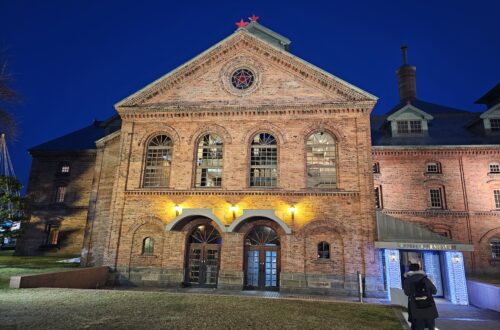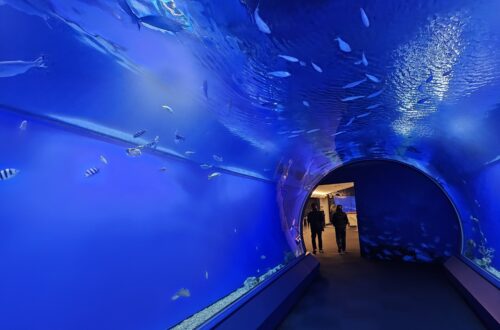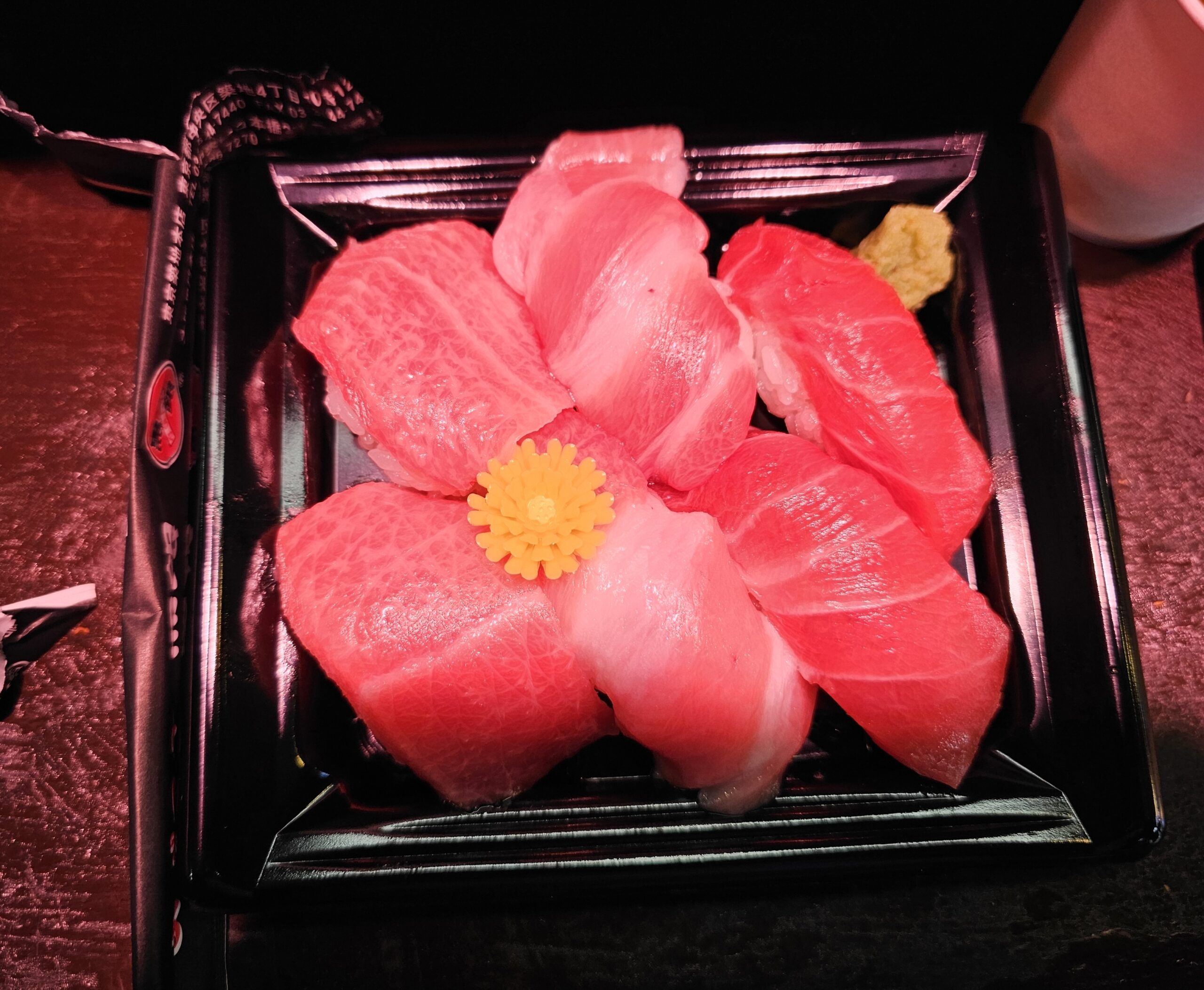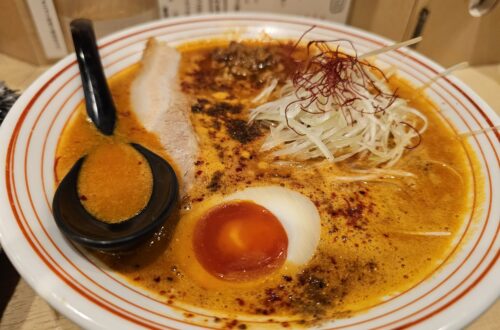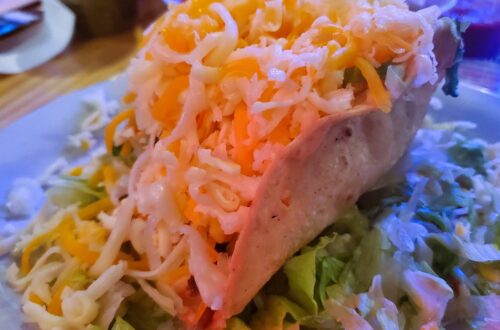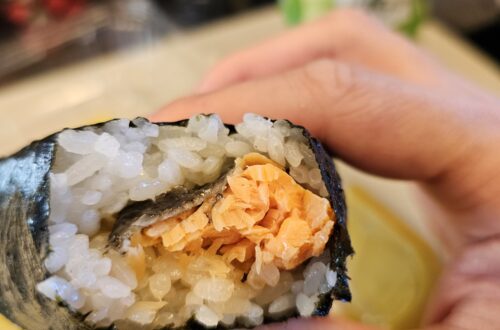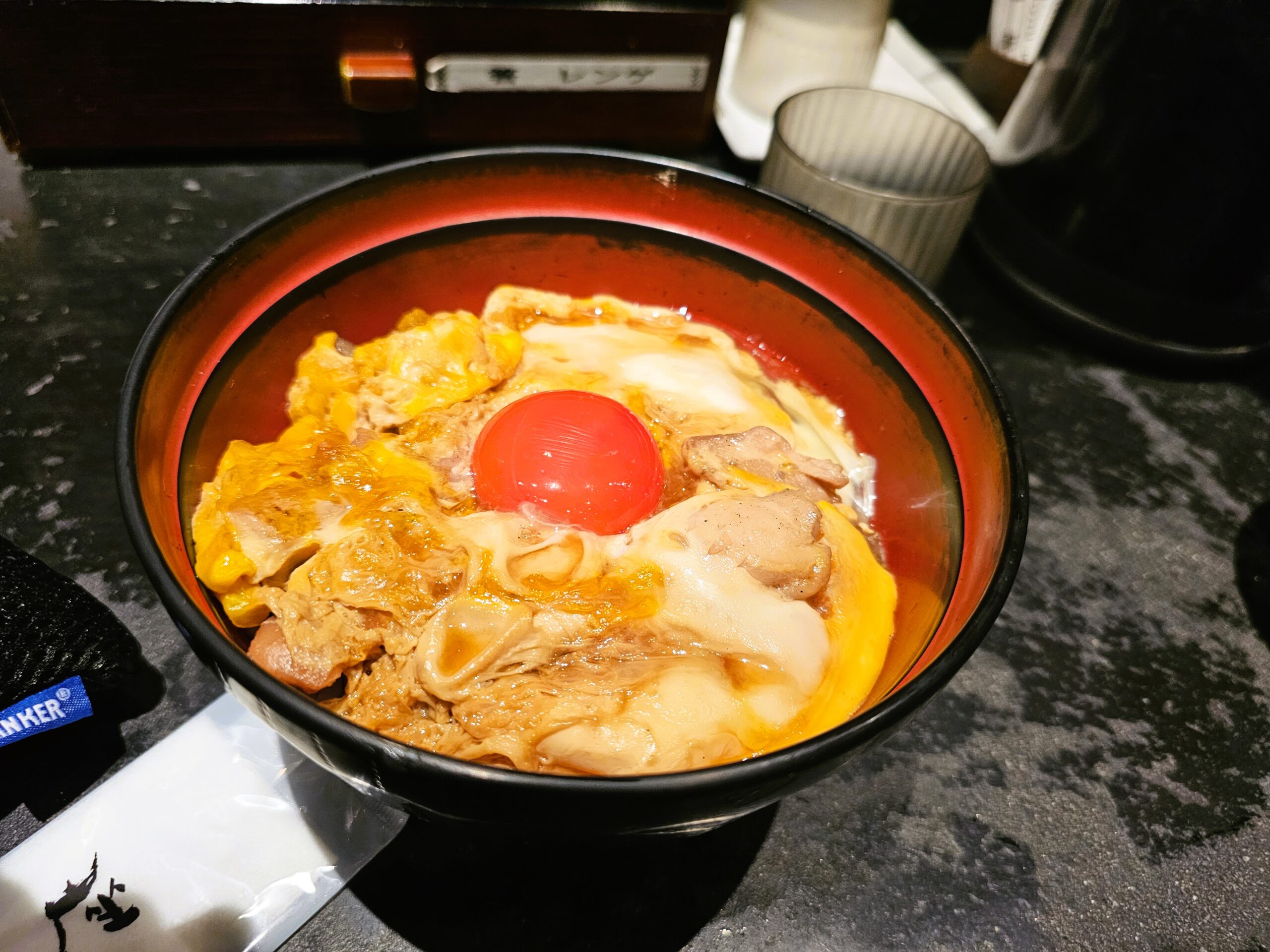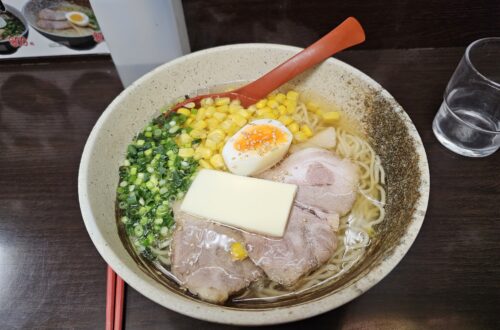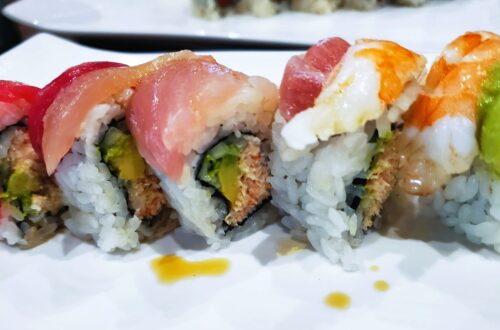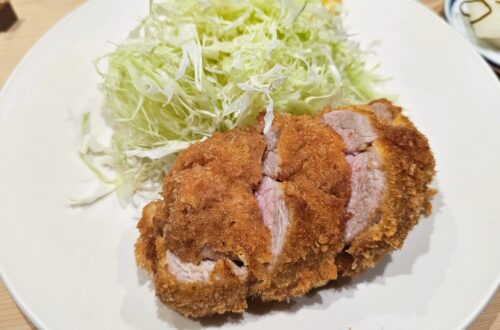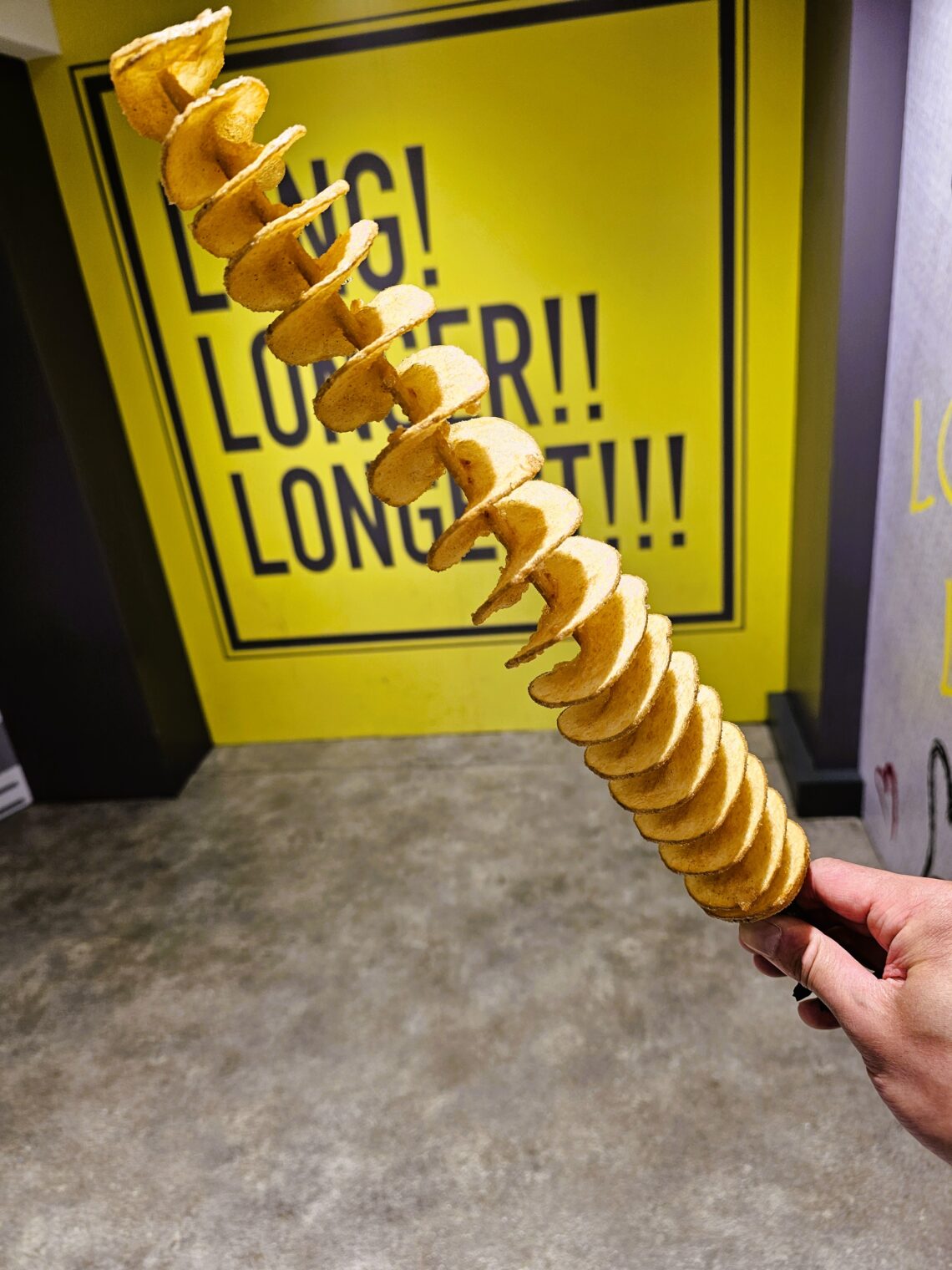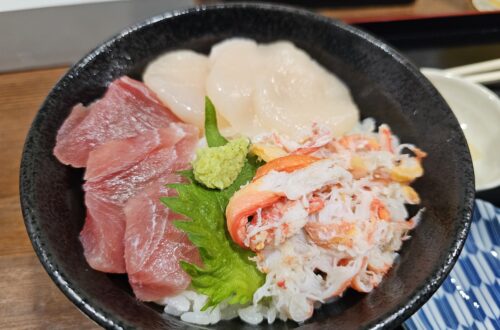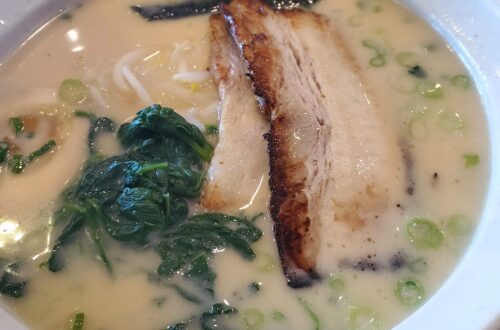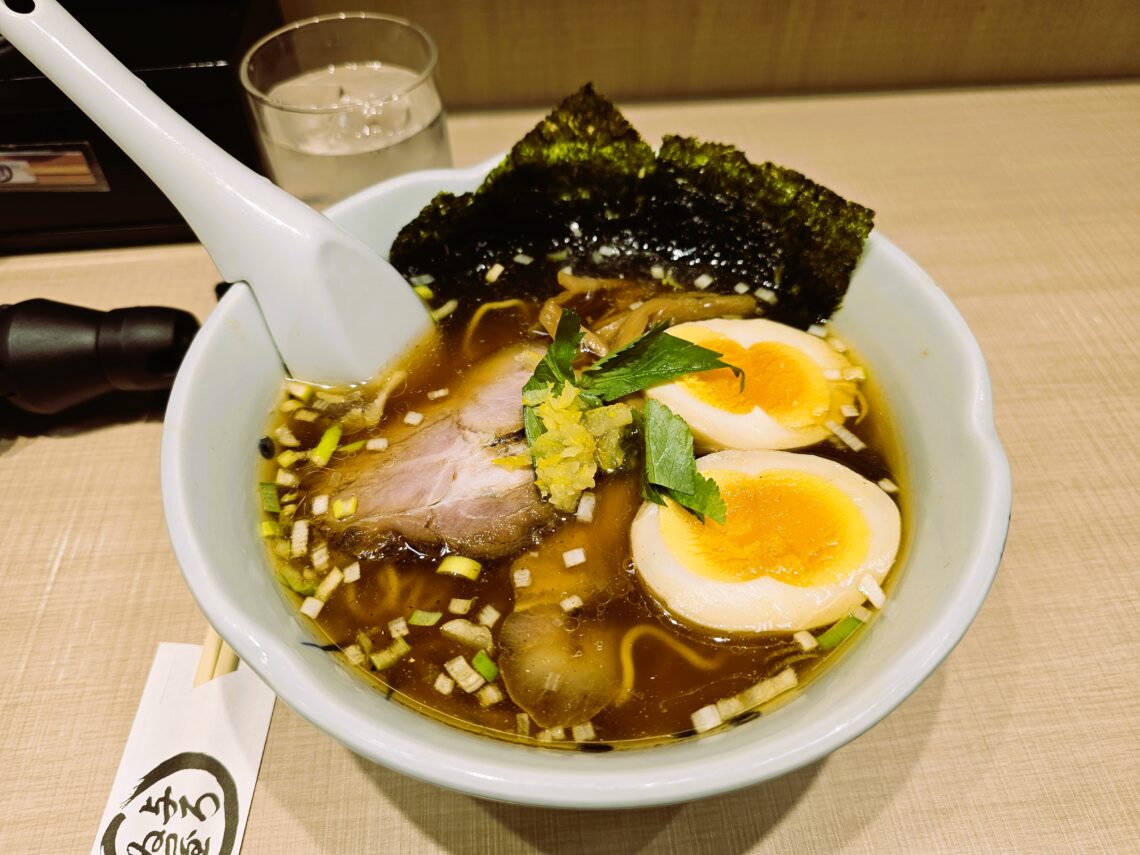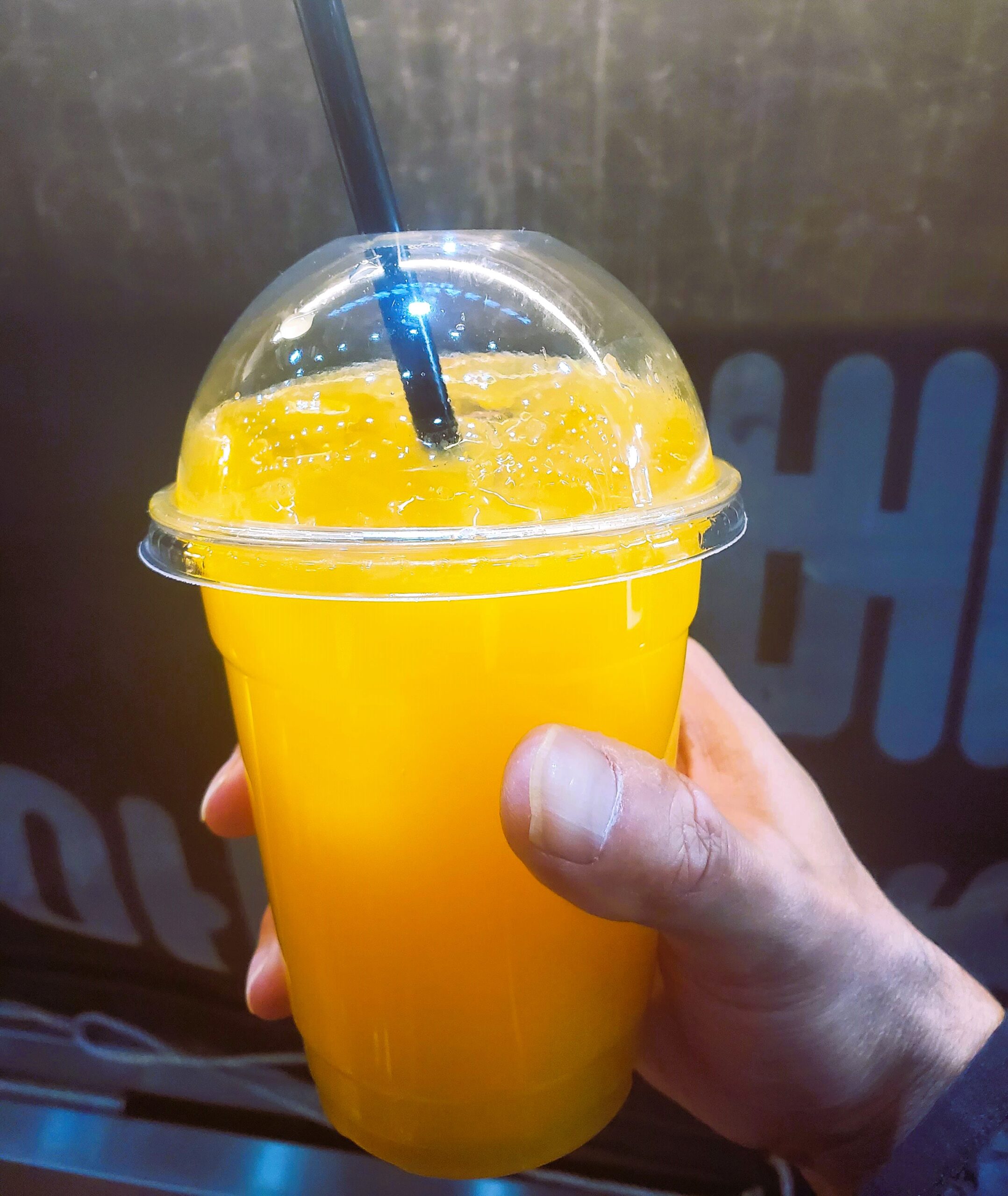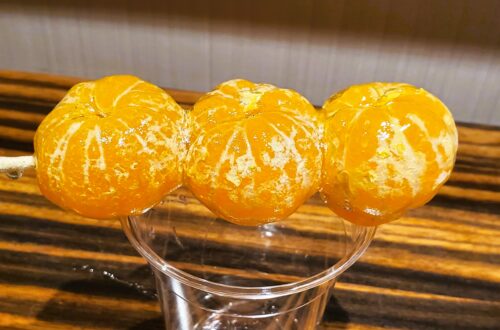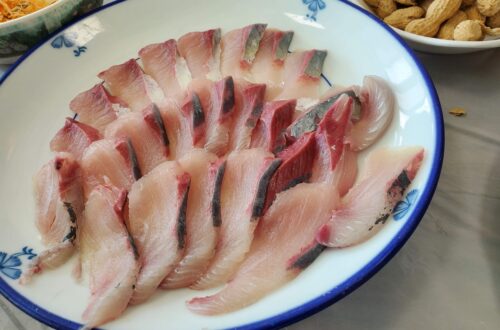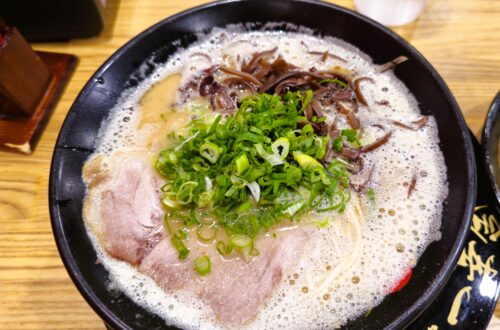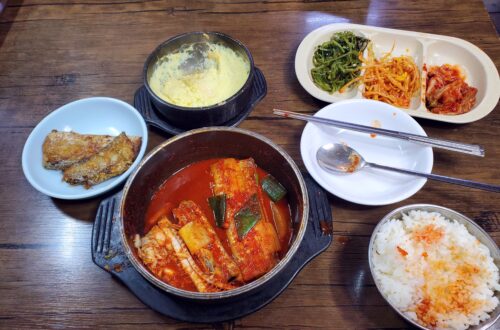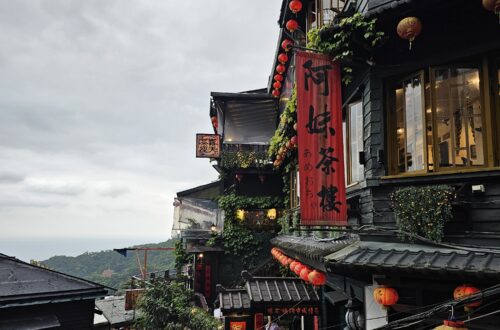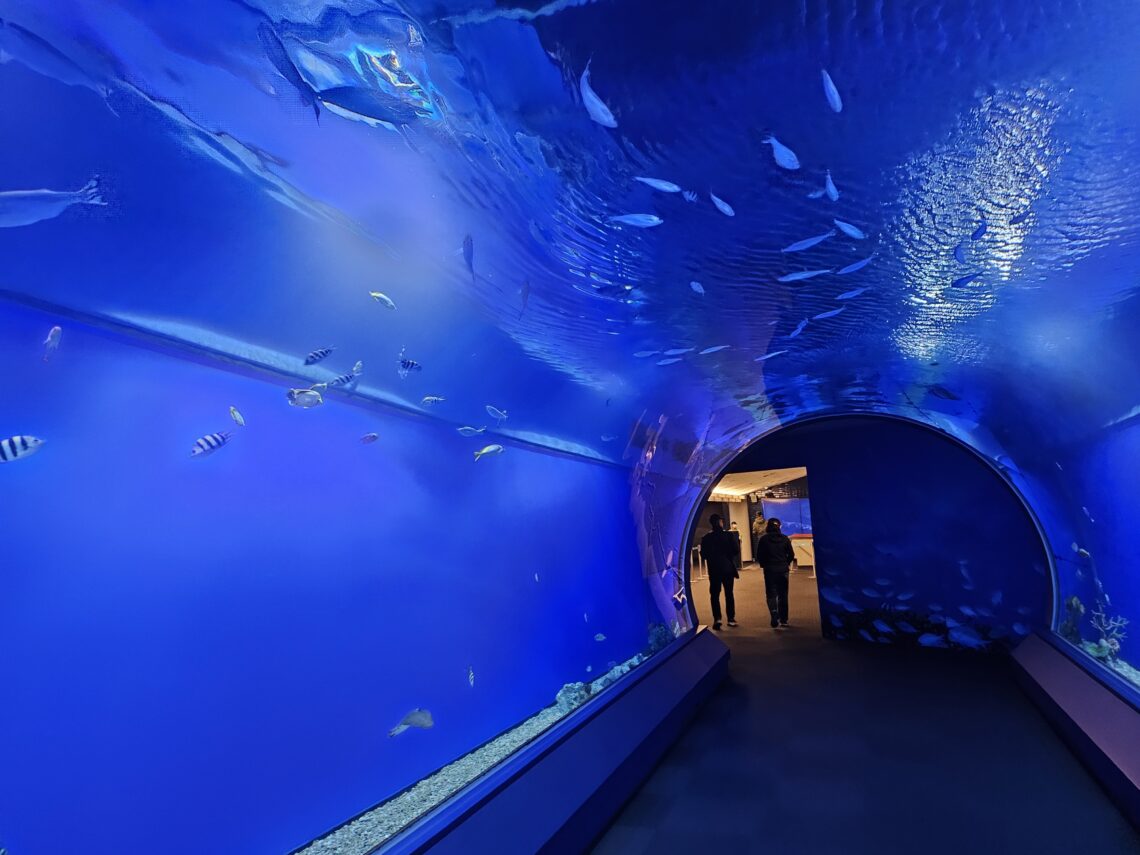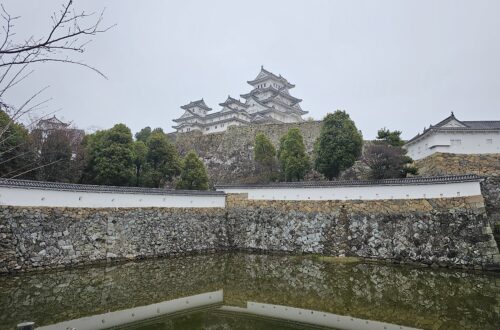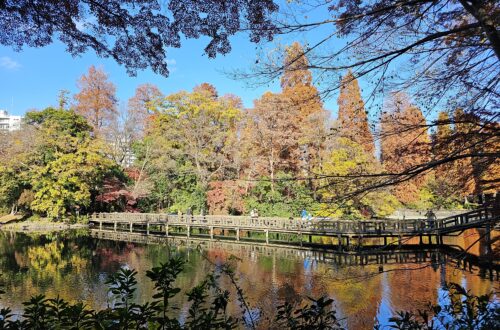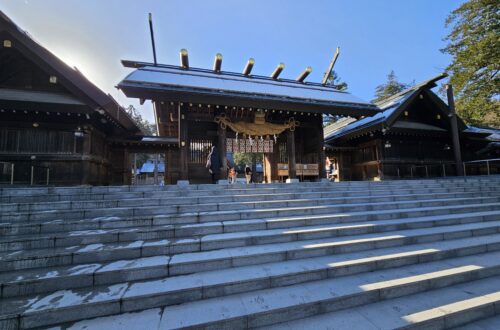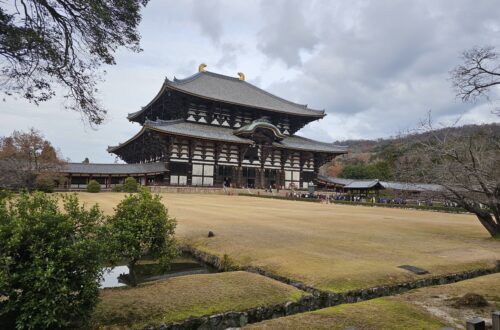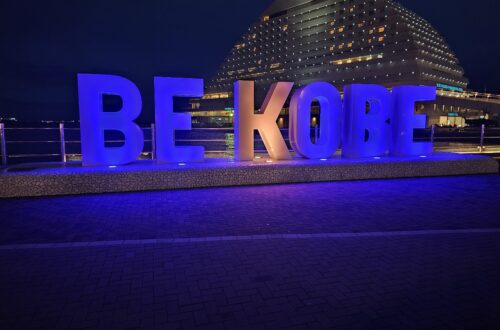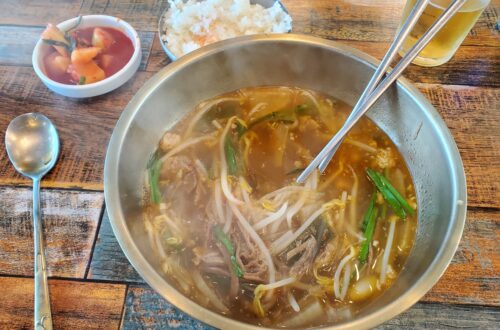-
When NOT To Trust Google Maps In Japan
When traveling most anywhere in the world, nothing is more useful than Google Maps. The ability to provide directions in a totally foreign environment cannot be understated! It’s something we take for granted in this day and age but Google Maps is a lifeline when traveling. I cannot imagine trying to get around without it. That’s also including domestically!
In a country like Japan with its vast infrastructure, which you’ll no doubt be using quite often, Google Maps in Japan is a true lifesaver. With it listing all the different subway lines, the platform the subway line will be on, when to get off and transfer to another line, what exit to use, it’s all extremely, extremely useful.
99% of the time you can mindlessly follow the directions and not even really think twice about it. There are certain occasions where, if you aren’t paying attention, can lead to some delays or confusion while using the subways.
I ran into this a couple times while traveling in Japan. I thought I’d write something to help others out who may be traveling to Japan.
When Google Maps Can Get Confusing
Example #1
One example is below from Tokyo:
This was my route when I was on the way to the airport to fly home:
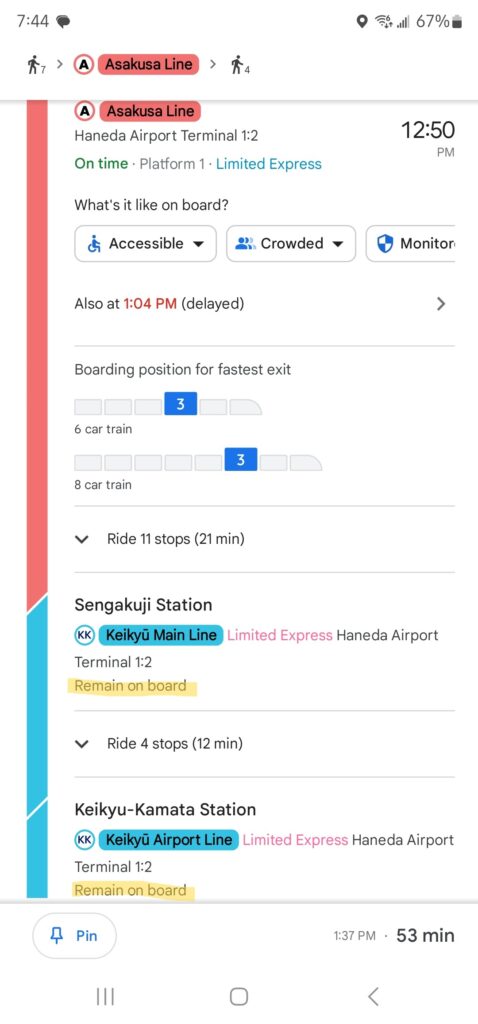
It seems pretty straight forward. Only one line is listed – the Asakusa Line. BUT the confusion lies (at least for myself) with the highlighted “Remain on board”.
The overall directions tell you to stay on board when you get to Sengakuji Station. But it also lists the Keikyu Main Line.
The overall directions don’t list this, stating only the use of the Asakusa Line. Does the Asakusa line turn into the Keikyu Main Line? Do you need to exit the subway and get on another platform to catch the Keikyu Main Line?
Fortunately, this was the tail end of the trip for me. At this point I was always on alert when Google Maps said to “Remain on board”, which I’ll explain below.
The Japan subways do an excellent job of making announcements calling out what lines you can transfer to as you approach each station. They also make announcements in English.
If you aren’t paying attention, or are just staring at Google Maps, it’s pretty easy to miss these call outs though.
Fortunately from past experience, I was definitely paying attention on this trip and was able to hear that the Keikyu Main Line was indeed a totally separate line which required me to leave the Asakusa line. The same for the Keikyu Airport line. This was a separate line than the Keikyu Main Line.
If I hadn’t been paying attention I would have stayed on the Asakusa line and then figured out I was supposed to transfer to those other lines after a few more stops. I would have had to back track and get back on course.
That’s a pain in the butt and time consuming. Especially with me needing to catch a flight.
Example #2
For this example I don’t have a screen shot of the directions. However, this happened in Osaka on the Osaka Loop Line, which JR West operates. It runs in both a clockwise and counter clockwise loop and hits 19 stations. It’s a very useful line to use while in Osaka.
Similar to my previous example, Google Maps told me to take the Osaka Loop Line and to stay on board at a certain station. Unlike the first example there were no other subway lines listed at all. It appeared that I should remain on board when the train stopped. This time I wasn’t paying attention to the announcement at all figuring that after this stop the train would continue on its clockwise journey.
This wasn’t the case. After sitting on board for about five minutes the train departed…but in the direction it had come from.
It was an easy correction. I got off at the first stop and refreshed Google Maps and re-boarded the correct line. There were a few other tourists on board who most likely were using Google Maps as well who did the same thing I did.
Takeaways
- If you see a totally different subway line listed on the Google directions and it’s telling you to “stay on board”, than really pay attention to the announcements. Like I mentioned, there will be an announcement made prior to every station stop about what lines you can transfer to at what station.
- If you missed the announcement (sometimes it can be noisy and you might not hear or may not have been paying attention) you can always get off at the station in question to get your bearings.
- New subway trains come by quite frequently and you can always hop on and off to figure things out.
- The lesson from Example #2 is if the train stops for an abnormal amount of time, most if not everyone gets off board, then you should most likely double check / refresh Google Maps or exit the train entirely and make sure the directions are correct.
- Also, don’t be afraid to ask! People in Japan are incredibly friendly and helpful and will likely help point you in the right direction.
The Japan subways are really amazing and incredibly helpful to shuttle you around the city. They can be overwhelming initially but in due time you grow accustomed to them and gain a better understanding of what Google Maps in Japan is telling you. You got this!
-
Why The Tsukiji Outer Market Is A Must Visit In Japan
The Tsukiji Market has been in existence for 80+ years. Despite the main fish market closing in Tsukiji and relocating to Toyusa the outer market still remains. The outer market is home to wholesale retail shops, produce, fish, as well as many, many restaurants / food stalls. The seafood here is some of the freshest in the city since it comes directly from the Toyusa fish market.
There are a TON of food stalls / restaurants within this vicinity so if you’re a foodie, this is a must stop.
Despite the main fish market moving to Toyusa in 2018, the outer market remains just as popular amongst both domestic and international tourists. Expect big crowds here!
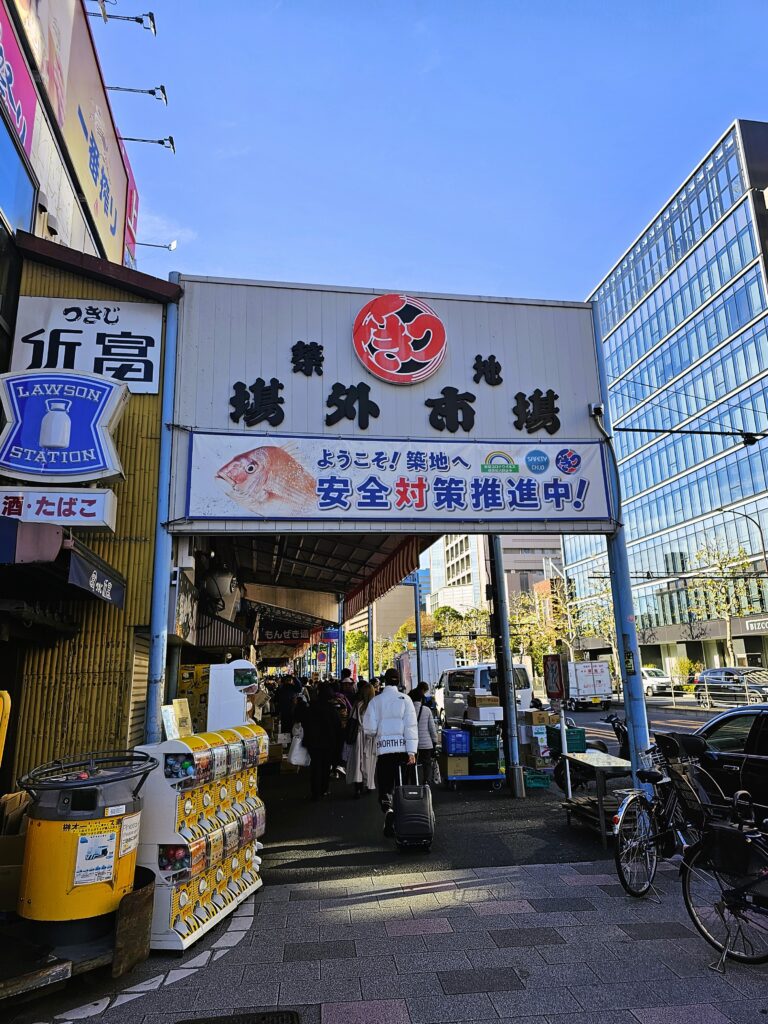
One of the entrances to Tsukiji Outer Market 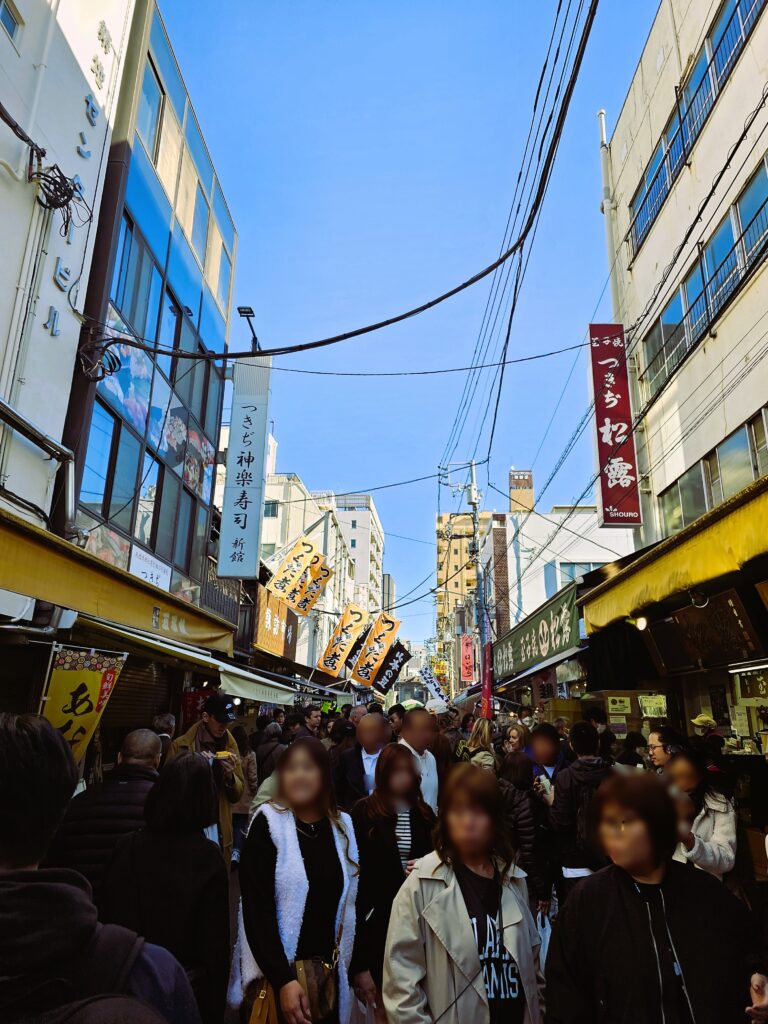
Food everywhere, with lots and lots of tourists The Food Experience
There’s going to be too much food here to try it all (for most people). Budget may also play a part in what you look to purchase too. Depending on what you’re looking to eat, certain items can certainly get pricey. But that’s what’s nice with such a large and varied market, there’s something for all budgets to be found here.
Here’s what I got on my visit:
Mochi and Tanghulu
This shop near one of the entrances to the market (photo above) specialized in strawberry mochi and tanghulu. This was just too tempting. I HAD to start off the food tour with this, it looked too good!
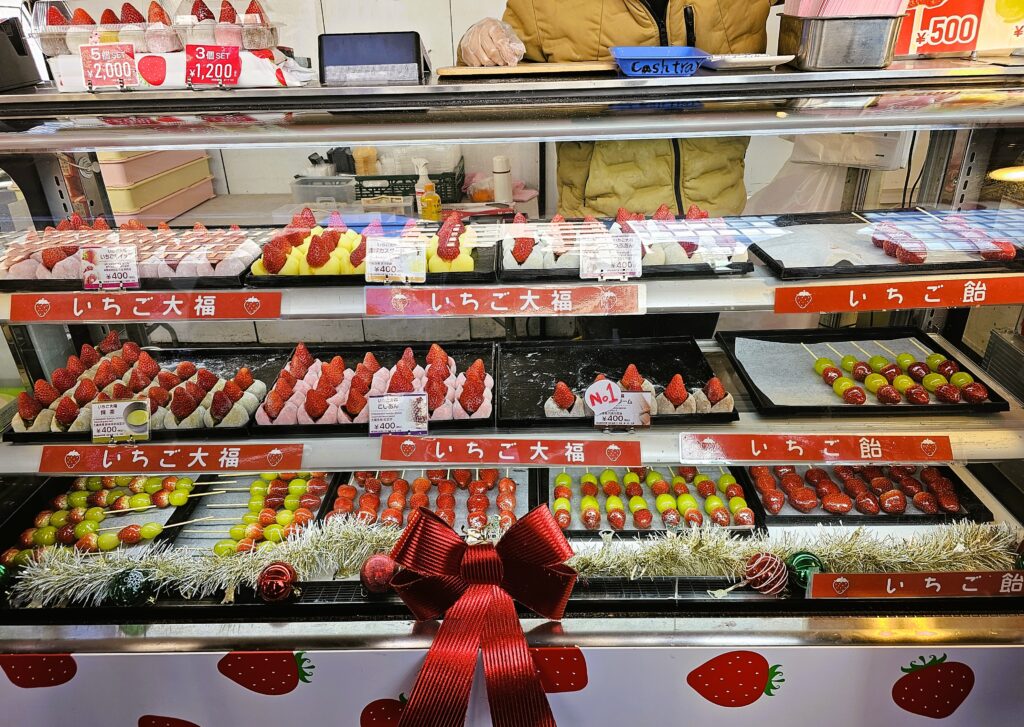
I decided on going with the strawberry flavored mochi with strawberry (400 yen, $2.83 USD).
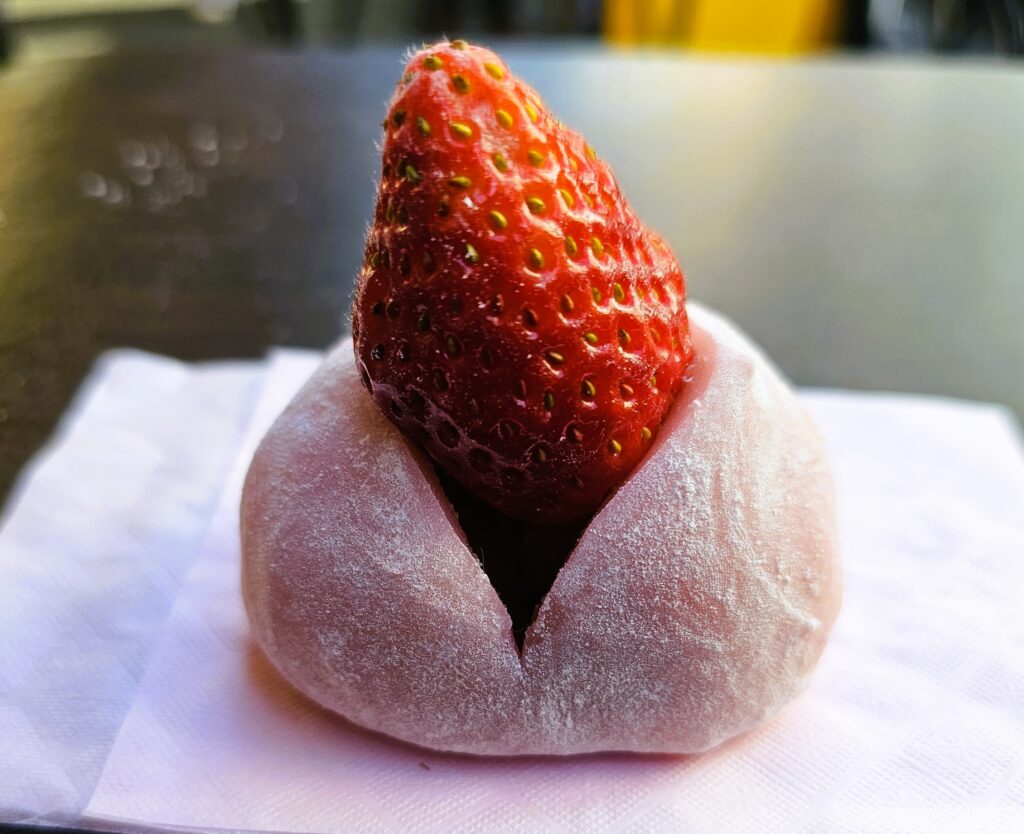
The mochi was incredibly soft, chewy, and very fresh. It was also filled with red bean paste and powdered sugar( the powdered sugar was a nice surprise!). The strawberry is very juicy. It wasn’t overly sweet but I really couldn’t notice due to the sweetness of the red bean paste / powederd sugar.
I couldn’t just get the mochi with all that delicious tanghulu on display. I opted for the grape and strawberry tanghulu (600 yen, $4.24 USD).
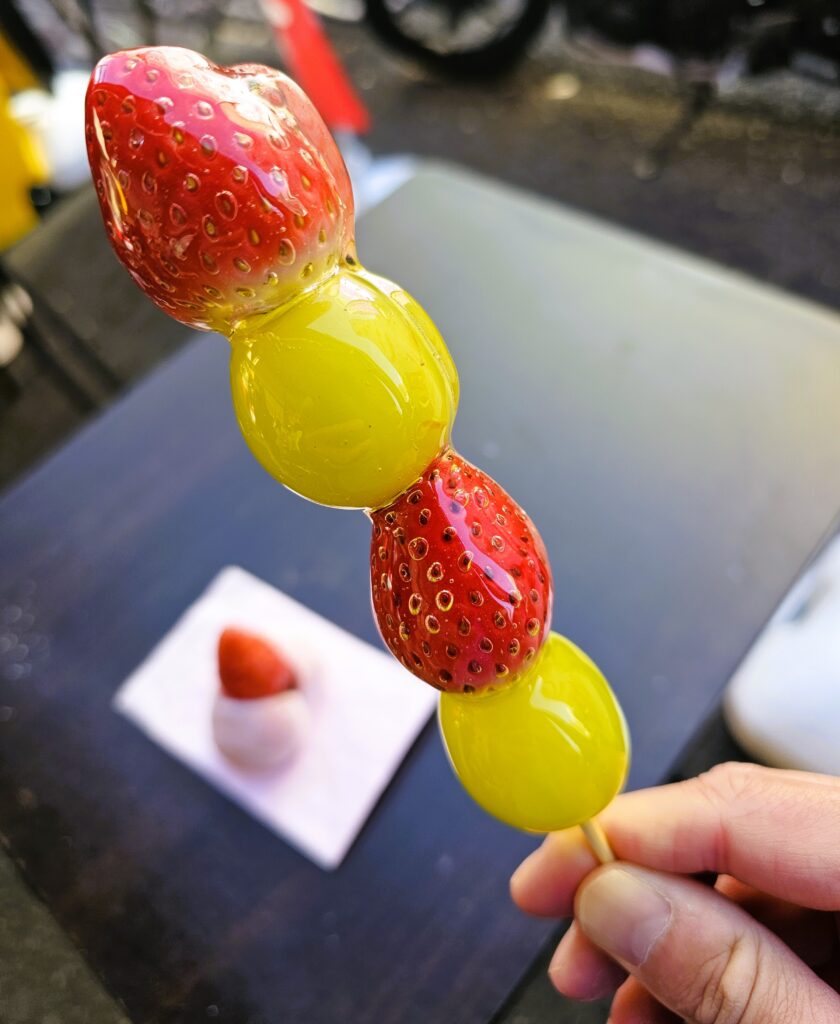
Both the grapes and the strawberries were very sweet and juicy in their own right. I don’t want to understate the juiciness of these grapes and strawberries. These fruits EXPLODE with juice when you bite into them. The sugar coating provides additional sweetness of course, as well as a hardy crunch.
Tamagoyaki
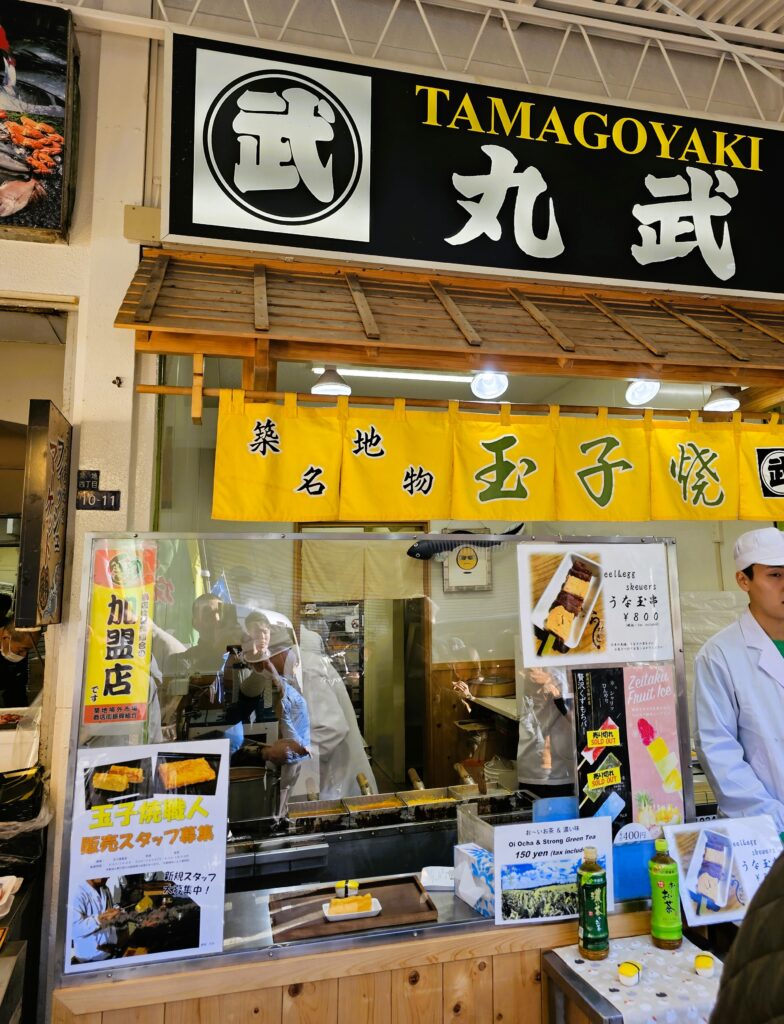
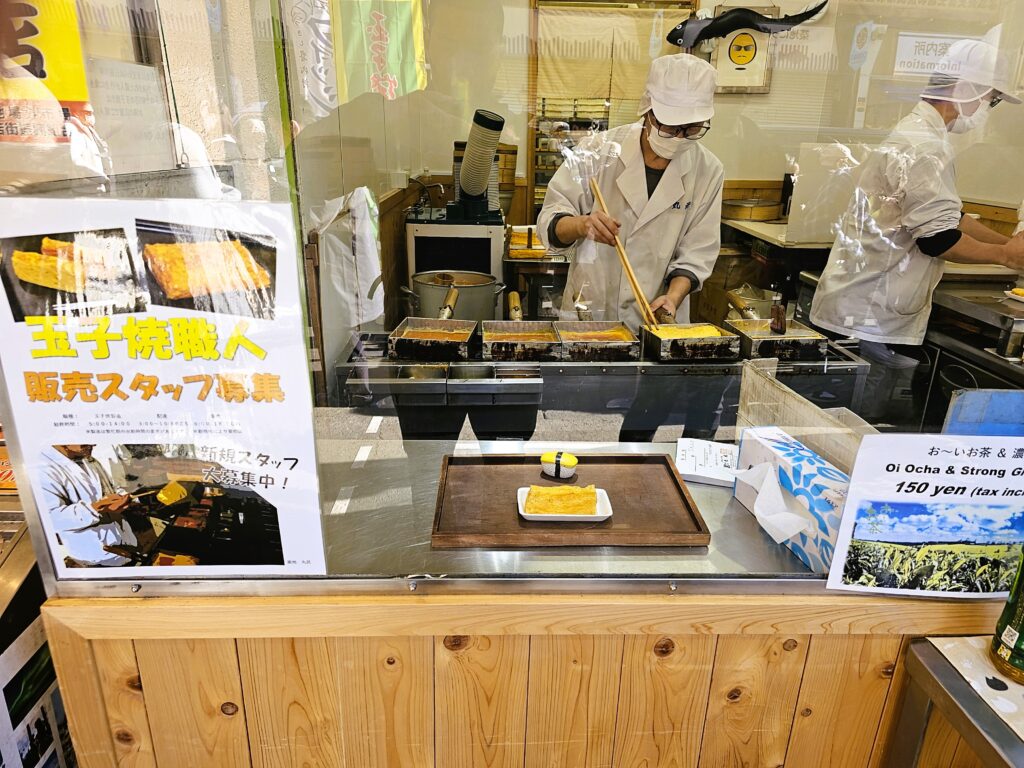
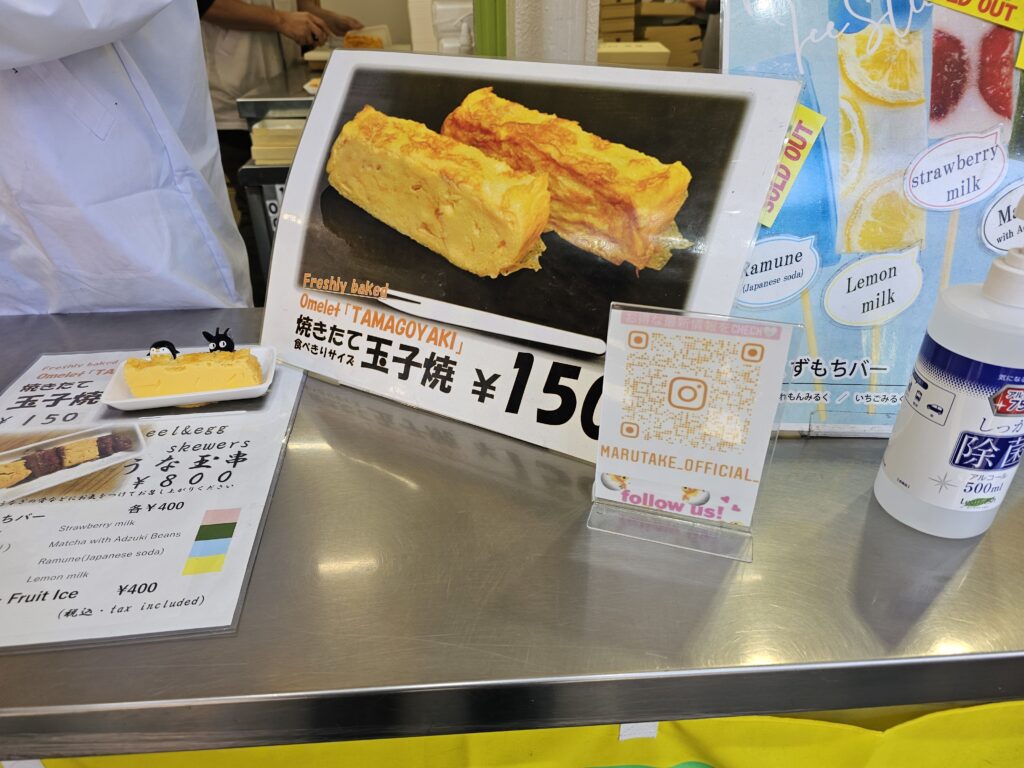
What exactly is Tamagoyaki? It’s a sweet and savory type of Japanese type of omlette. I’d never had it before but had heard of it. I saw this restuarant and figured today was the day to give it a try! The price for a block of it was only 150 yen ($1.06) too. Good deal!
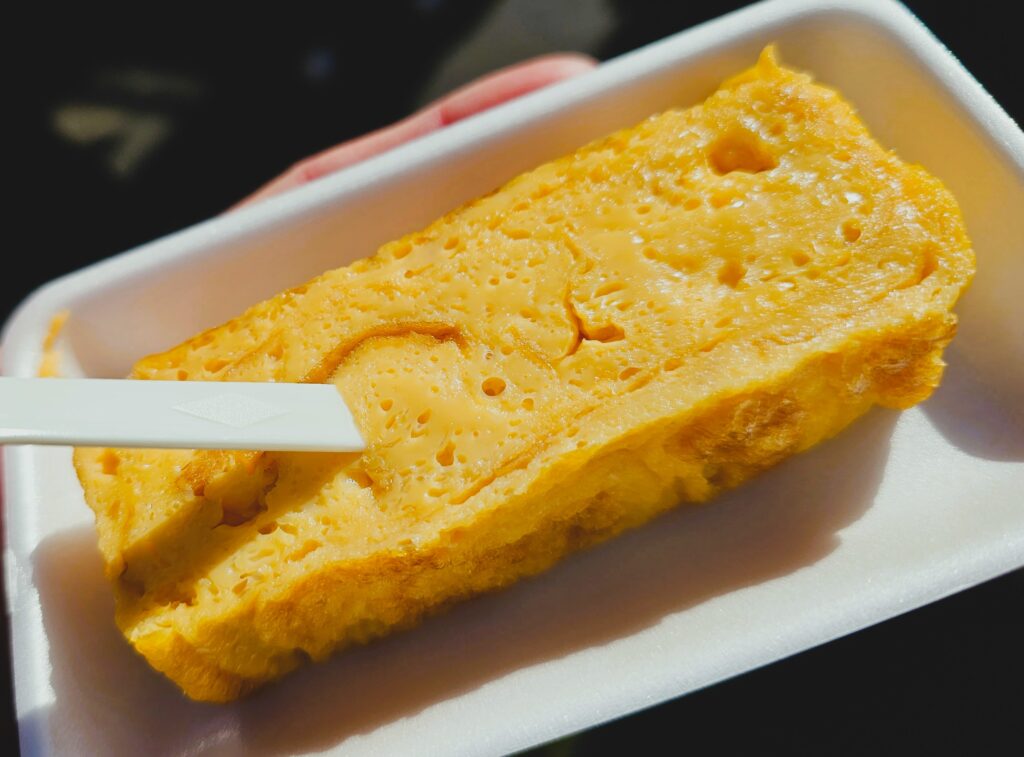
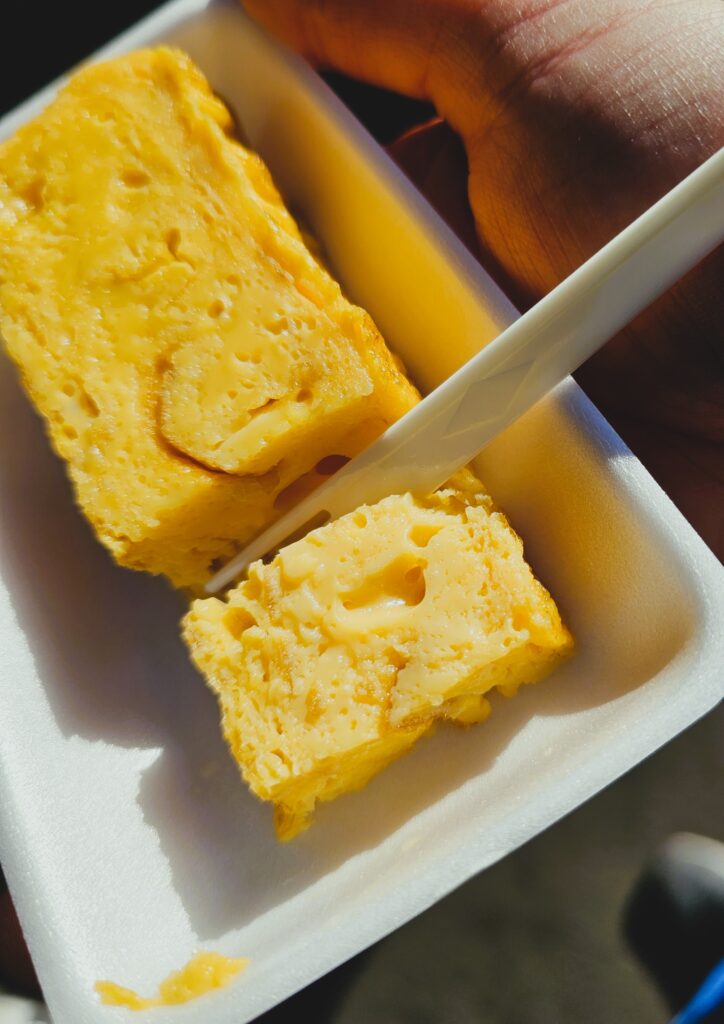
The egg is super soft, fluffy, and light. It’s also very sweet though. I was expecting it to be sweet but this was much more sweet than savory.
Grilled Wagyu
Yes, this is a fish market BUT there’s also wagyu here! There’s a few stalls that sell grilled wagyu skewers within Tsukiji. The cuts of wagyu vary and the price points reflect accordingly. They also have skewers of various seafood (octupus, squid, scallop, unagi, all 1000 yen, $7.09 USD) and even have skewers of wagyu with uni (sea urchin) spread over it. There’s a lot of skewer options!
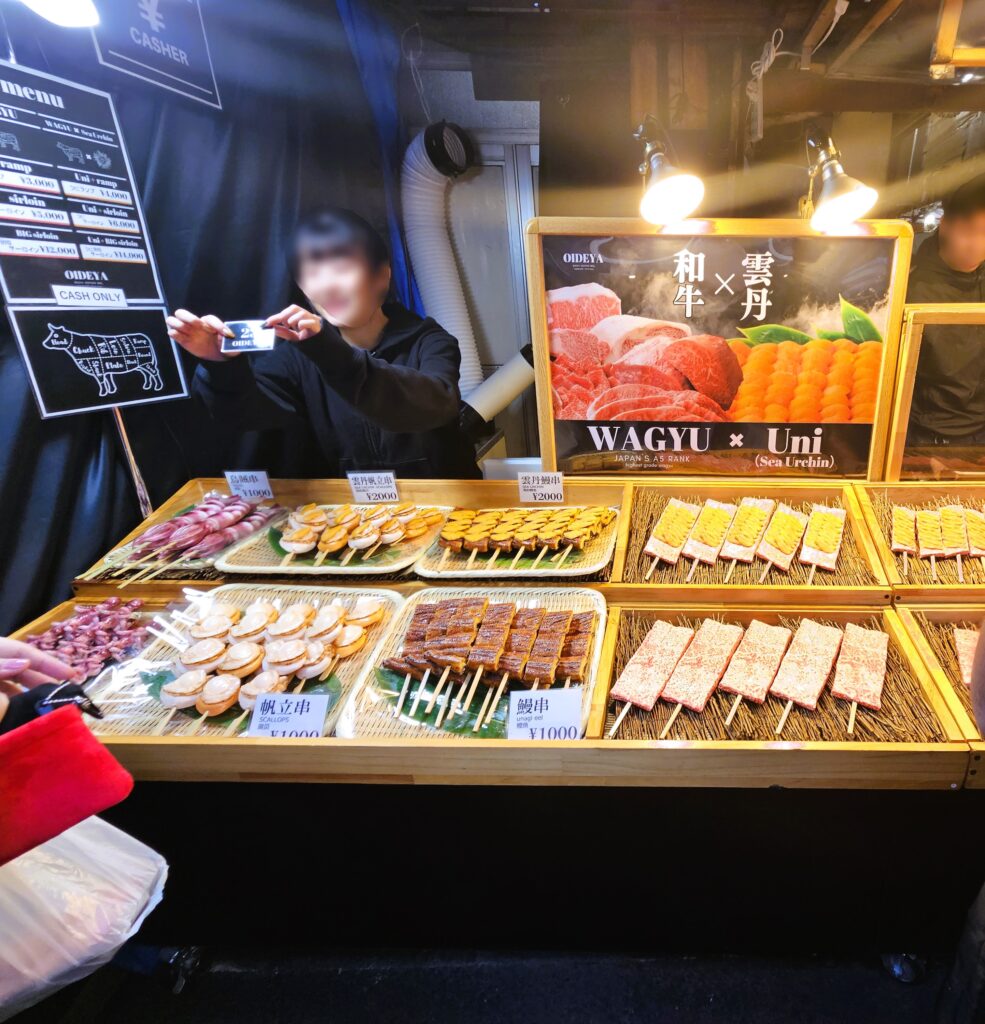
I opted for the rump wagyu, which was the cheapest cut of wagyu – for 3000 yen, $21.27 USD.
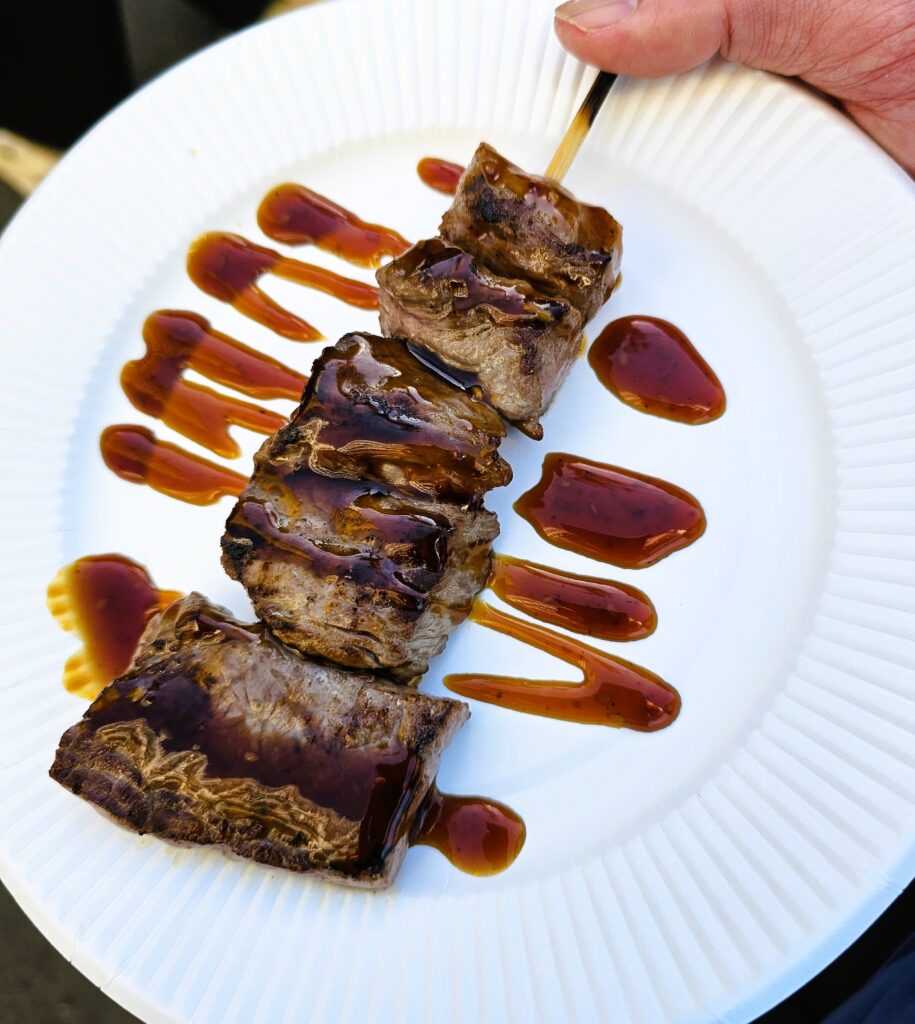
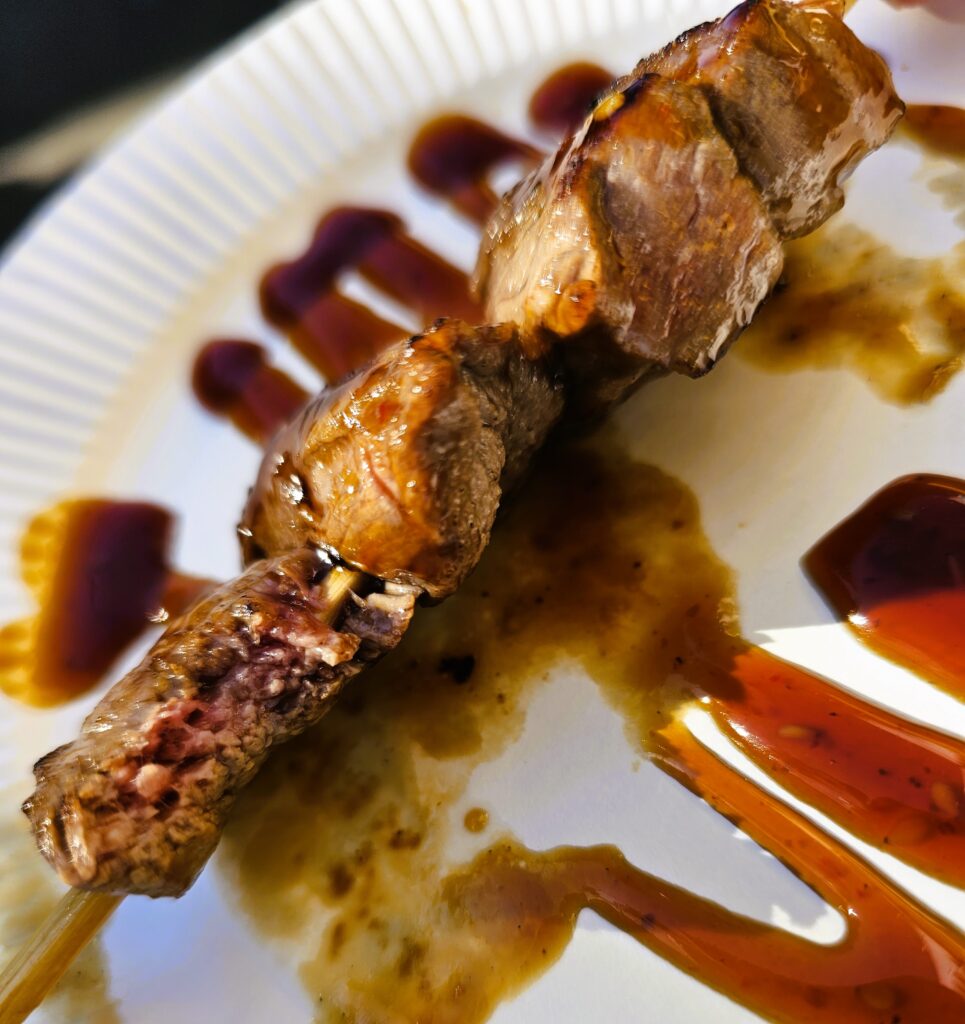
The meat is grilled medium rare. It’s lightly seasoned with just salt with a teriyaki glaze drizzled over the top. The glaze is a little sweet with a hint of spice to it. The meat just melts in your mouth. No exaggeration. You barely have to chew. The wagyu is unbelievably good!
Tuna Nigiri
No visit to Tsukiji would be complete without eating some seafood, specifically tuna. I decided to give Maguroya Kurogin a try. They specifically specialise in tuna here with various cuts served as sashimi over rice, nigiri, or sushi.
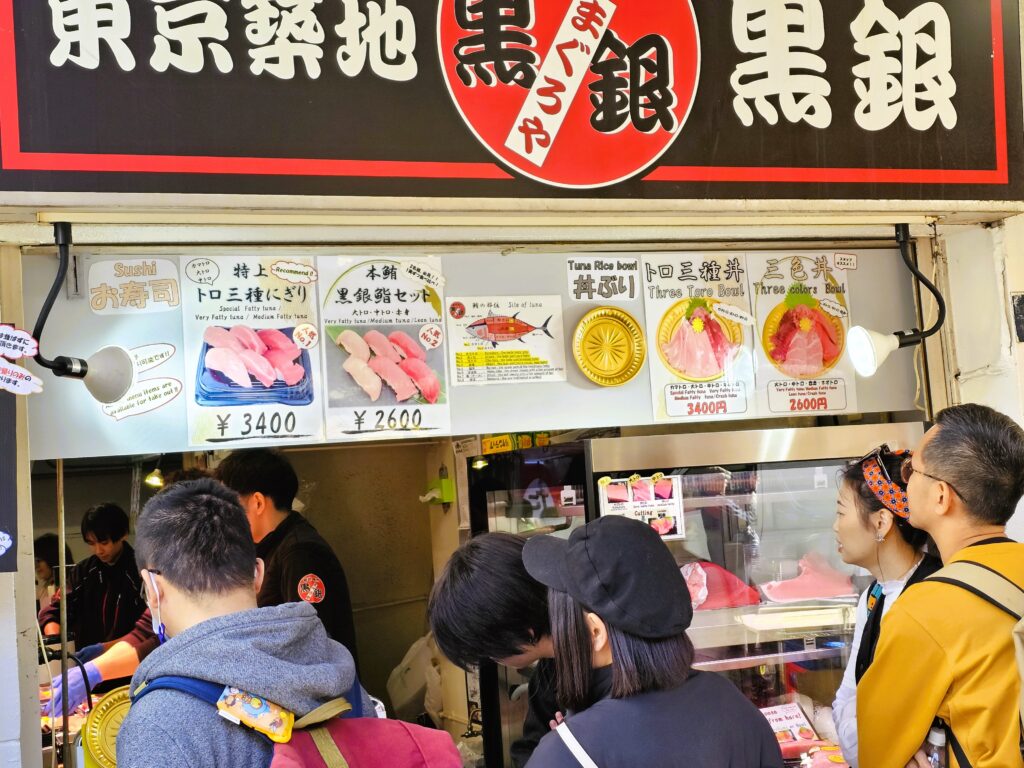
Decisions, decisions. It’s a tough choice on what to get 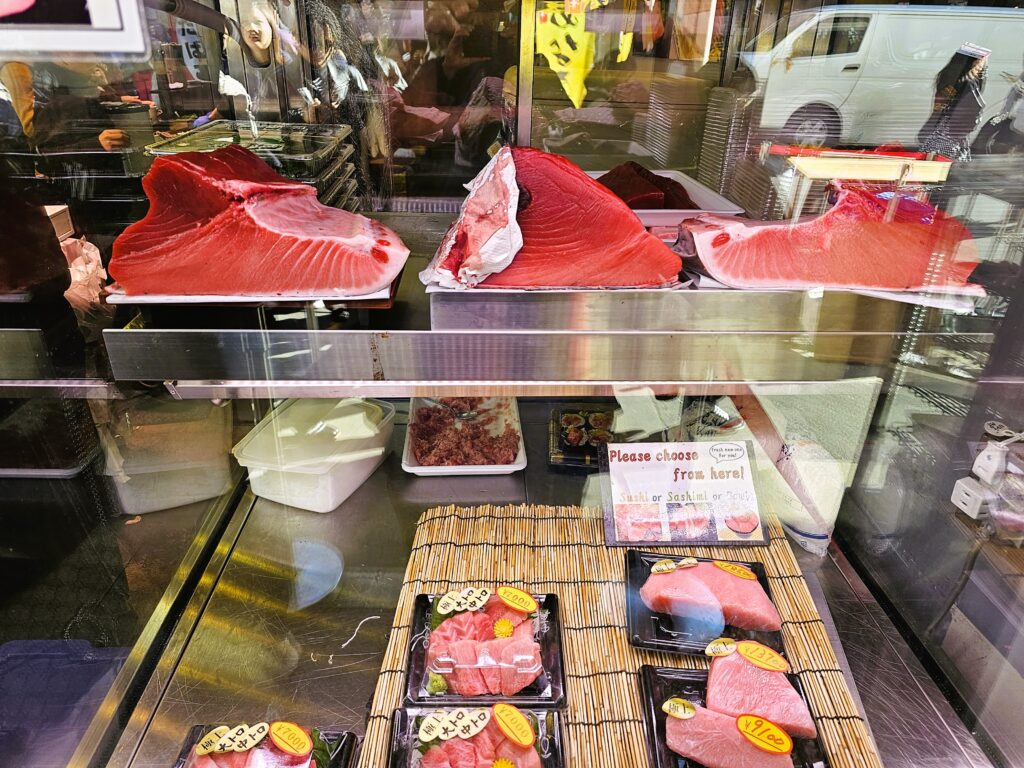
Sooo much tuna!! Look at how huge these chunks are! 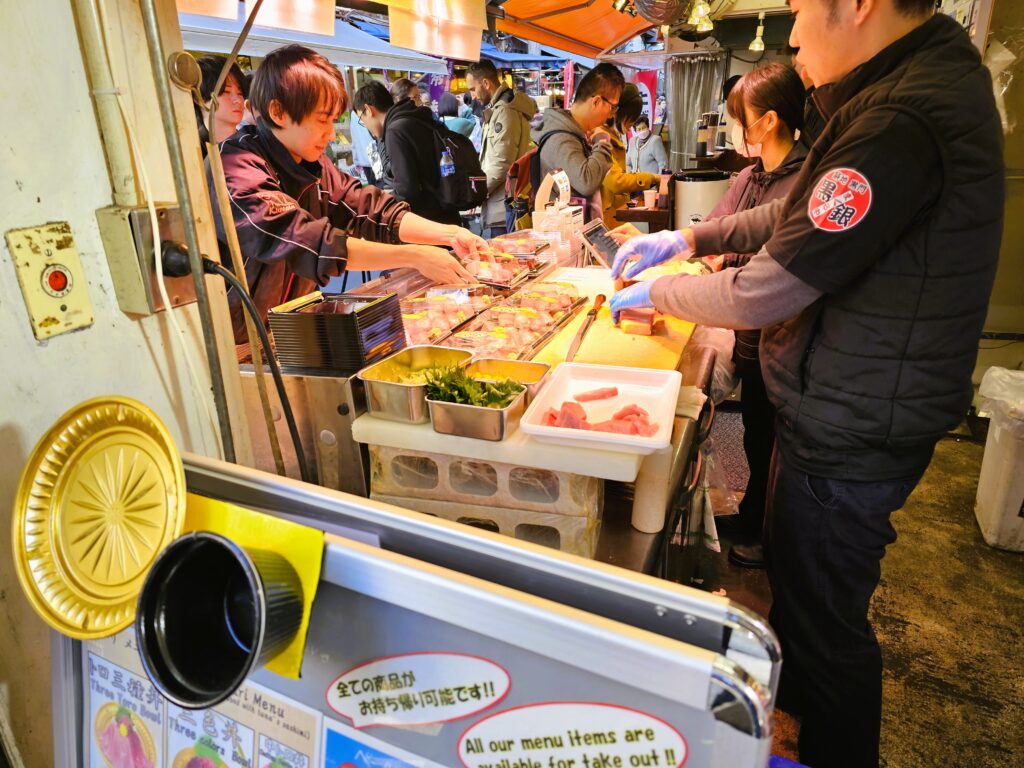
The tuna gets cut right in front of you as you wait in line 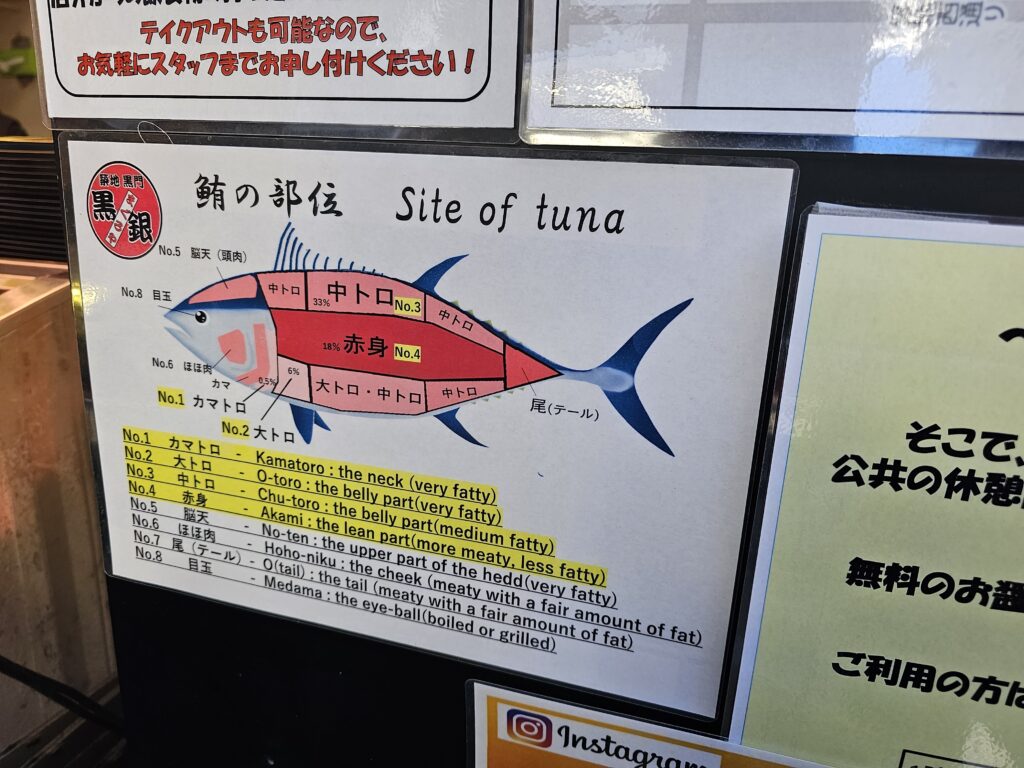
This definitely helps point out what you’re getting I went with the six pieces of nigiri that consisted of special fatty tuna, very fatty tuna, medium fatty tuna. This was 3400 yen, $24.10 USD.
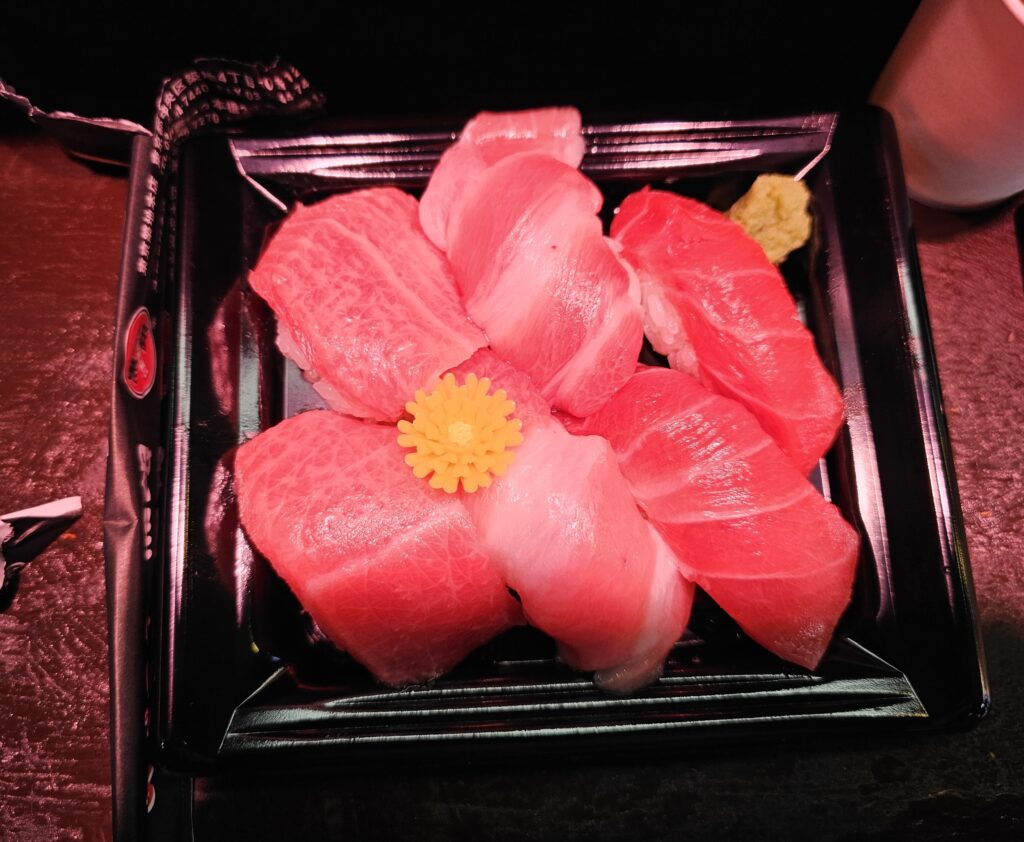
I ate this at the stall. They have a little area right next to the counter where you order at that has some tables you can stand around and a counter you can enjoy your food. They give you a cup of tea as well. The food comes out and the server goes over what nigiri is what. They speak English really well here. I believe from left to right it goes: special fatty tuna, very fatty tuna, medium fatty tuna.
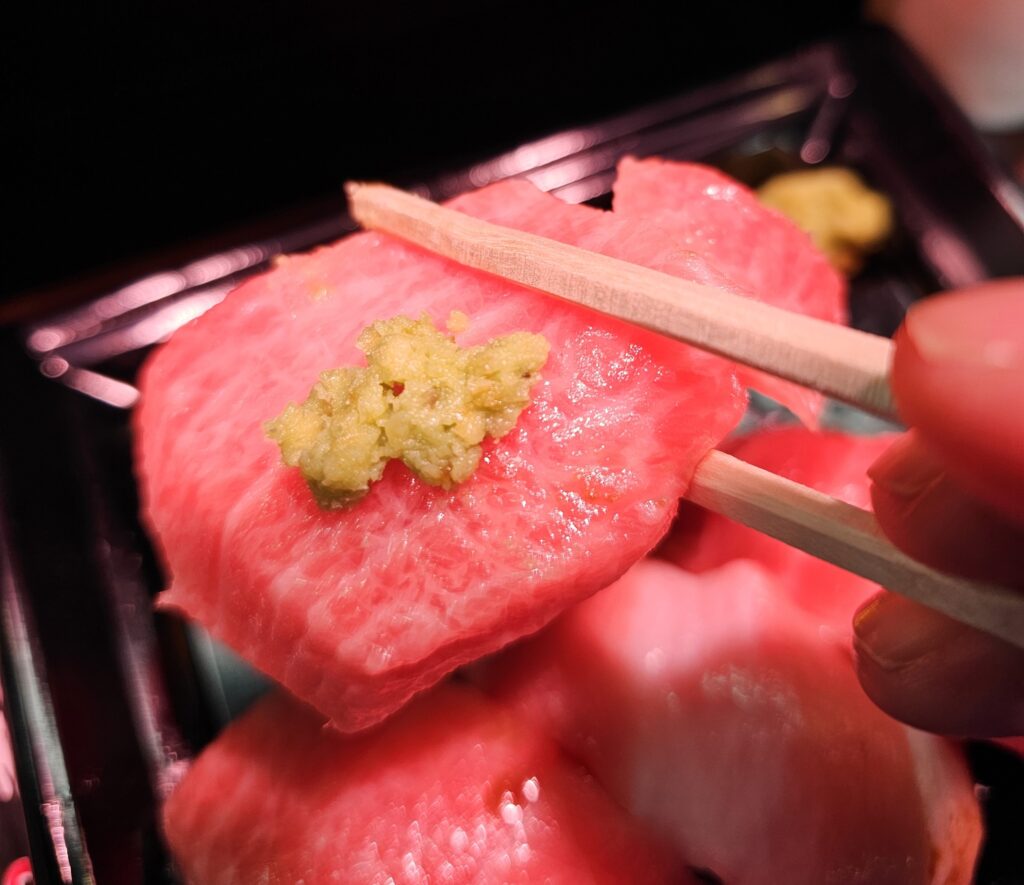
The speical fatty tuna 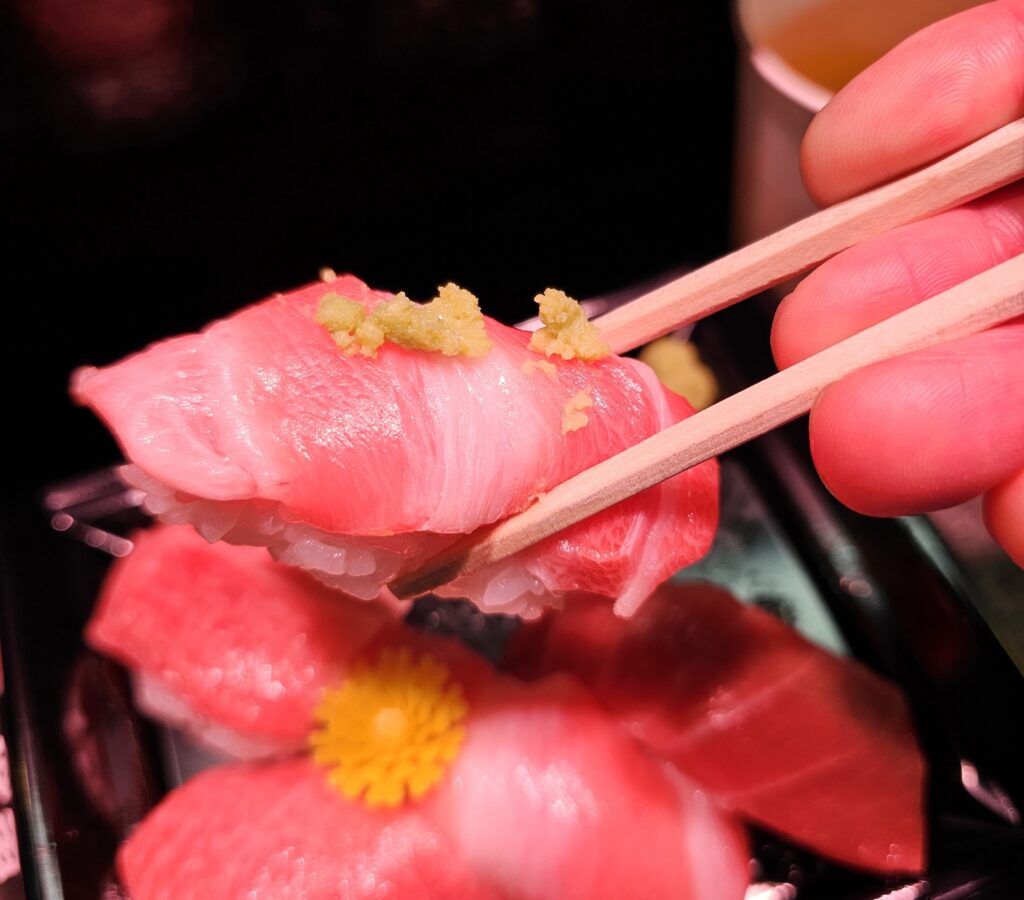
Very fatty tuna 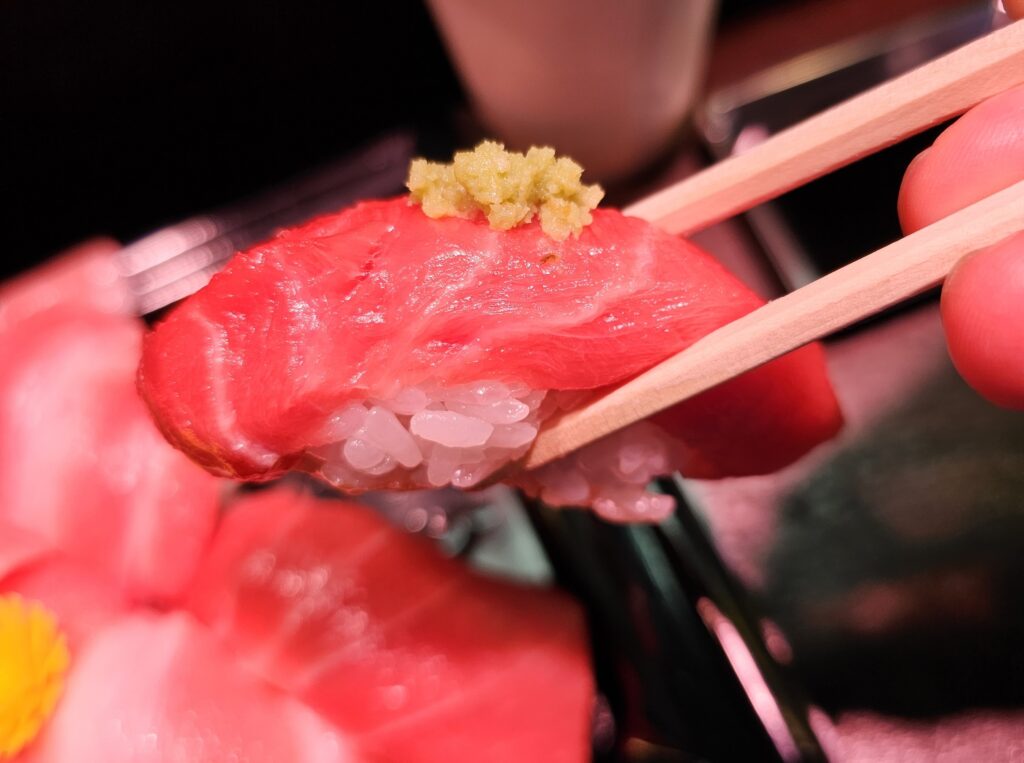
Medium fatty tuna These were all very high quality pieces of tuna. I couldn’t say that one cut was better than the others. The fattier pieces may dissolve faster but ALL of the cuts essentially dissovle in your mouth when you start eating them. The sushi rice is also high quality. Overall, these are six pieces of nigiri you won’t be disapppointed with.
Conclusion
I ate a variety of food in my time at Tsukiji and barely scratched the surface of everything that’s there. There was a lot of stuff that I wanted to get but skipped over on this trip, like grilled crab legs, and grilled scallops, and a boatload of other food. Not to mention the number of sit down restaurants that all looked delicious.
I will advise that many of the places here accept ONLY CASH, so that keep that in mind if you plan on visiting. There’s also an atm on the premises if you forget to bring some cash. It’s located in the facility which also has a public restroom.
I did have a budget in mind and how much I wanted to spend here, so that took some of the food out of the equation…this time around. Some of the restaurants had very long lines which I also avoided since there was a lot I wanted to that day. Bottom line: There’s A LOT of food here.
The total for everything I ate came out to 7,550 yen / $53.53 USD. Not too shabby! It was definitely a fun time walking around and trying multiple dishes. If you’re a foodie this is must visit place.
One final tidbit of advice: Choose your stomach space wisely!
-
Oyako-Don At Torimkura In Diver City, Odaiba, Tokyo
If you’re in the area visiting Odaiba and are wanting to grab some food there are plenty of options in the area. Specifically within Diver City Plaza. There’s a large food court on the bottom floor and then several restaurants on other floors of the massive mall.
Torimkura
Torimkura is one of the restaurants located in Diver City. It caught my attention since it specializes in Oyako-Don. What exactly is Oyako-Don? It’s a simple Japanese dish that includes tender pieces of chicken, egg, and rice. The sauce that coats everything is generally both salty and sweet. It’s a real comfort food in Japan and is very popular.
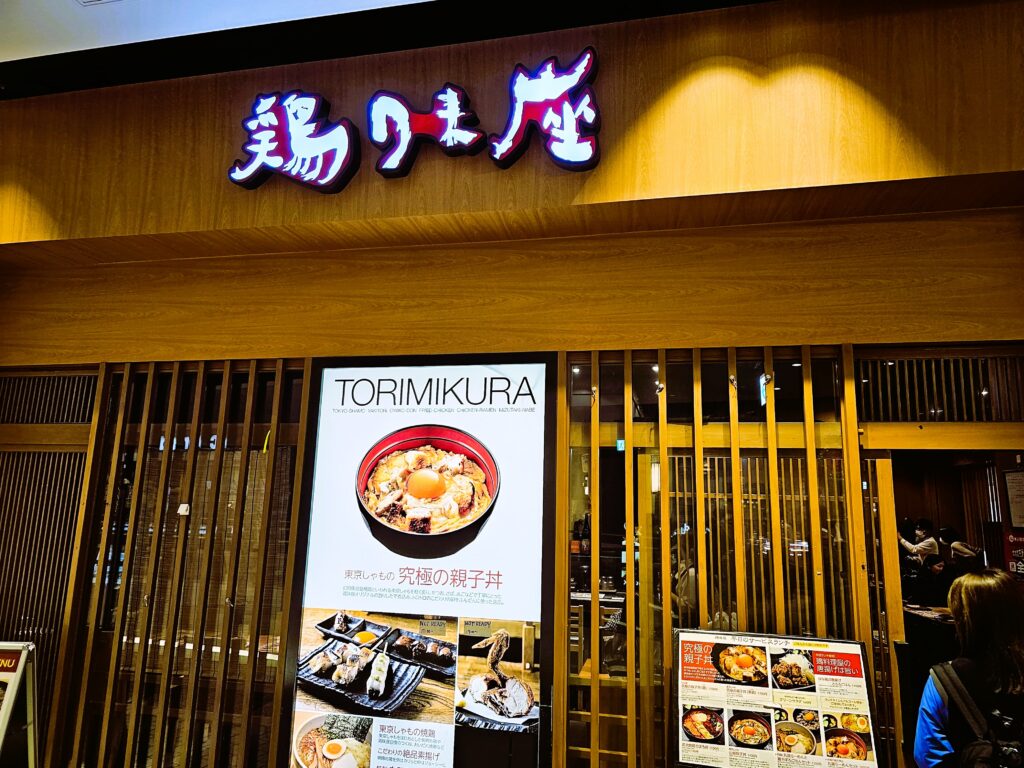
The front of Torimkura 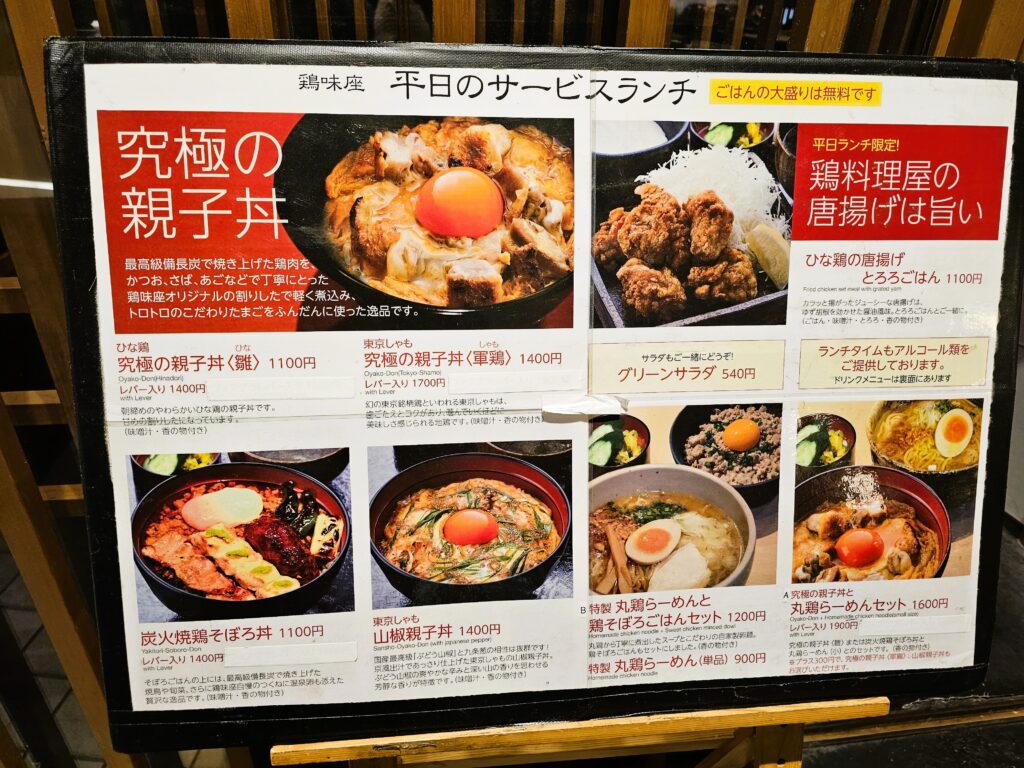
The Oyako-Don
There wasn’t much of a decision on what to get here. They had a lot of options outside of Oyako-Don but this was definitely a restaurant known for its Oyako-Don, so I had to go with that!

The first thing that really jumps out once the dish is served is the bright orange egg yolk. How they serve this without breaking the yolk I have no idea.
Without a doubt the egg and chicken mixture is scrambled well and really is a nice mixture. It covers a warm bed of rice.
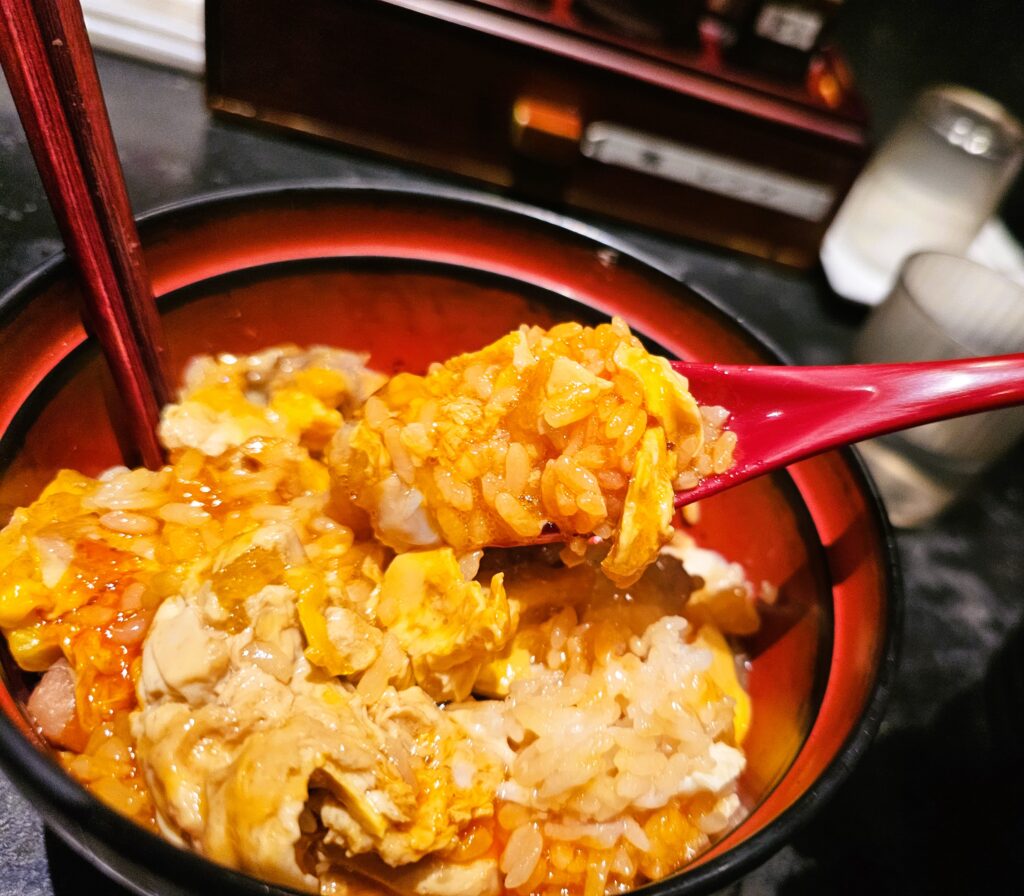
Breaking the egg yolk and mixing it into the rice, egg, and chicken, really added a rich and creamy element to the overall bowl. It adds a different flavor in addition to the mildly sweet and savory sauce that coats the egg, chicken, and rice.
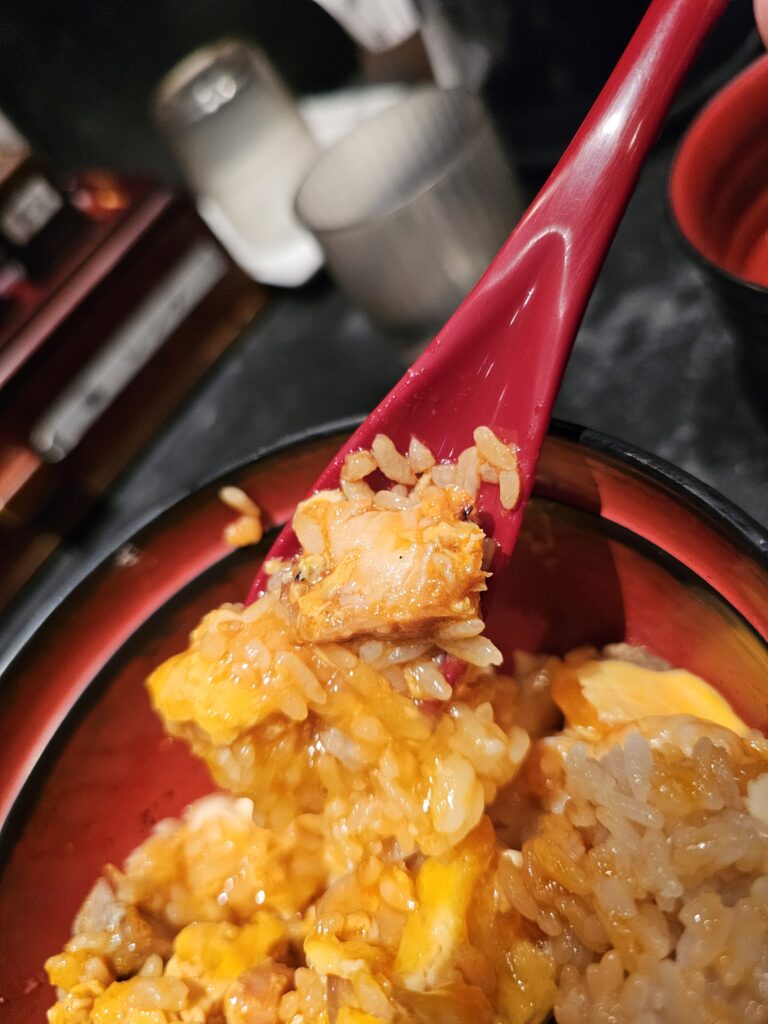
The pieces of chicken were quite tender and flavorful. It was good. I only wish there had been more. I was certainly left craving more chicken.
Is It Worth A Visit?
Oyako-Don can be found throughout Tokyo. With Odaiba being a bit of a trek from Central Tokyo I wouldn’t make a trip specifically to Diver City to eat here. If you find yourself out in the Odaiba area sight seeing and needing a bite to eat, than sure, it’s worth a stop. But there will be a lot of other options to choose from as well. Overall it’s a solid bowl of Oyako-Don but isn’t something I’d go out of my way to get again.
-
Is The Street Food On Takeshita Street, Harujuku Worth Getting?
If you plan on visiting Harujuku you will no do doubt be visiting its most iconic street: Takeshita. This a 350-meter street that’s located near the JR Harujuku Station which is jam packed with all different types of shops. With this being Harujuku, there’s a ton of small clothing shops and boutiques lining this street.
Expect there to be crowds here. This is afterall one of the most popular streets in Harujuku. This street is also home to many of the popular street foods in the area. I got to Takeshita fairly late in the evening after a long day of touristing and eating but still wanted to sample a couple of the well-known street food places.
Undoubtedly, a visit to Harujuku will correlate with shopping and perhaps a visit to Meiji Jingu. Street food is not likely the main reason you’ve decided to visit, so is it worth getting the food in the area, specifically on Takeshita?
Long! Longer!! Longest!!!
Long! Longer!! Longest!!! (LLL) has a few flashy items on their menu including, rainbow cotton candy, cheese hot dog, and strawberry tanghulu. They may best be known for their Tornado Potato though. They vary in sizes, as you’d imagine based off the name of the place, from 35 cm (600 yen, $4.23 USD), 42 cm (700 yen, $4.93) and 52 cm (800 yen, $5.64).
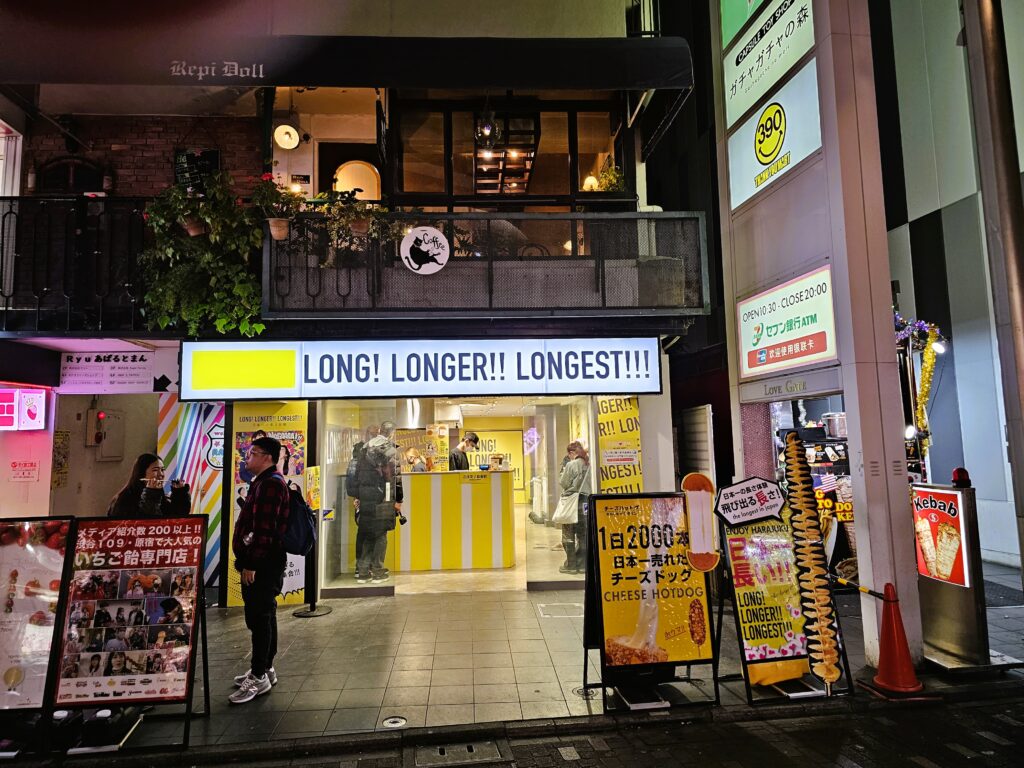
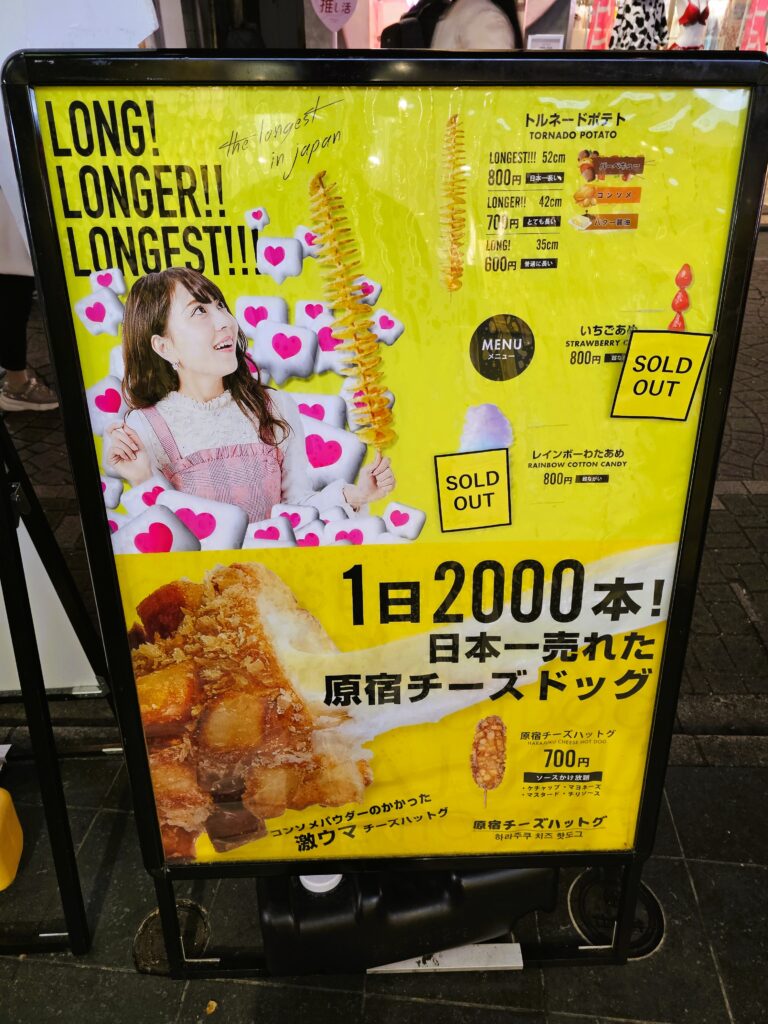
There’s three different seasonings you can get with the Tornado Potato. I had a hard time translating what the three were but one was definitely butter. The other two seasonings, the best I could make out were chicken and beef kabob (?). I went with the long (35 cm/ 600 yen, $4.23 USD) and got the butter and chicken seasonings.
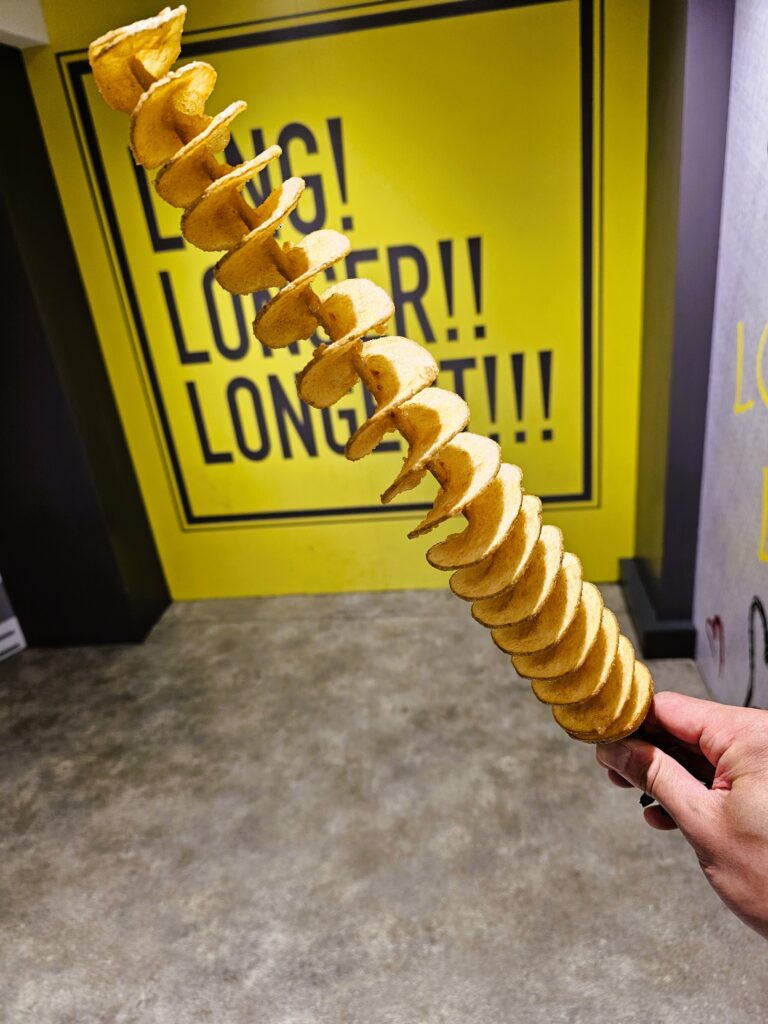
The Long Tornado Potato at Long! Longer!! Longest!! 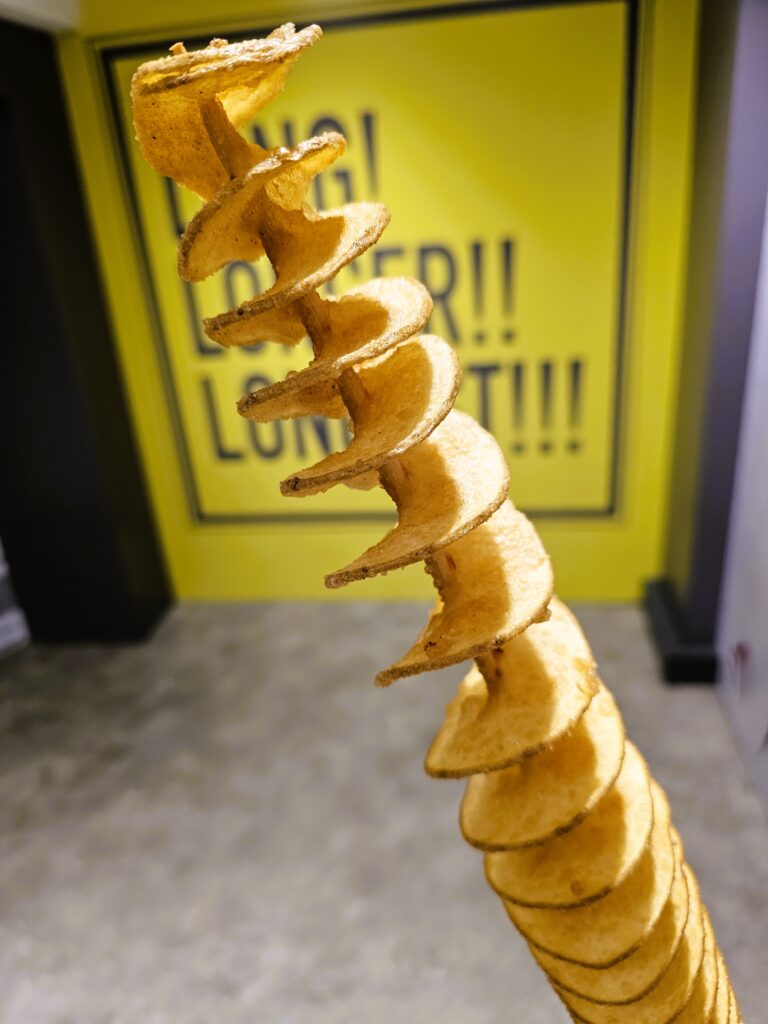
Plenty of seasoning on this tasty treat! This comes out piping hot and they really coat the potato well with seasoning. It definitely did taste buttery and savory with a hint of sweet. Even though this was the smallest size to get, it was still quite a lot of food!
If you’re a fan of these Tornado Potatoes it’s worth a try here since the seasonings here are certainly different than what you normally see.
Marion Crepes
Another food item that’s very popular on Takeshita Street is crepes. There’s three different places all within a close vicinity of one another so there’s plenty of choices to choose from. Marion Crepes may be the most famous and popular of them all.
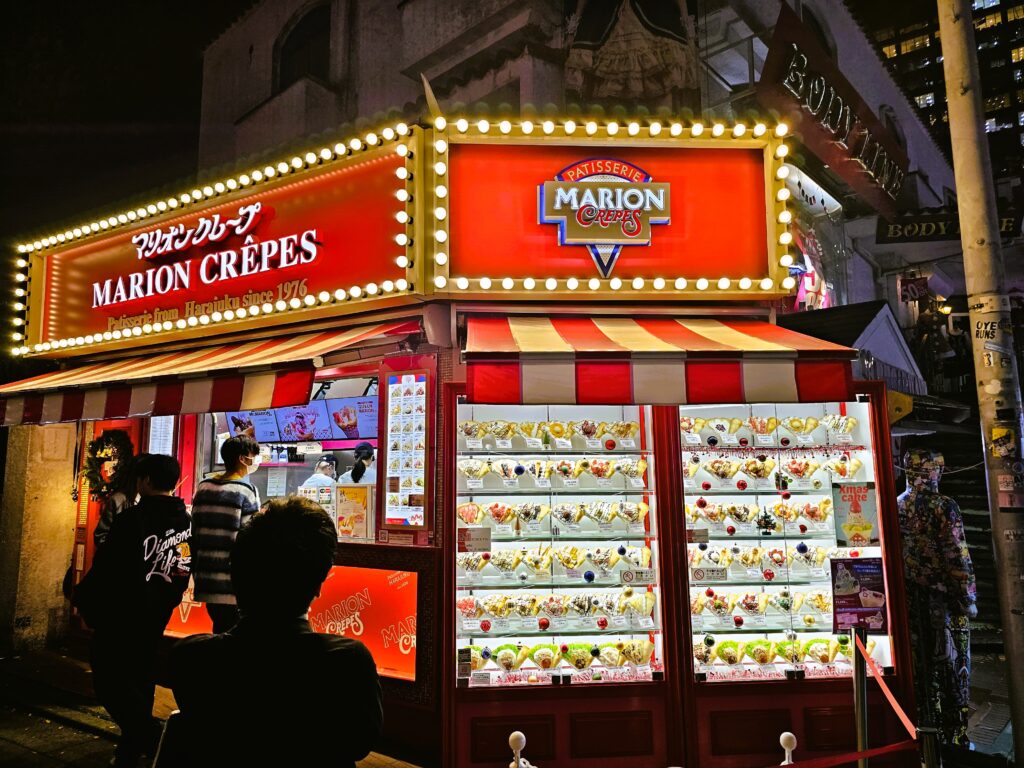
Without a doubt they have a LOT of different selections to choose from here. I went with the more simple strawberry with vanilla ice cream, whipped cream, and chocolate syrup (630 yen, $4.40 USD).
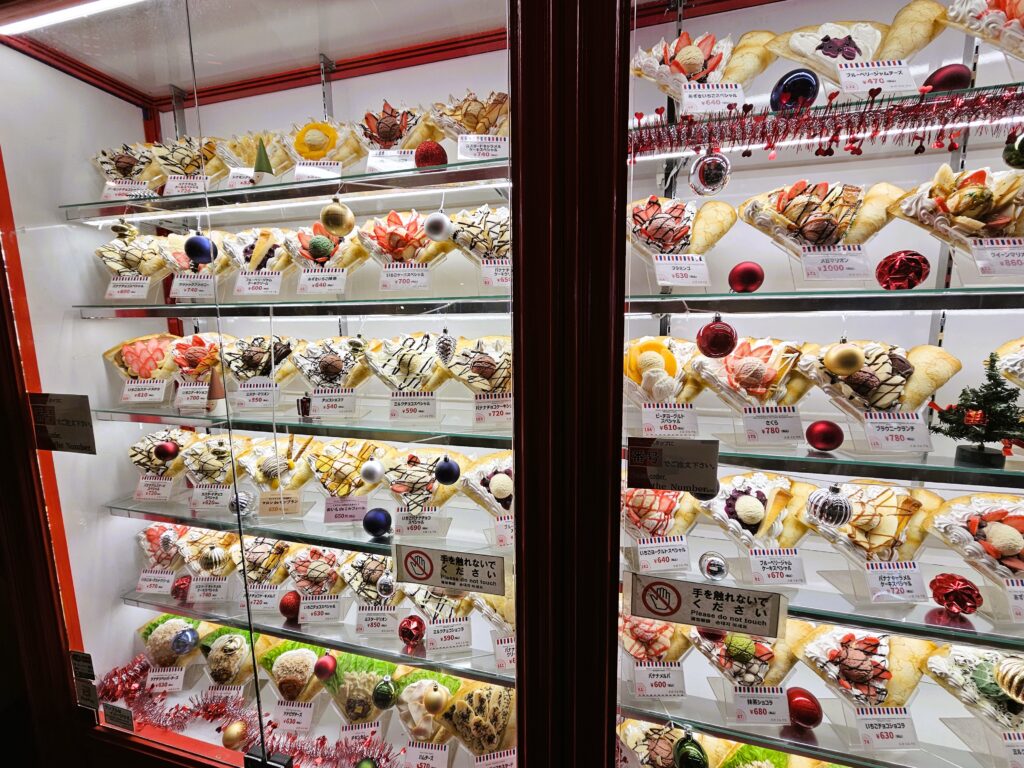
Despite all the fillings inside of it, the crepe was quite light and not very sweet at all. They do a good job of layering all the ice cream, whipped cream, straberries, and chocolate syrup so everything mixes reall well within the crepe. It’s definitely a tasty snack as you walk around Takeshita.
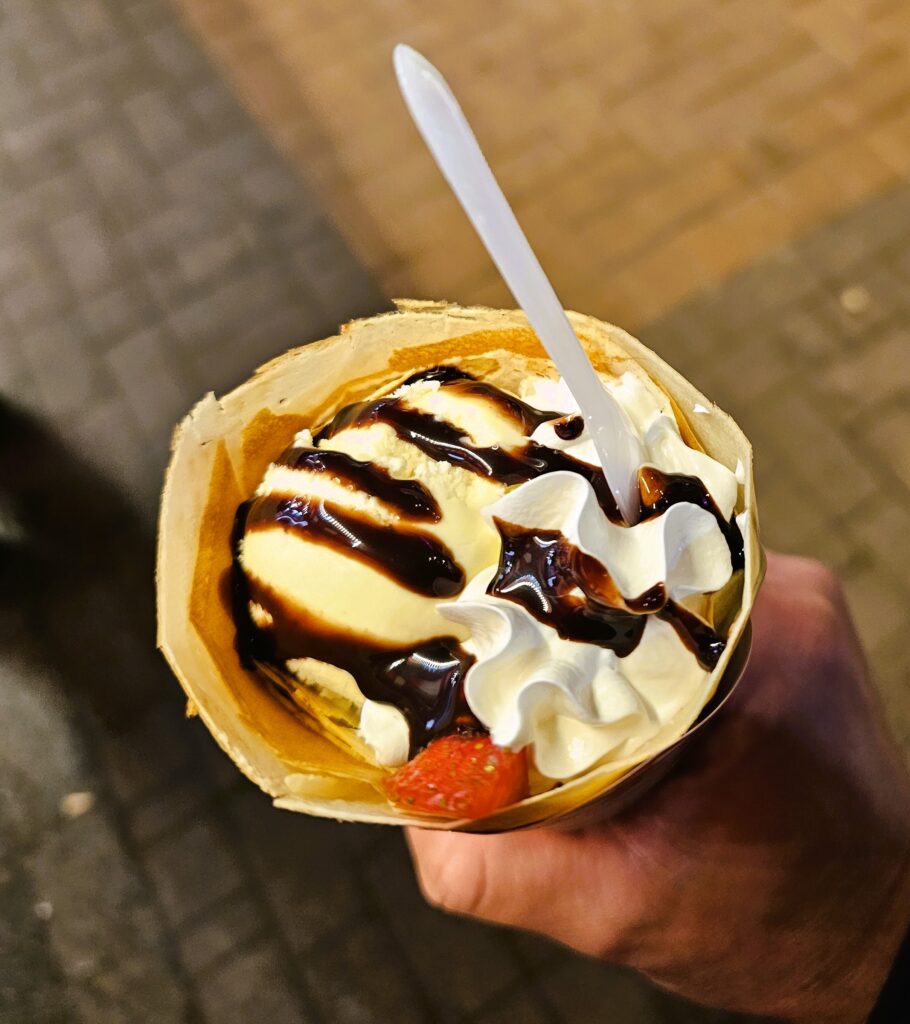
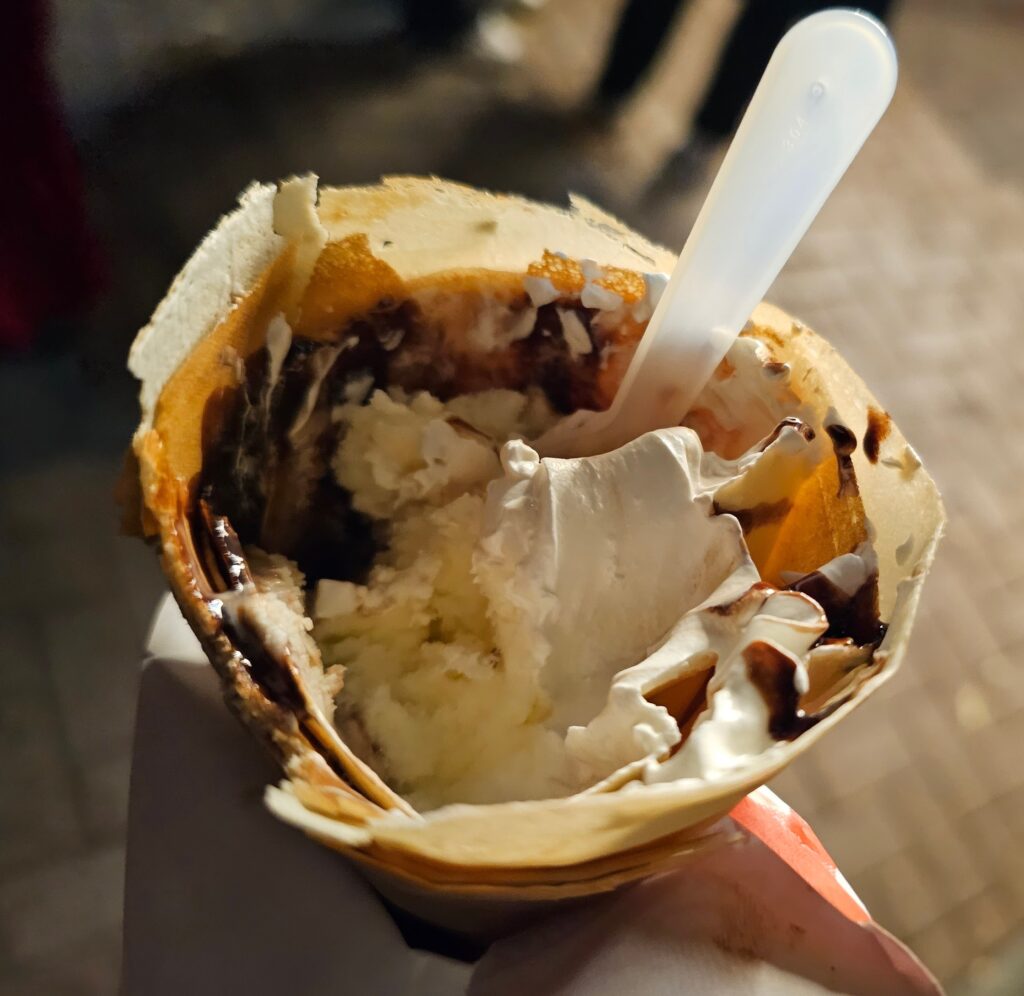
Final Opinion
Part of the fun of walking around on this famous street is grabbing some of the more iconic street foods you see people posting on Instagram. I grabbed a couple of food items here but there’s definitely a lot more to experience. The prices for the two items I got were both under $5 so they’re aren’t going to break the bank. It’s definitely worth grabbing some snacks while you’re here walking around and taking in all the sights that Takeshita Street in Harujuku have to offer. It’s all part of the experience!
-
Yoroyiya Ramen in Asakusa Tokyo Is Worth A Visit
Asakusa Tokyo is one of the most popular districts in Tokyo. The main attraction is Sensoji, the famous Buddhist temple. The bustling Nakamise Street, lined with shops selling souvenirs, snacks, and other wares will take you directly to the temple. Right next to Nakamise Street there’s the Shin-Nakamise Shopping Street which offers restaurants and more shopping. This is where I found the excellent Yoroyiya Ramen in Asakusa, Tokyo.
It’s easy to navigate the menu here since it caters to tourists and has an English menu. Like most ramen places, it’s smaller place with limited seating at the counter. There’s a few options to choose from.
I had to go with the Deluxe Ramen (1300 yen, $8.81 USD) which included roast pork, twin york egg, and bamboo shoots. It just looked too good! I was also starving since I had just landed and a nice bowl of ramen sounded like the perfect meal.
The ramen had a shoyu (soy sauce) broth base. The broth was light but had a deep flavor to it due to the inclusion of dashi. This added a bit of fishy aftertaste with every slurp of the broth. It wasn’t overwhelming at all, but really added to the shoyu base flavor.
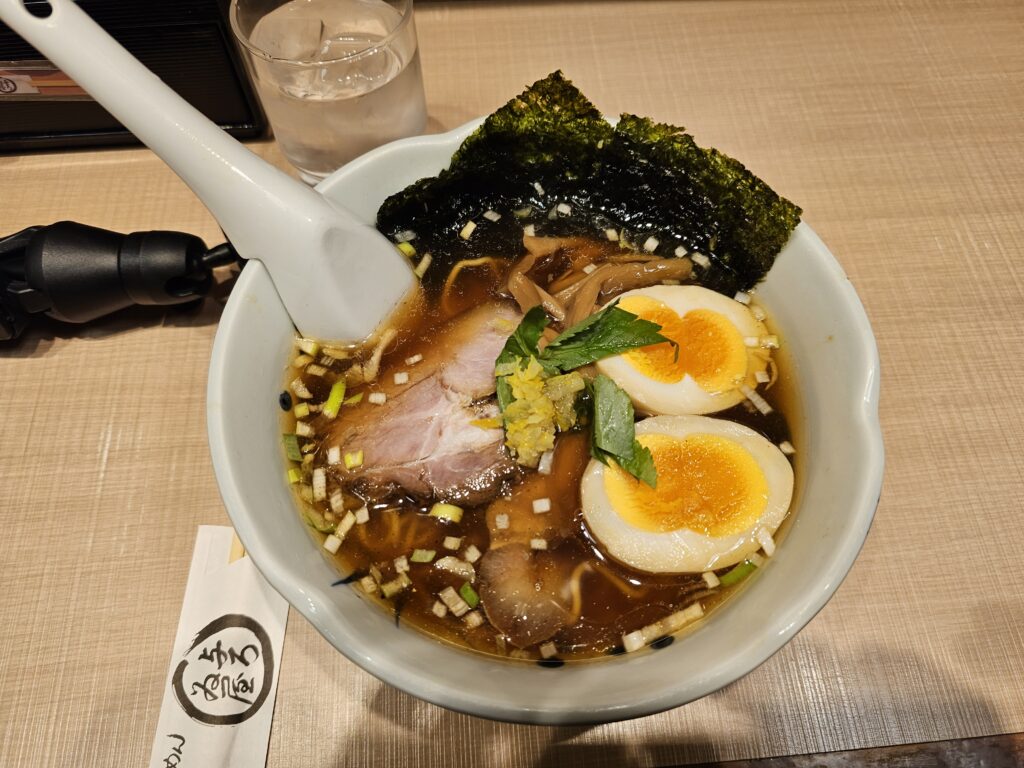
The noodles were very fresh and al dente. They were thinner and curlier ramen noodles. These were quite good.
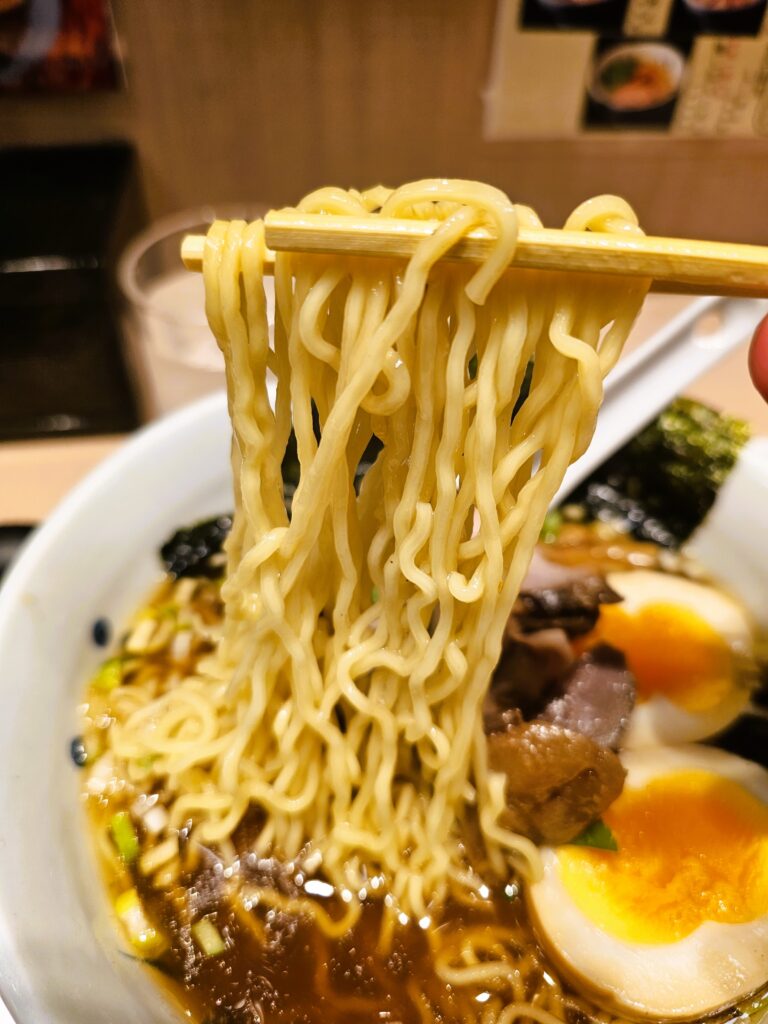
The pork was seasoned perfectly and was some of the most tender pork chashu I’ve ever had. It literally was falling apart as I picked it up. It was THAT tender. Even the egg was good. It wasn’t quite hard boiled all the way through. There was still a little yolky parts to it which added even more depth and flavor to the ramen.
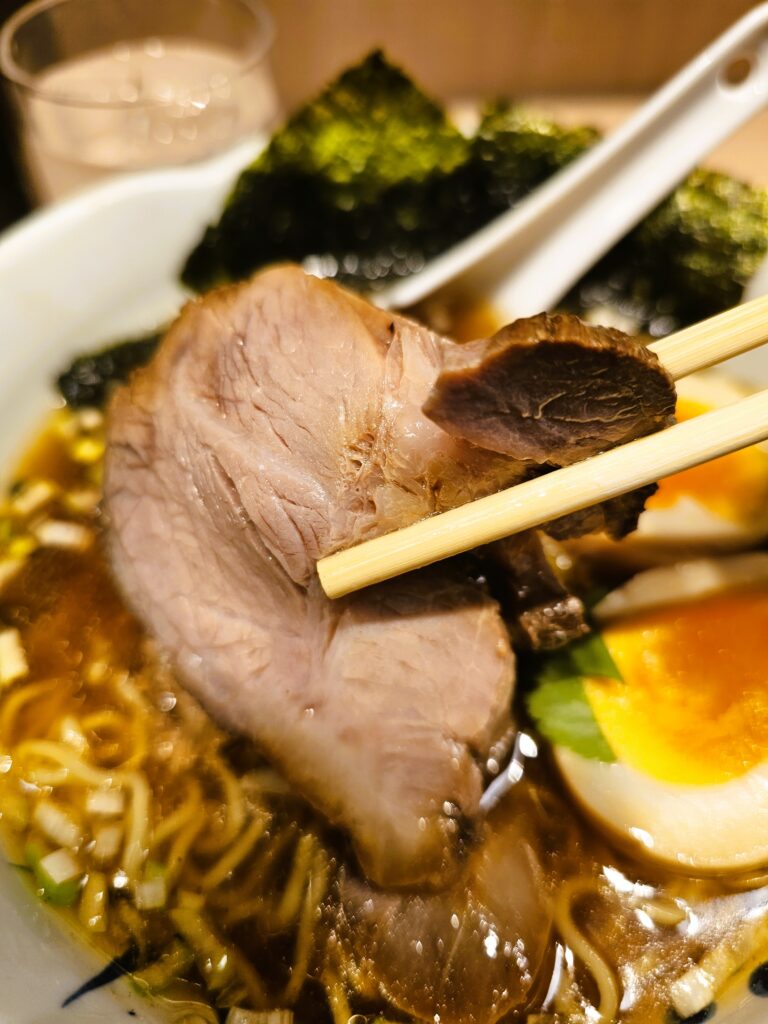
This Yoroyiya was also famous for their chicken gyoza’s, so I had to try those as well. You get three pieces for 400 yen ($2.71 USD), a good deal! Pan fried, the outside of the gyozas had a nice browned exterior. They came with a shoyu dipping sauce. The skins on these dumplings along with the filling tasted quite fresh. There’s ground chicken, green onion, and bits of glass noodle mixed into the filling. There’s some seasoning in there that gave it a hint of sweetness.
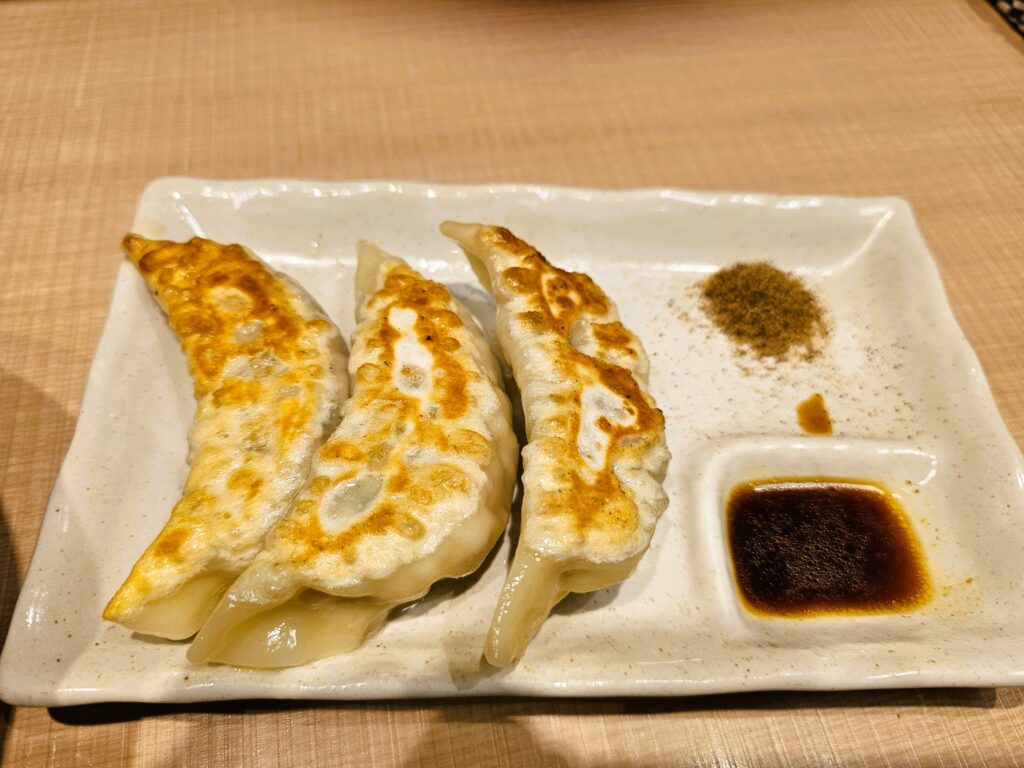
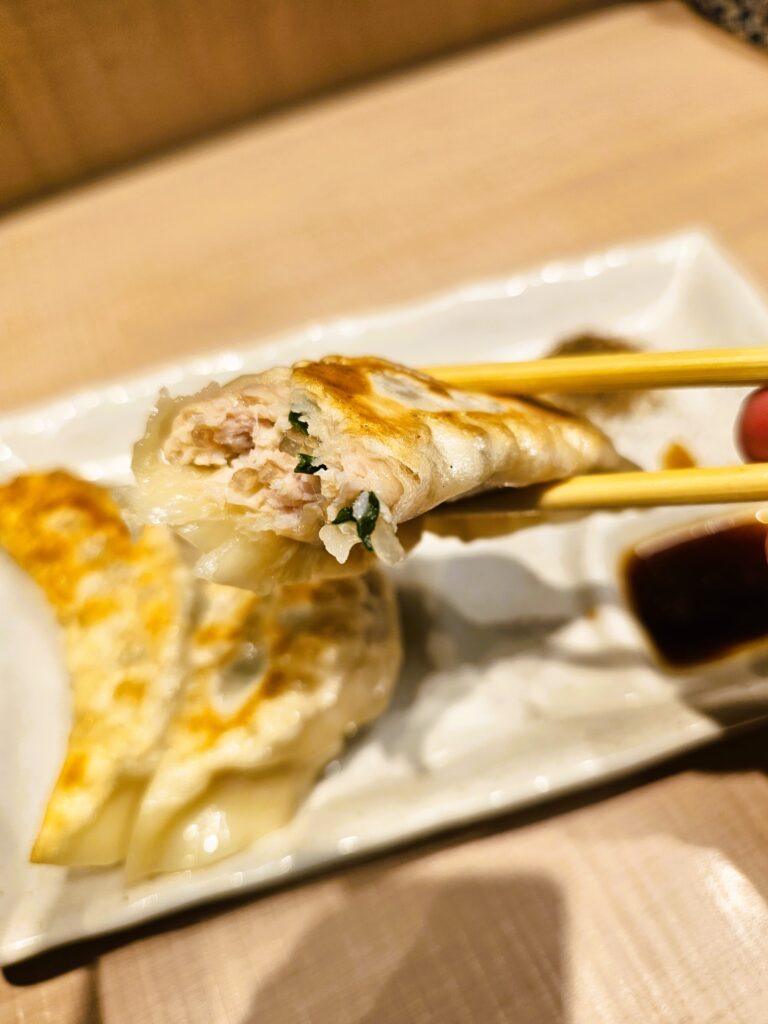
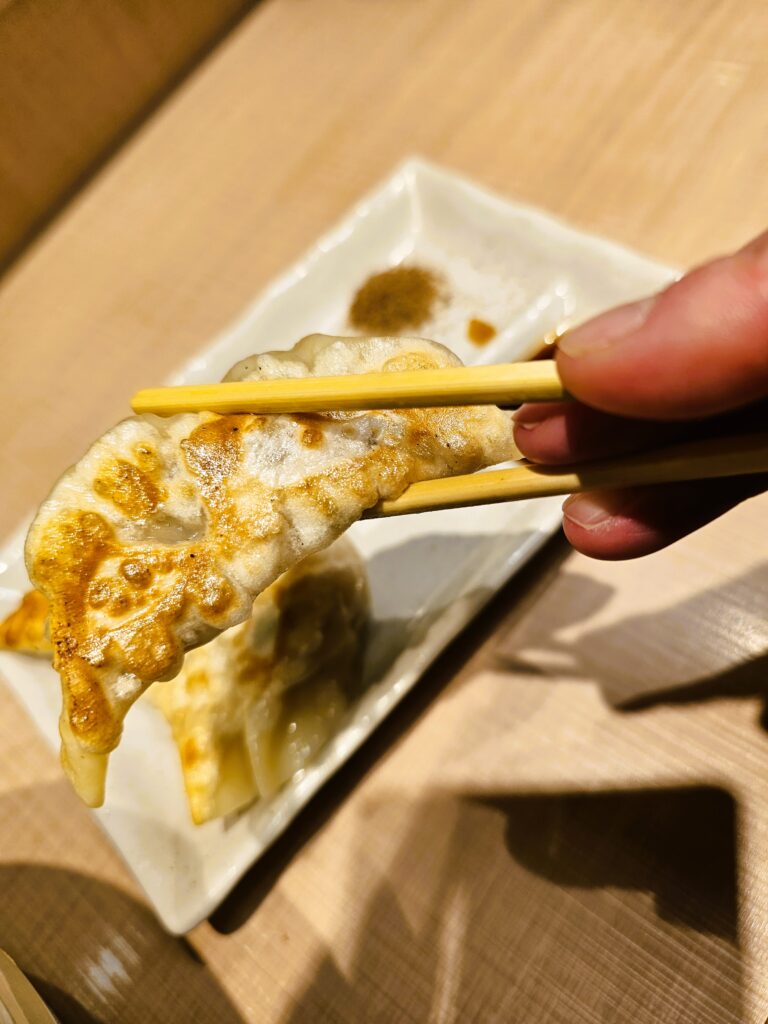
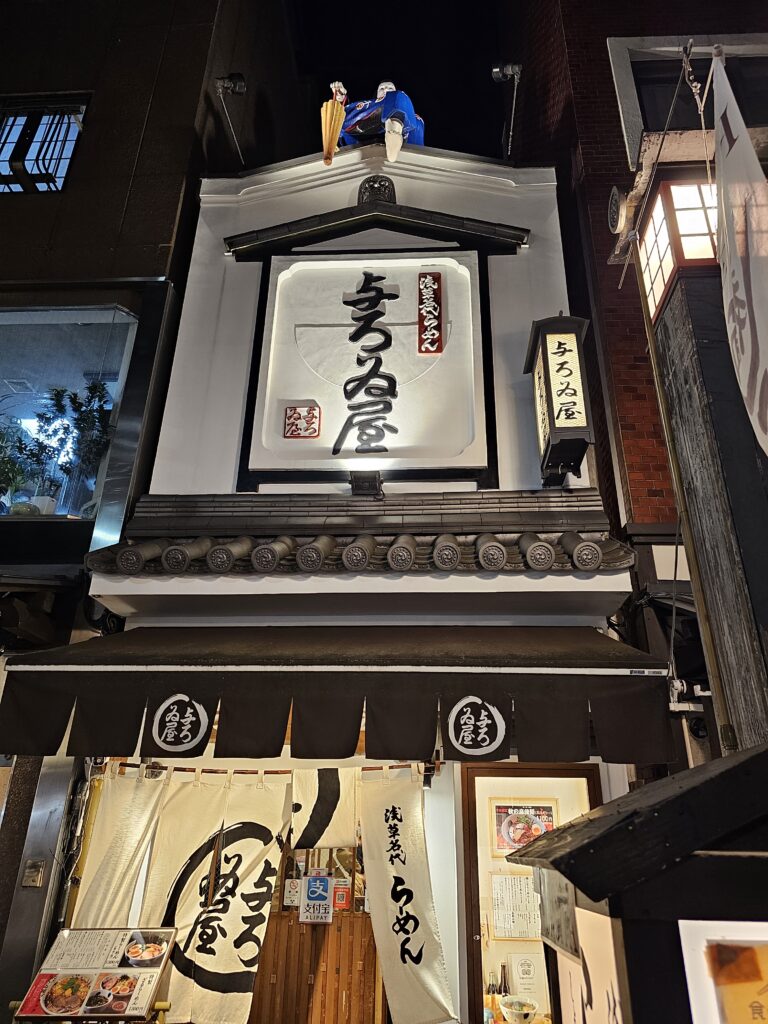
Yoroyiya Ramen 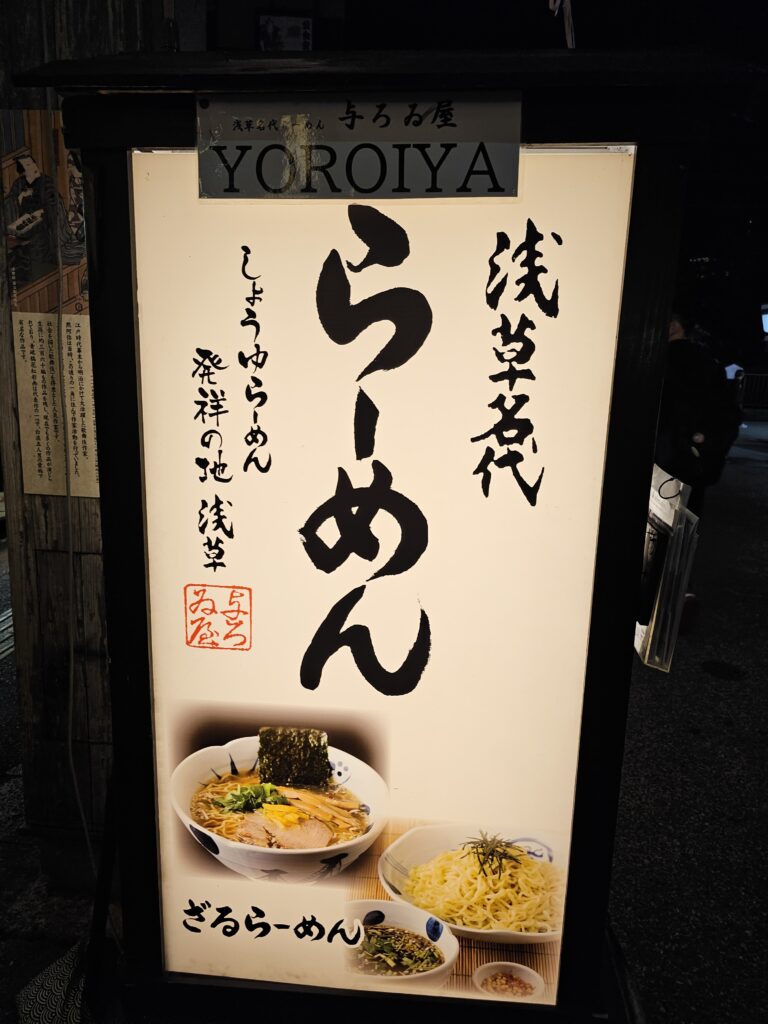
Overall, a very delicious meal in a small ramen restaurant near Senso-ji temple in Asakusa Tokyo. It’s a perfect place to stop off after visiting the temple or on the way there.
Yoroiya was a definite stand out due to it’s overall delicious bowl of ramen. The broth, the pork, the egg, were all outstanding. This was a bowl of ramen where everything in it was excellent. I can’t say that for every bowl I’ve encounted.
Yoroiya Ramen
1 Chome-36-7 Asakusa, Taito City, Tokyo 111-0032, Japan
-
Come Visit This Tokyo Brewery In An Old Train Station
Hitachino Brewing Lab
If you’re looking for a break from the bright lights and bustling nature of Akihabara, Hitachino Brewing Lab is a great place to relax with beer and relax for a bit.
About a 15 minute walk from Akihabara, it’s located in the old Manseibashi train station, across the river. Hitachino is a great place to sample fresh beers and grab a quick snack with an enjoyable river view.
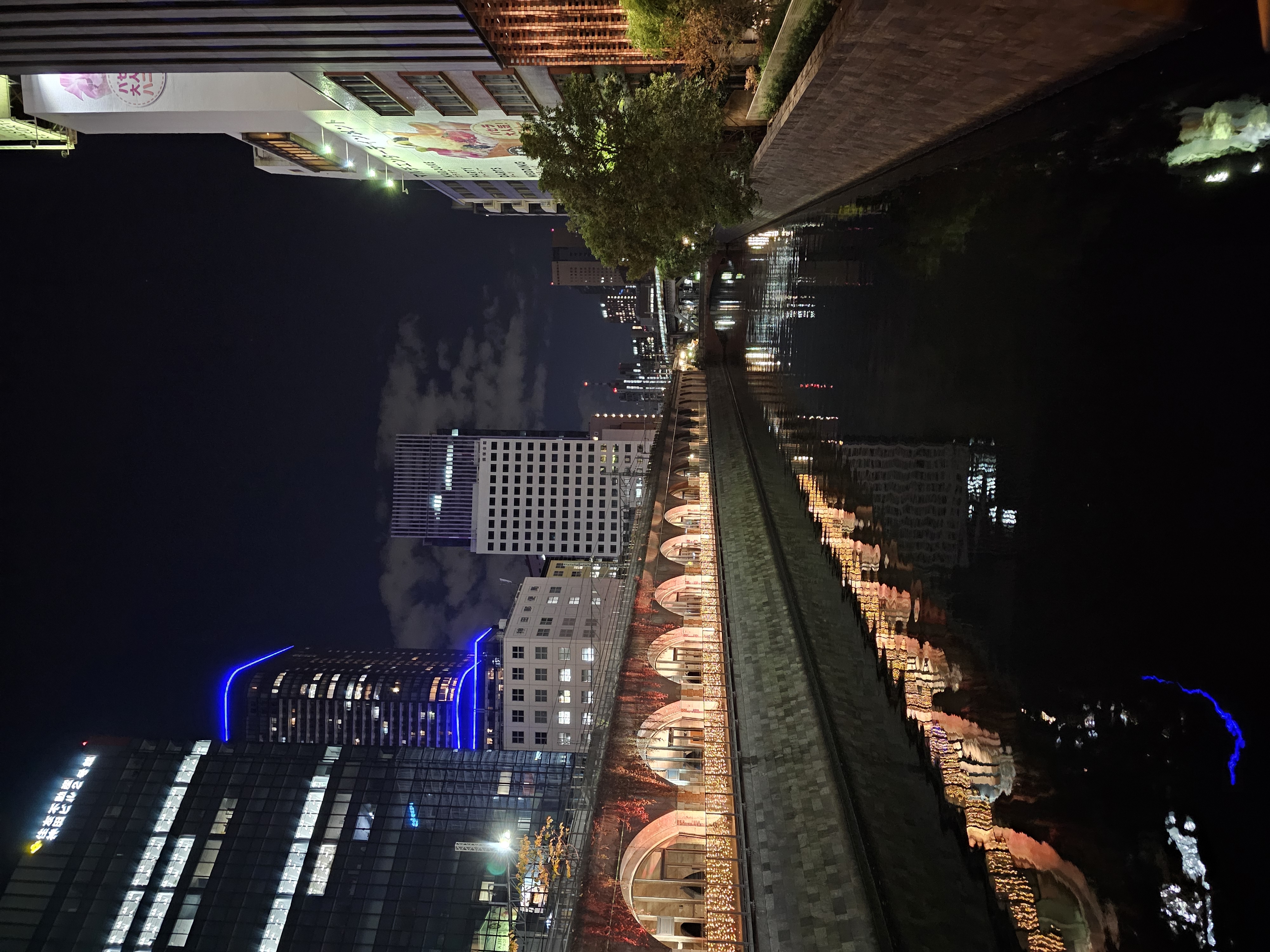
The river next to Hitachino Brewing Lab I came here around 7-8pm on a Saturday night prior to heading over to Akihabara. It did take me a little bit of time to find. This seemed to be one of those places that Google Maps had a tough time providing proper directions to so it was a little confusing.
I ended up walking through the old station which is pretty cool in itself, and I’d recommend walking around a bit if you visit Hitachino.
It’s a very tiny spot with a handful of tables and countertop seating inside the restaurant and some additional tables outside as well.
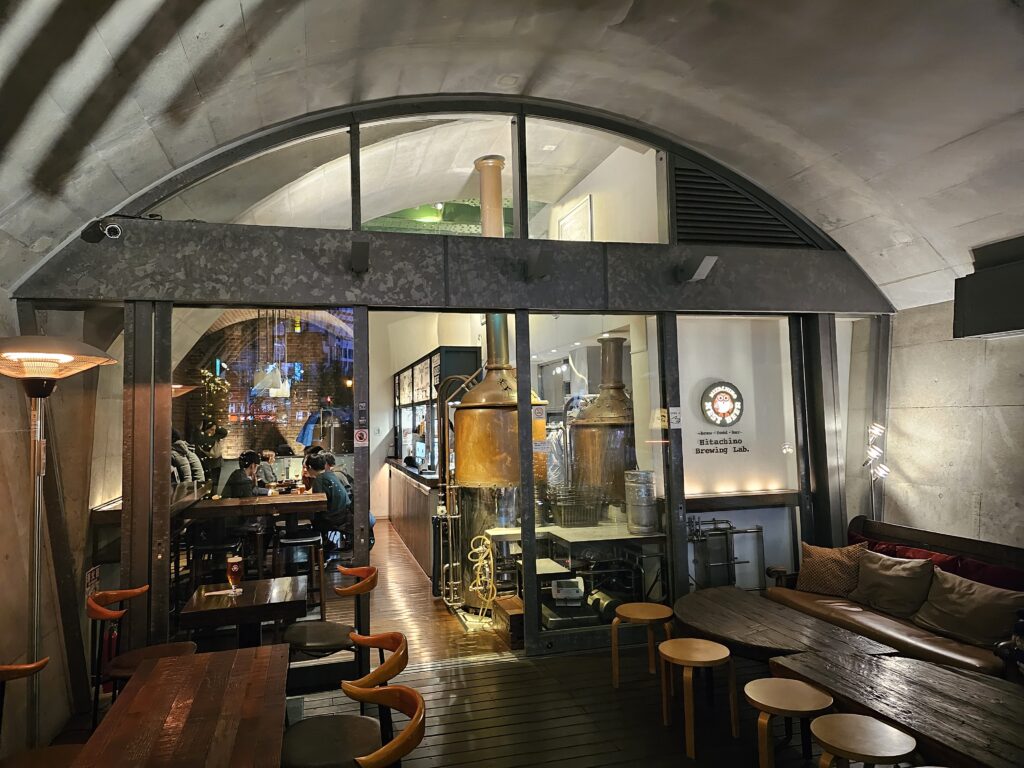
The front of Hitachino Brewing Lab The Experience
They have a nice selection of beers on draft that are brewed in house. There’s also a good selection of snacks to enjoy and a couple of sandwiches to choose from if you’re hungrier. It’s a cozy, quiet little spot for sure. I went on a Saturday night and it was very chill.
I ended up getting the pale ale along with a mackeral sandwich (1880 yen, $12.81 USD) and later got an IPA (980 yen, $6.80).
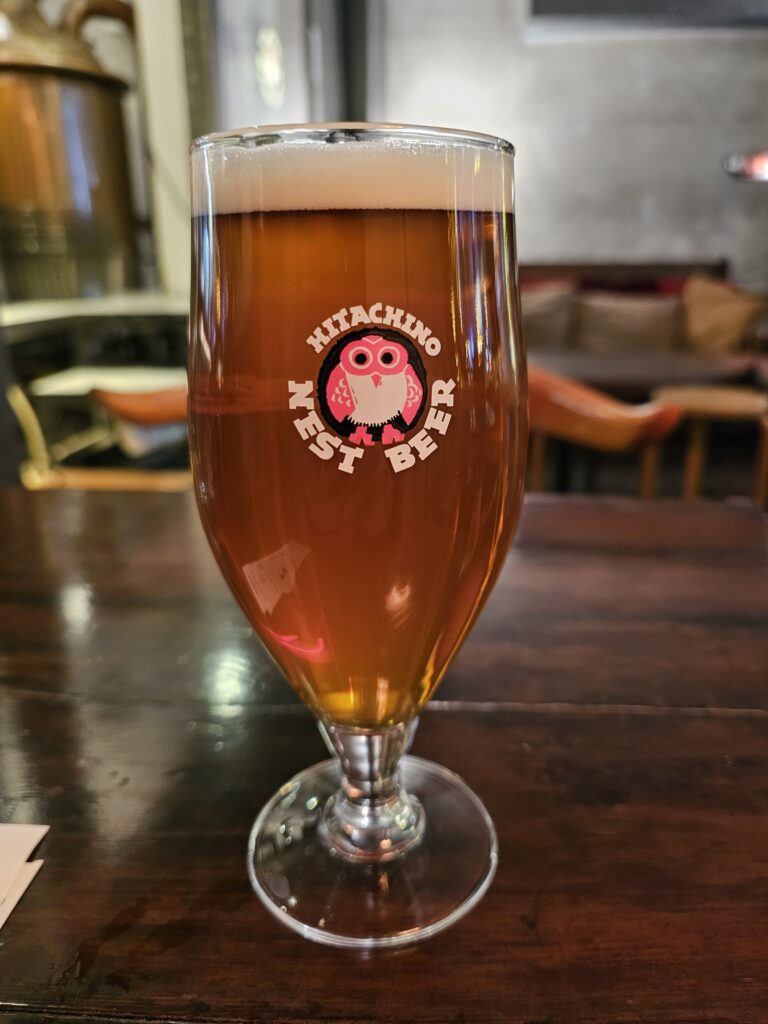
I’d never heard of a mackeral sandwich before but reviews on it were solid and I was hungry, so figured I’d give it a try! It was a very simple sandwich. There were pieces of grilled mackeral, sauerkraut, carrot, whole seed mustard, on toasted wheat bread.
You wouldn’t necessarily think that those ingredients thrown into a sandwich would very good. It does afterall sound pretty unusual. But it’s actually quite tasty. The flavor of the salty grilled mackeral and sourness of the sauerkraut really contrast and it works out. Who would have thought?
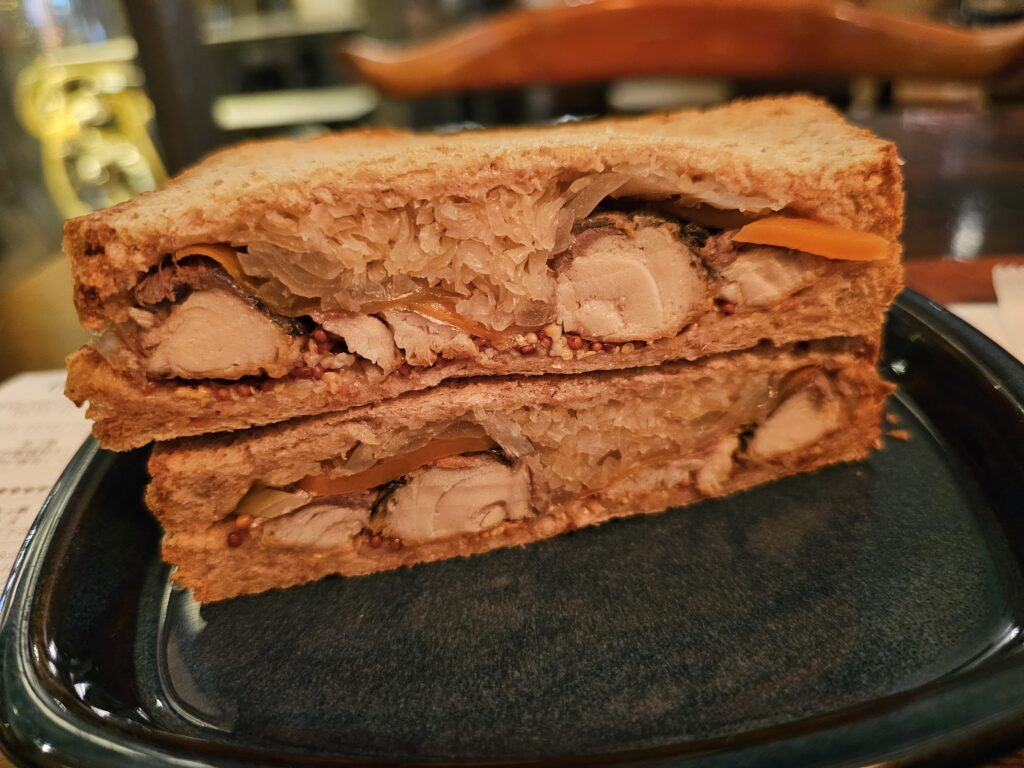
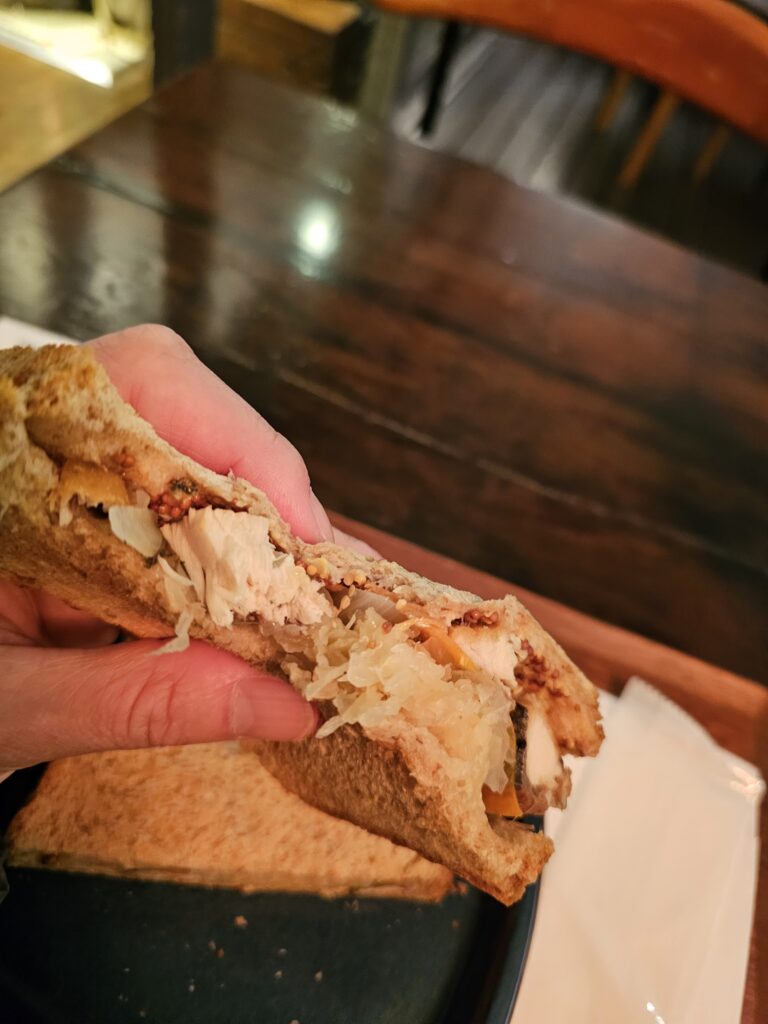
It looks like and tastes like a sandwich one would make at home, which fits in perfectly with the overall vibe of Hitachino Brewing Lab. It also goes great with a beer!
Is It Worth A Visit?
If you’re a beer fan and looking to take a break from all the sightseeing and have some good beers and snacks than Hitachino is certainly worth it if you’re visiting Akihabara.
You can see a part of town that visitors don’t necessarily wander over to.
The renovated train station is worth a look around as well. It has some shops and other restaurants located there but most seemed to be closed by the time I arrived.
N1 1-25-4, Kandasudacho, Chiyoda-ku, Tokyo
TEL.03-3254-3434[BUSINESS HOURS]
From Monday to Saturday from 11:00 to 22:00
Sunday and Holidays from 11:00~21:00 -
teamLab Planets Is A Must See Attraction In Tokyo
What Exactly Is teamLab Planets?
There’s a LOT to see and explore within Tokyo. Without a doubt it will be difficult to fit everything in on your first visit. However, one attraction I HIGHLY recommend working in to any trip to Tokyo is teamLab Planets.
teamLab Planets is a digital art museum located in the Toyosu district that includes nine highly immersive exhibits that are a sensory delight.

You’ve most likely seen pictures of it on IG. This place was destined to be an Instagram darling. But nothing can quite prepare you for seeing it and experiencing it yourself. It truly is a mesmorizing experience, regardless of age.
What To Know Prior To Going
You can either be purchase tickets online or use onsite vending machines. I’d advise to purchase ahead of time, to be able to select an available time of your choosing. Time slots, generally in the morning, can sell out.
The good thing is the museum is open from 9:00 – 22:00 and tickets are sold in 30 minute intervals. So there’s plenty of timeframes available. That’s quite late for a museum which works out well since
Below, you will find the listed pricing. Prices do get slightly more expensive on the weekend, so that’s something to consider if planning on going.
Adults (18 and over) 3,800 Yen / $26.23 USD (4,200 Yen / $28.99 on wknds) Junior High School / High School 2,300 Yen /$15.88 (2,800 Yen /$19.33) Children (4-12) 1,300 Yen / $8.97 (1,500 Yen / $10.35) Under 3 Free Disability Discount 1,900 Yen / $13.12 (2,100 Yen /$14.50) - You will be walking barefoot through this art museum. When first entering the museum, they will usher you to a large locker room where you can store your shoes and belongings.
- There will be certain areas where there’s shin / knee deep water so you’ll want to either wear shorts or pants that you can roll up to your knees. They do supply shorts, if needed, for free and there’s a changing room.
The Experience
The below aren’t all of the exhibits, just a few. The others I found to be a little difficult to get decent photos of due to the movement or there just being a boatload of people. Yes, there will be A LOT of people, which should be expected.
I won’t spend too much time on the experience or the actual exhibits since pictures and words can’t really do the actual experience justice. Walking through the first exhibit really sets the tone and builds excitement for the rest of the museum and it doesn’t disappoint!
It will take a couple of hours (largely dependant on how long you want to linger to enjoy each exhibit) to walk through the exhibit.
The “garden” exhibit is separate from the rest of the exhibits and you’ll only get three minutes to enjoy it. I wish it were longer but get why it’s only three minutes. It’s quite mesmerizing and peaceful and people would certainly linger for extended periods of time. It’s a fitting finale to a truly memorable exhibit that you won’t soon forget.
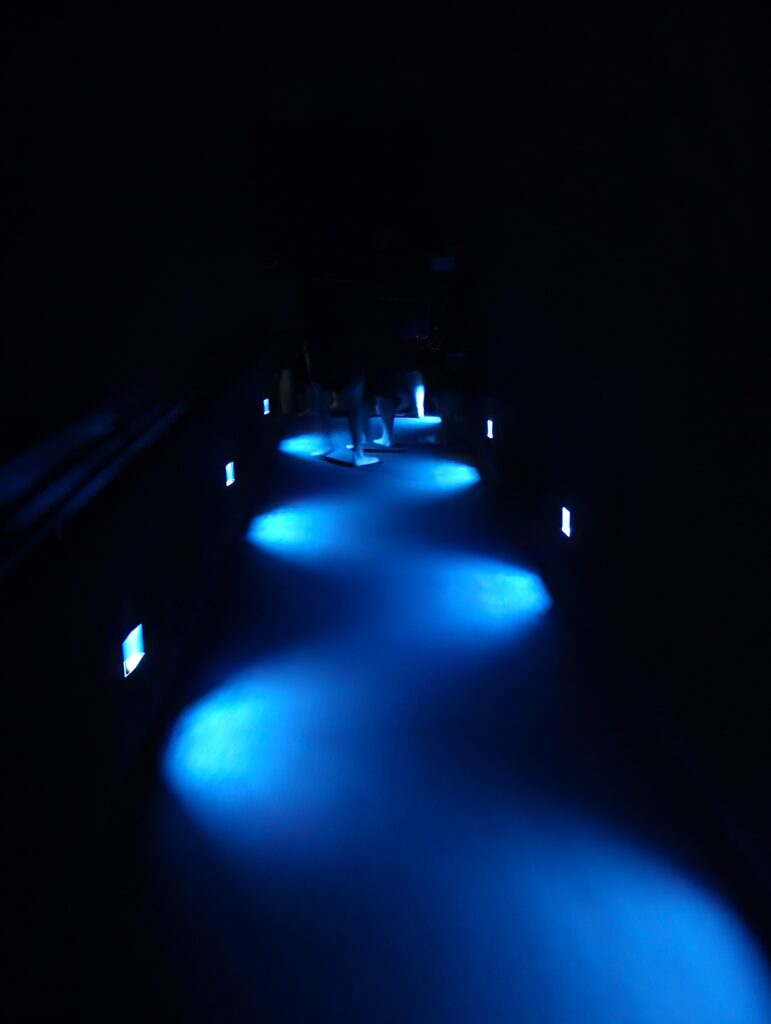
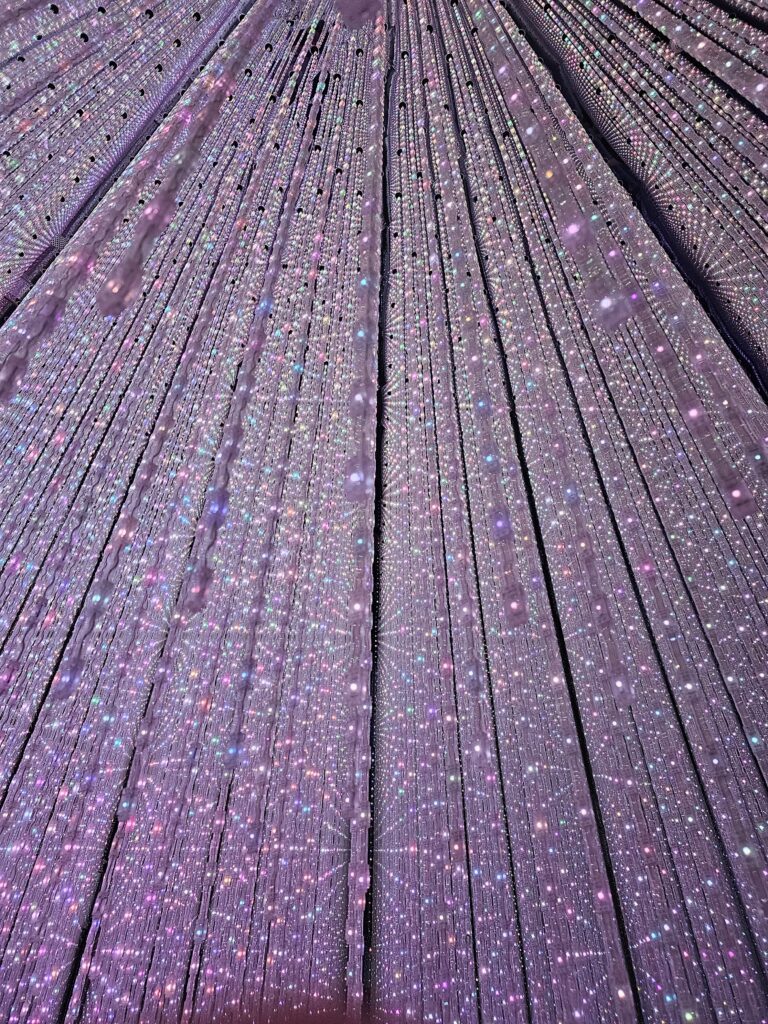
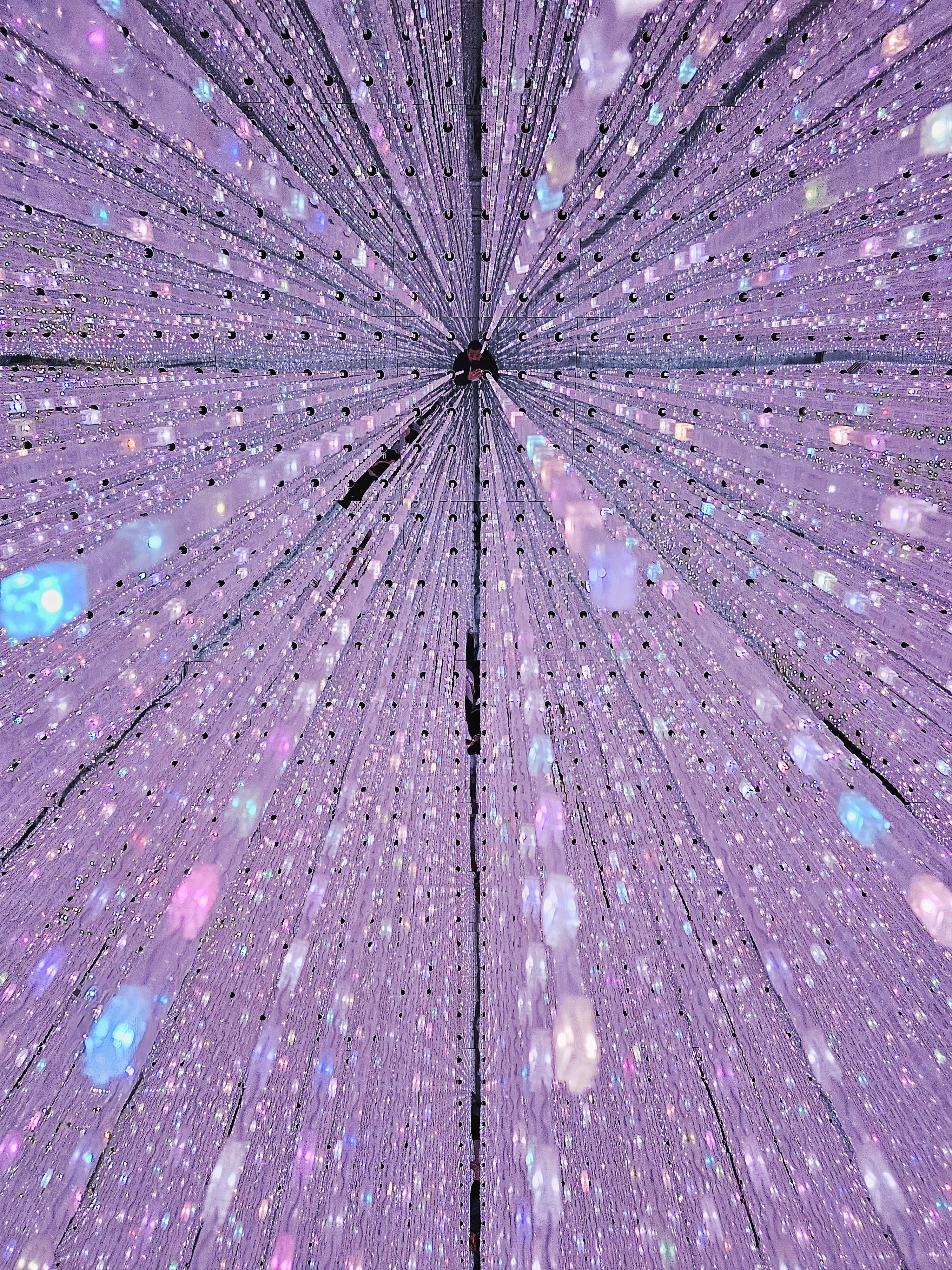
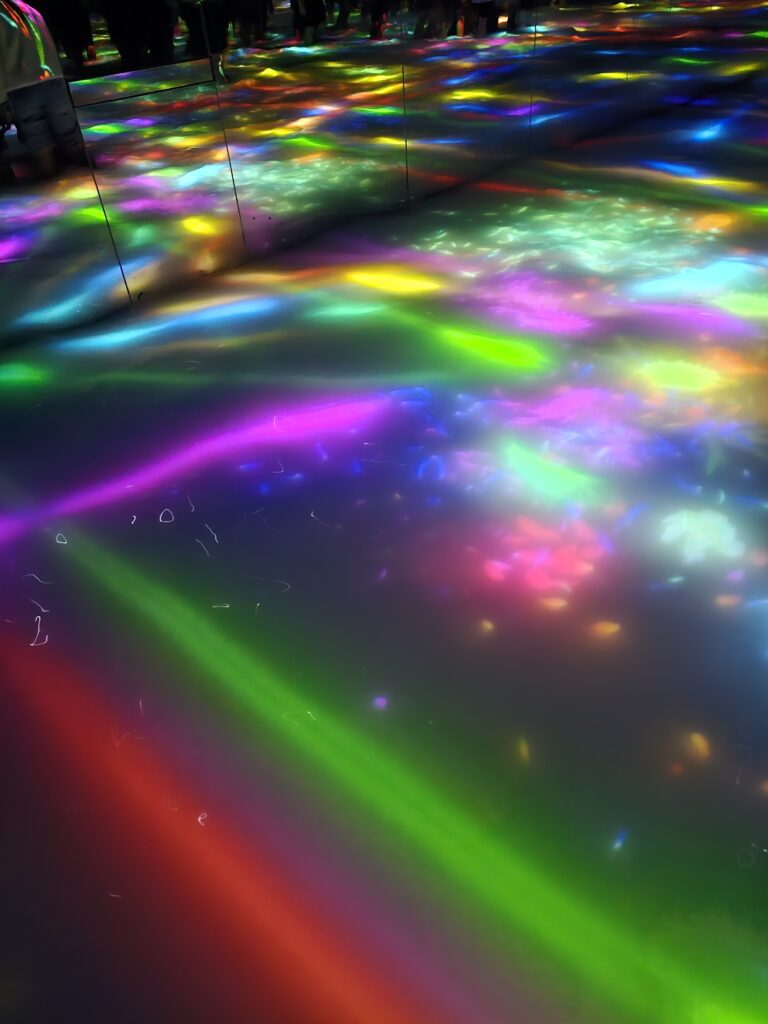
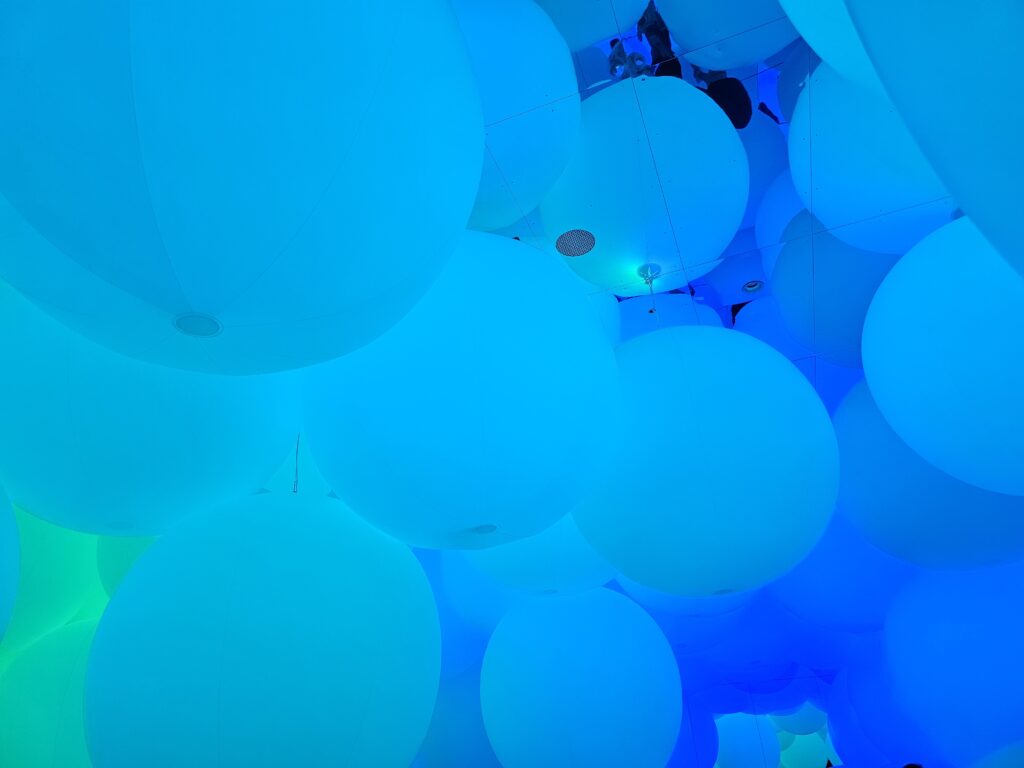
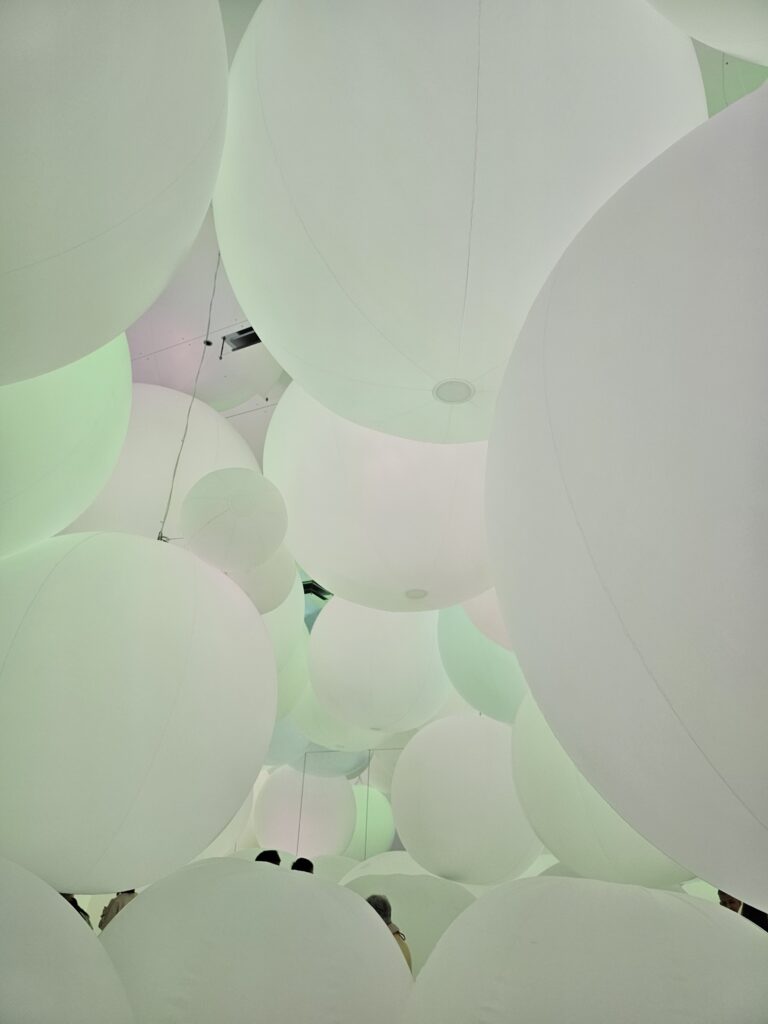
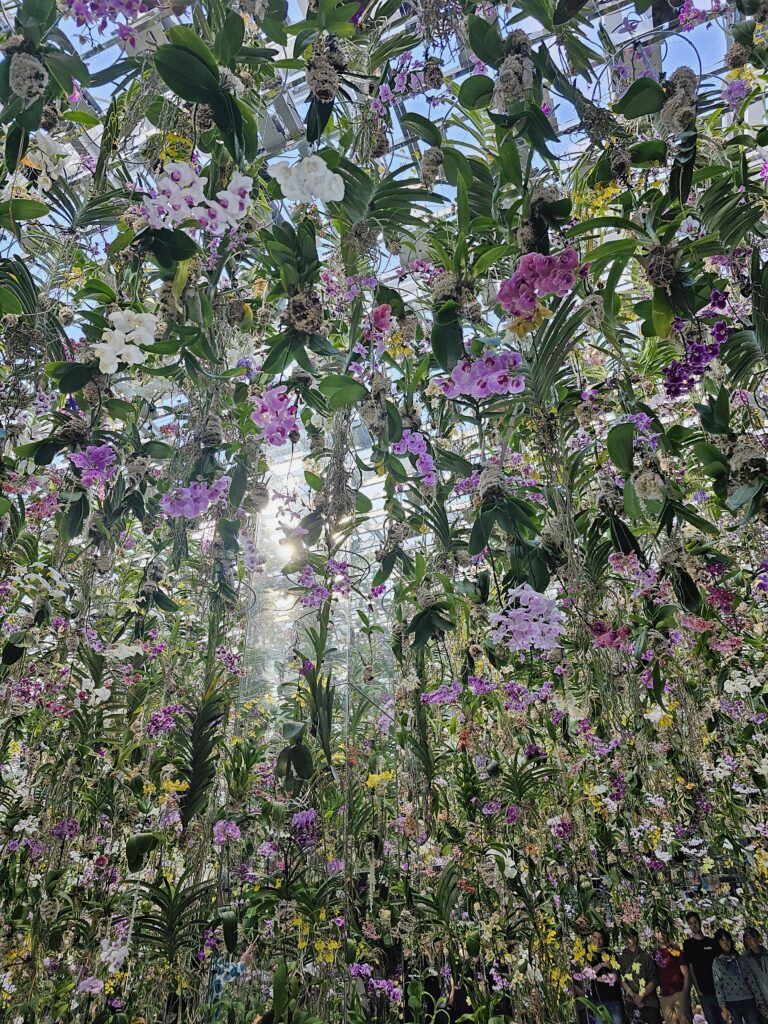
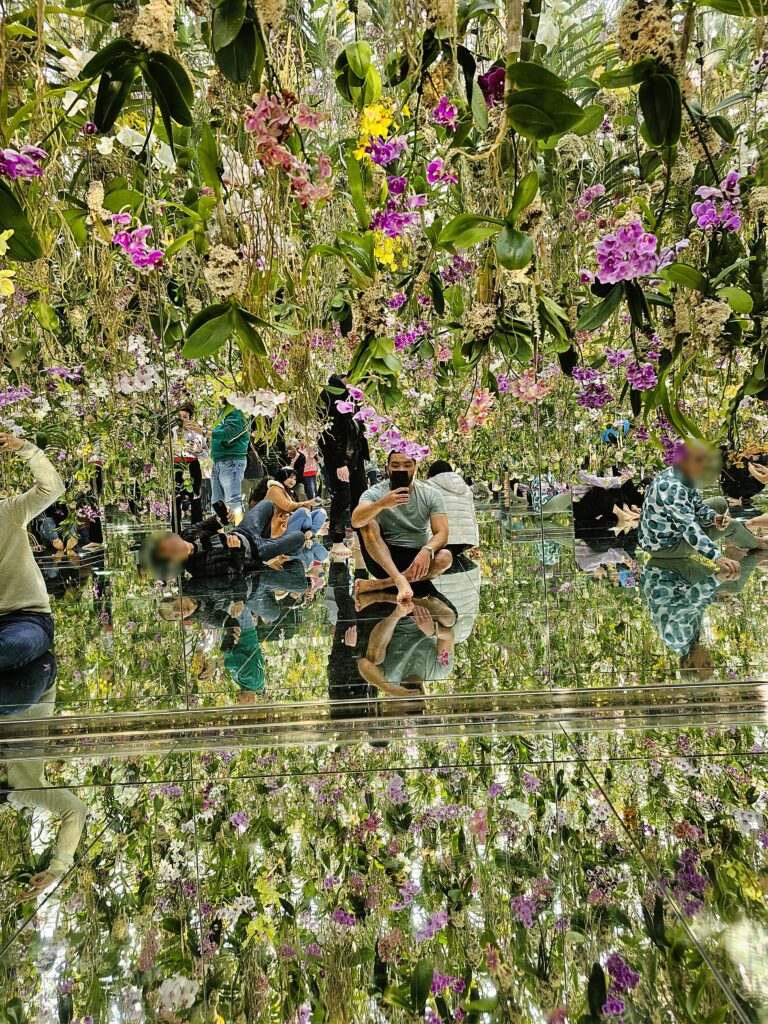
-
How Expensive Is A Three Week Trip To Japan?
When thinking of traveling to a new destination one of the first things people are going to look at is how expensive is it to travel there? Japan has always been a very popular destination for travelers and was often looked at as being a very expensive trip. This may have been the case years ago but with the yen struggling, it’s made a vacation to Japan very affordable. How affordable? That’s totally dependent on what country you’re coming from, how you want to travel, where you want to stay, and what you want to eat.
I went during a non-peak season – during December – which made the three week trip to Japan more affordable as well. I went with the intent on having fun but not looking to spend gobs of cash so I’d say I was looking at a mid-level budget.
Transportation
The most expensive cost, of course, will be the flight to Japan. But since everyone is flying out of a different location I’ll leave that out and just breakdown the total I spent during my three week trip to Japan.
Withouth the flight I spent a total of $526 USD. That amount includes the two week Japan Rail (JR) Pass I bought (pre-Oct 2023 price increase) for $318, and the Pasmo card and all the money I loaded onto it (used for subways, buses, street cars, etc) for $101 and one domestic flight from Sapporo to Osaka ($107).
The JR Pass dramatically increased in price in October 2023 and will most likely not be worth getting at this point, unless you plan to take a LOT of Shinkansen (bullet) trains over the course of your trip. Public transportation is very cheap and is the best bet to get around efficiently and cheaply. There are taxis available and Uber works as well, so those are viable options but will be much more expensive. Also, domestic flights are pretty cheap as well so they’re something to consider if Shinkansen prices seem high.
Accommodations
For my three week trip to Japan I spent $1178 on lodging. I stayed at budget hotels essentially the entire time. I didn’t stay at any hostels or capsule hotels nor any five-star hotels. I stayed at all three-star hotels which are quite affordable, clean, and nice. Sure, the rooms are the size of a closet but I didn’t spend much time in the room so it really didn’t matter. What did matter was the price point for me during this particular trip.
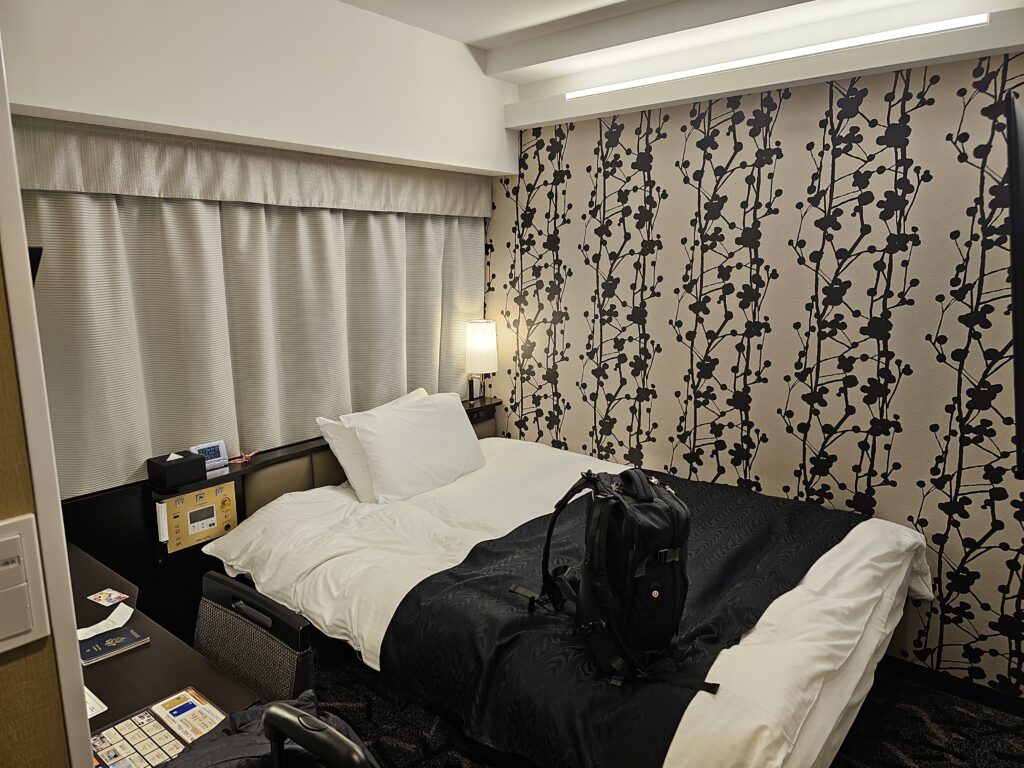
APA Hotel in Taito City in Tokyo 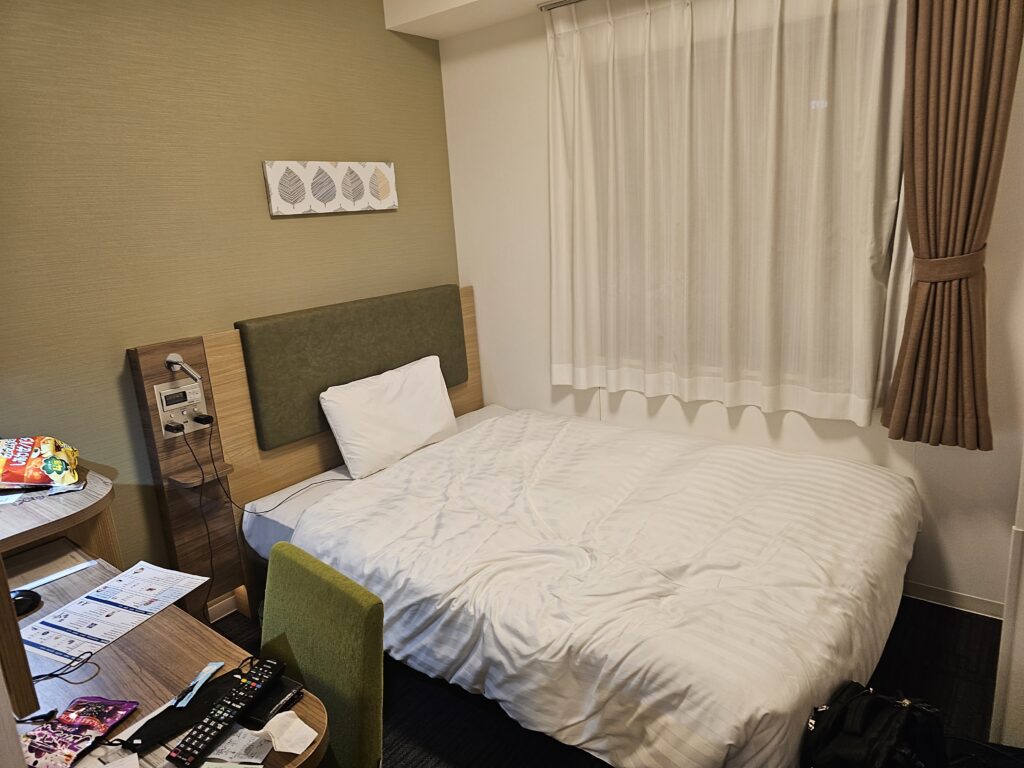
Another typical hotel room, this one in Sapporo The cheapest options will be hostels and the capsules. The 3 star hotels are a nice middle ground option which you can grab for $45-$65 a night.
Food
Outside of accommodations, food is likely to be the highest price point on the trip. I spent about $1017 on food on my three week trip to Japan. The food pricing for Japan is well-rounded. If you want to go cheap you can easily find a meal for under $10. A bowl of ramen is like $8 in a lot of places. I had a bowl of tempura for about $3.50. Grabbing food at one of the local convenient stores like 7-11, Family Mart, and Lawson’s will be very affordable and the food at these places is actually quite good.
Of course it’s very easy to get high quality, delicious food, that will be more expensive. Think exquisite cuts of sushi and mouth-watering wagyu. I pretty much straddled the line when it came to food expenditure, splurging here and there for some more expensive meals but mainly getting meals that were between around $8-15.

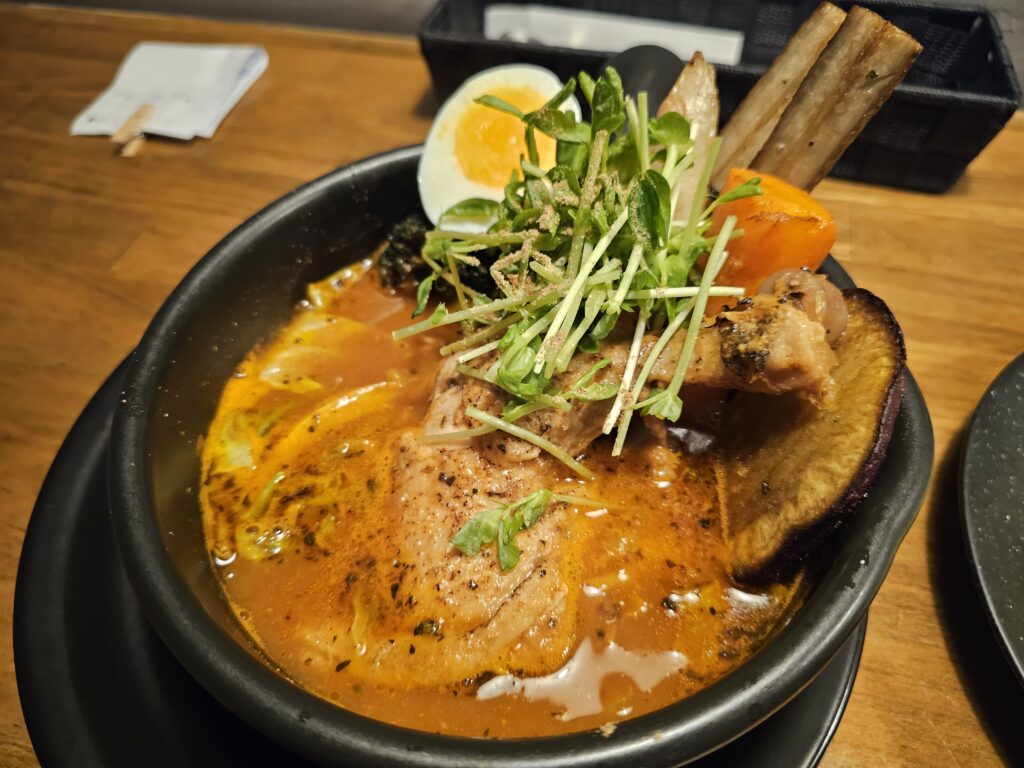
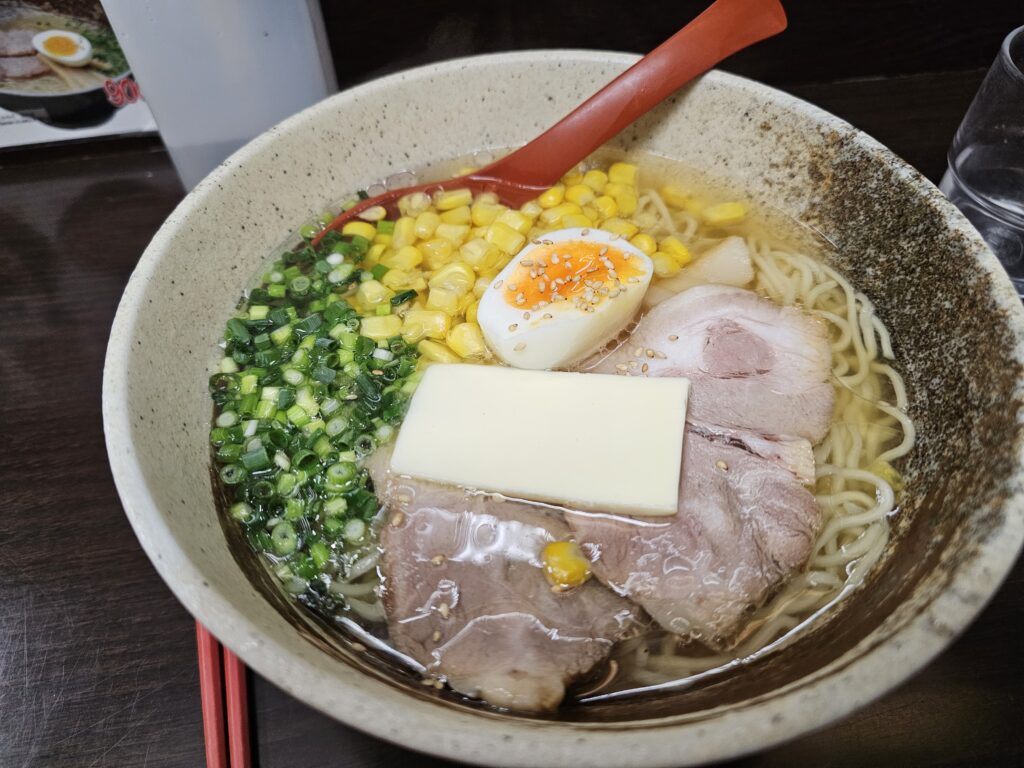

Attractions
There’s a million things to see and do in Japan. A lot of things, like most temples and shrines, parks, are free which is great. Of course other attractions – museums, observatory points, ropeways, Tokyo teamLab Planets – have an entrance fee. Over my three week trip to Japan I spent $184 on attractions. A large chunk of this was due to Tokyo Disneyland ($63). The other notable expenses were Tokyo teamLabs Planets ($25), and the Osaka Aquarium Kaiyukan ($18). All the other attractions (a lot of museums, a couple castles, ropeways, observatory points) I went to were $10 and less, usually about $5. So depending on what you’re interested in, attractions can be very cheap.

Tokyo teamLab Planets 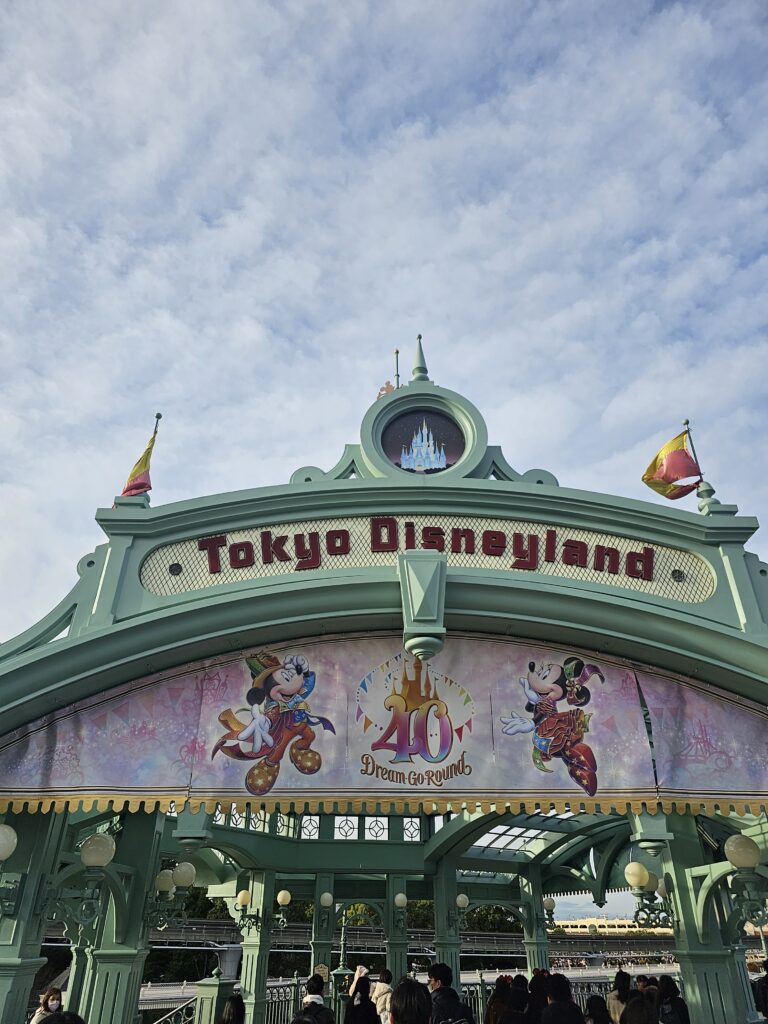
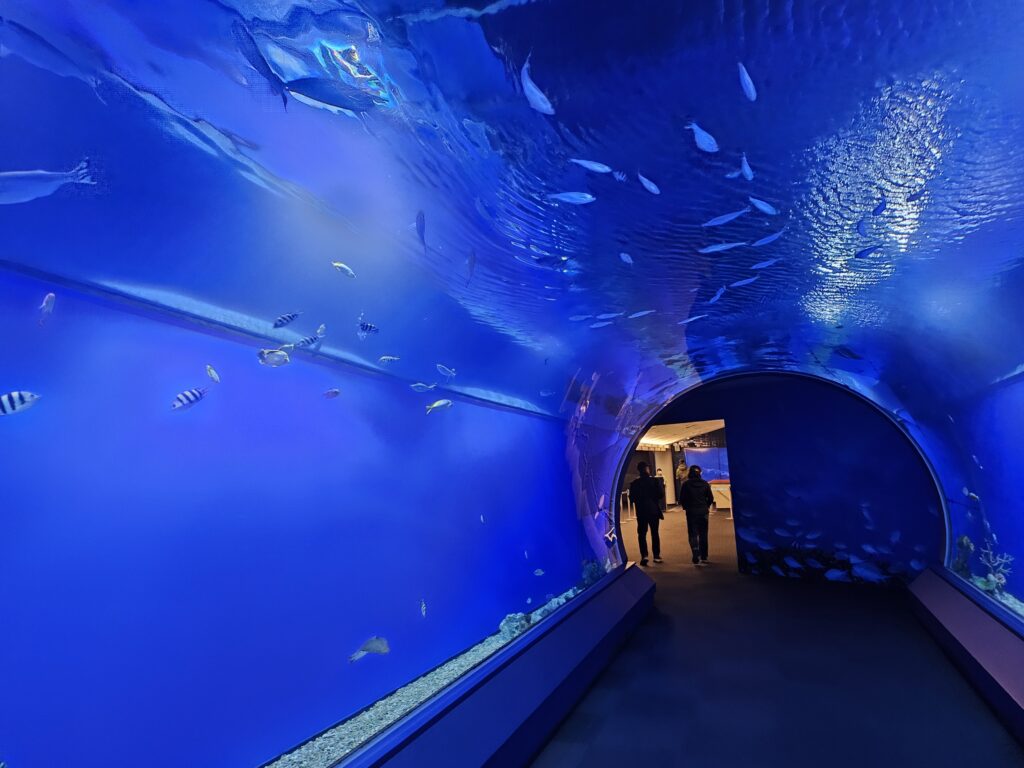
Osaka Aquarium Kaiyukan 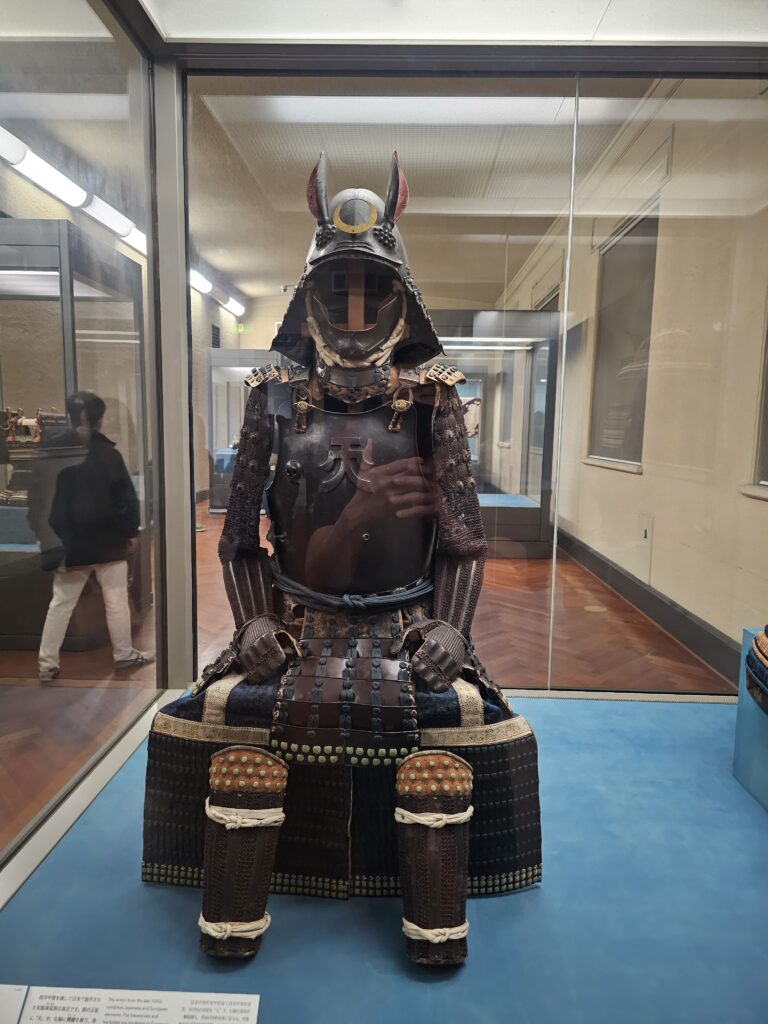
Tokyo National Museum Souvenirs
It’s easy to go overboard with souvenirs, either getting things for yourself or loved ones. I spent a total of $217 on souvenirs in my three week trip to Japan. Pretty much all t-shirts and a couple of hats. Souvenirs will always be at the individual’s discretion. Some people will buy a lot of souvenirs, others won’t buy anything. I bought a little more here than I generally do, I couldn’t help myself at the Hokkaido Nippon-Ham Fighters team store!
Total Expenses For My Three Week Trip To Japan
In total I spent $3224 over a three week span, excluding the flight. With the flight the total was $3930. If I add up the accommodations, food, and attractions, I averaged about $113 per day. Not too bad. There’s definitely areas where I could have cut costs like accommodations and food, to get to $100 per day if I was really tracking my expenditures.
So yes, traveling through Japan on a $100 per day is VERY doable if that’s the goal. Depending on your accommodations, let’s say you paid around $55 on average for hotels and had $45 to play around with the rest of the day, it would be fairly easy to do.
There’s a ton of cheap good food that you can find throughout Japan and plenty of attractions that are free or around $5. I mean just walking around Tokyo in itself is memorable since there city is so vibrant. If $100 or less per day is the goal, you can definitely do that in Japan and still have a very enjoyable experience!
-
Is the Japan Rail (JR) Pass Worth It After the October 2023 Price Increase?
Why Did The JR Pass Increase In Price?
The Japan Pass (JR) has long been a staple for visitors to Japan. It allows the use of of all Japan Rail trains, metros, and buses throughout the entire country, including the Shinkansen bullet trains.
Due to the decline in value of the yen against other currencies, rising costs of energy, maintenance, and repairs prompted a massive increase of the JR Rail Pass in October 2023. How massive? The increases range between a whopping 65% – 77%.
The Before And After Price Breakdown
Here’s the breakdown for the regular JR Pass. There’s also a Green JR Pass which includes first class seating which is more expensive (all prices are for adults. Children passes are half of the amounts for the new pricing):
7-Day Pass:
Old Price – 29,650 yen / $207.25 USD
NEW Price – 50,000 yen / $349.49 USD – 69% Increase
14-Day Pass –
Old Price – 47,250 yen / $330.27 USD
NEW Price – 80,000 yen / $559.18 – 69% Increase
21-Day Pass
Old Price – 60,450 yen / $422.53
NEW Price – 100,000 yen / $698.98 – 65% Increase
As you can see, the price increases are quite significant. Deciding on how you want to travel throughout Japan just became much more important!
The JR Pass Calculator
This is a valuable tool to use to ultimately help you decide if a pass is worth it or not. As an example trip itinerary I plugged in my recently completed 3-week trip. I bought the 2-week pass since the bulk of the JR Pass was used after my first week.
Tokyo –> Hakodate 20,000 yen / $139.80 USD Hakodate –> Sapporo 14, 500 yen / $101.35 Sapporo –>Otaru 1,000 yen / $6.99 Otaru –> Sapporo 1,000 yen / $6.99 Osaka –> Nara 500 yen / $3.49 Nara –> Osaka 500 yen / $3.49 Osaka –> Himeji 3,500 yen / $24.46 Himeji –> Osaka 3,500 yen / $24.46 Osaka –> Kobe 500 yen / $3.49 Kobe –> Osaka 500 yen / $3.49 Osaka –> Tokyo 14,000 yen / $97.86 Additional JR trains and JR Metro Lines 1,500 yen Total 61,000 yen / $426.38 Sapporo –> Hakodate 14,500 yen / $101.35 USD Hakodate –> Tokyo 20,000 yen / $139.80 Osaka –> Tokyo 14,000 yen / $97.86 Hypothetical Total 109,500 yen / $769.15 I’d add in an additional 1,500 extra yen to the total as well since I took a couple trains and used the JR metro lines while in Osaka too. Based off this, the old 14-day pass (47,250 yen) was worth it.
It defintely would not be worth it based off the new pricing for a 14-day pass (80,000 yen).
I was curious to see if the pass would pay off if I took trains all the way from Sapporo to Osaka. I flew on my actual trip.
Based off this hypothetical trip utilizing nothing but trains, the 14-day pass would certainly be worth it. But would I actually do that? No way.
The flight I took cost less than $100 and took 2.5 hrs. Sure, you get to the airport a couple of hours beforehand so we’ll say the total time is about 4.5 hours between the airport and in the air. I estimate the total time on the train to be at least 11 hours and that’s not counting how long I’d have to wait in between trains. That’s a very long travel day and I’d essentially lose that day in Osaka.
Is It Worth It?
In my opinion, it’s not going to be worth it. Using the same calculator I did another hypothetical trip consisting of Tokyo, Kyoto, Osaka, and Hiroshima. This is generally the route people take on their first trip to Japan. The total amount for those bullet trains comes out to 41,500 yen, which wouldn’t even make the 7-day pass worth it.
The bullet trains are fast, convenient, comfortable, and a very cool experience, but flying is still going to be faster and cheaper. You can always mix in some bullet trains to get the experience and will most likely use some local rapid express / limited express trains as well (these aren’t too expensive) but it seems like the days when the JR Pass were a good deal are now over, sadly enough.
-
Thinking Of Going To Japan? Here’s Some Helpful Japan Trip Tips For First Timers!
Going to a new country for the first time can always be a little daunting. Figuring out what you need to take, where to stay, how to get around, what sites you want to visit, it can be a lot! I’ve been to Japan twice now, by no means am I a Japan expert, there’s always something new to learn while traveling through this amazing country. But I have picked up some random Japan trip tips that I feel may be of use for travelers that have never been there.
Choose Where In Tokyo You Want To Stay
This is assuming you’re planning on flying into Tokyo.
First, let’s figure out where exactly in Tokyo you want to stay. Tokyo is an absolutely massive city. It’s comprised of 23 special wards, 26 cities, five towns, and eight villages. Every special ward has several districts within it as well. There’s a lot of options of where to stay due to this. Like A LOT of options.
The most popular places in Tokyo are Shibuya, Shinjuku, Ginza, Roppongi. Unsurprisingly, these will also be the most expensive.
I think what’s most important is how close a subway station is to where you intend to stay. Tokyo’s infrastructure is massive and can get you anywhere in the city, no exaggeration.
So long as you’re within walking distance to ANY station and you know how to use Google Maps then what ward / district you stay in doesn’t much matter to be honest.
How long you’re staying in Tokyo, what your budget looks like, and what you want to see may ultimately influence exactly where you stay.
If you’re only in Tokyo for a couple days then you may want to stay in one of those higher profile areas if those are of interest to you, in order to maximize your time, but I don’t think it’s super necessary.
I’ve stayed in Shinagawa (first trip, has a major train station) and Taito City (second trip, cheap) and both worked out well.
When I stayed in Taito City it took 40 mins to get to Shibuya Station and 30 mins to get to Shinjuku station via subway. I was in Tokyo for five days so that amount of travel time didn’t impact my decision on staying in Taito City. Also, on a side note it took about 15 mins to walk to Asakusa and Akihabara was a 20 min subway ride.
Choosing Which Airport To Fly Into
Tokyo has two major international airports: Haneda and Narita. It’s a little strange that one city has two international airports, but Tokyo is no ordinary major city.
The main difference between the two airports is Haneda is in Tokyo while Narita is located in Narita which is in the Chiba Prefecture, about 37 miles outside of Tokyo. Haneda provides fast access to central Tokyo, and in my opinion is a very convenient experience overall.
There’s many ways to get into the city from the airport via bus, subway, taxi. The subway will likely be the best option for most people. It’s cheaper than a taxi and faster than the bus.
Before booking that flight to Haneda, you can always check to see what the distance is from your hotel to Haneda or Narita. If you’re staying more on the outskirts of Tokyo than the airport may not make much of a difference.
For the sake of providing an example, here’s the difference from Haneda and Narita to Shinjuku Station.
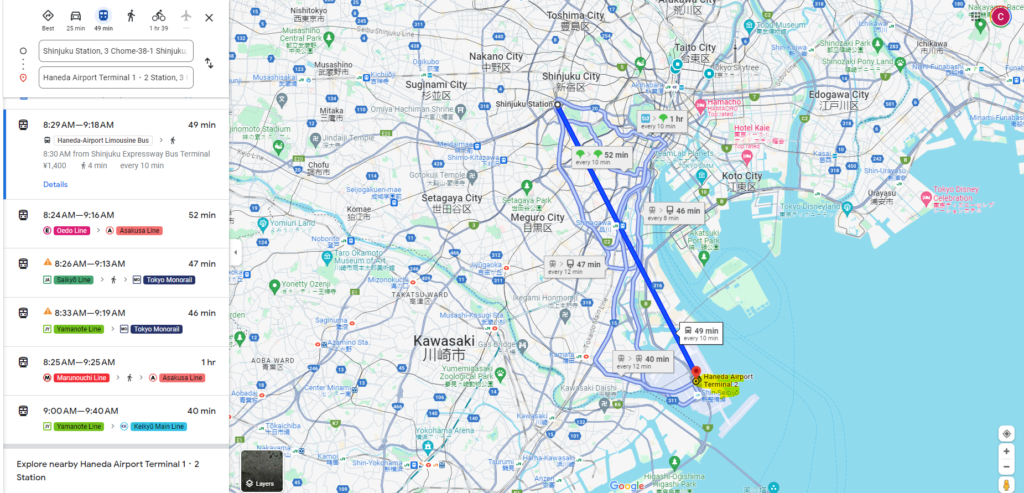
Depending on what lines lines you decide to take, the trip can be as short as 40 mins from Haneda to Shinjuku Station.

From Narita, the fastest route will take over an hour to Shinjuku Station.
If the flight to Narita is a lot cheaper than Haneda than it makes sense to fly into Narita. Otherwise Haneda will be much faster generally.
Preparing For The Trip
Alright, you know where you’re staying and booked the flight, great! What are some things to pick up prior to the trip?
Get a portable phone charger/ power bank. You will be using your phone a lot. Even more than at home since you’ll be running Google Maps pretty extensively (if traveling on your own, with no tour group) and taking pics and recording videos. A portable phone charger is key so you don’t have to stress when you’re phone hits 15% and you’re far away from your hotel (we’ve all been there!).
Get an esim. If you have a newish phone you should be able to purchase an esim and you absolutely should. It will far and away be the cheaper option.
Renting a pocket wifi will run about $5.50 (USD) per day so if you’re in Japan for two weeks it will run you around $77 USD. A physical sim card will cost around $40-50 for two weeks.
I used Airailo on my last trip to Japan and got 20 GB of data for $26 USD. I was in Japan for 22 days and left with a little less than a GB of data to use. For two weeks in Japan you’d likely need about 10 GB of data. 10 GB will cost about $18. Shop around for esims. They’re cheap and easy to install. Just be sure to install prior to landing so you can just turn on the esim once you land.
An esim is definitely a much cheaper route to go when traveling in general.
Don’t worry about exchanging money prior to your visit. If flying into Haneda, they have ATM’s located throughout the airport in convenient locations. You’ll get a better exchange rate by pulling cash here as well. It’s been a few years since I flew into Narita but imagine this is the same case there as well.
No power converter is necessary (if coming from the US). Japan’s voltage is 100V. Check out the chargers you intend to take. They should have a voltage between 100-240V, those will work fine in Japan. If anything you may need a prong adapter if using a 3 prong input. I believe Japan mainly has 2 prong
inputs.
While In Japan
There’s no trash cans in Japan. Well maybe not ANY trash cans but you won’t be seeing them frequently, if it all. If you get food to go and eat in the vicinity of the restaurant you won’t see any trash cans near by. What you’ll need to do is hand the trash back to the restaurant you bought the food from to dispose of. If you’re eating on the go it’s best to store the trash in your backpack and throw it away when you get back to the hotel.
Don’t worry about the huge amounts of change you accumulate. Without a doubt you’ll be carrying around a large amount of change within days of being in Tokyo. No need to worry about that, it’s easy to get rid of. There’s vending machines literally EVERYWHERE in Tokyo. Get some beverages and put that change to good use.
My favorite was going to 7-11. You can literally dump change into a coin collector to pay for whatever you purchase. You’ll see your total amount and as you put change in that amount decreases. It’s a great way to get rid of a variety of different change amounts.
Spend money leftover money on your IC Card (rechargeable prepaid travel cards used for public transportation) . If at the end of your trip you have an ample amount left on your IC Card, there’s other ways you can spend that amount outside of public transportation. Vending machines and convenience stores (again) come in handy. They both accept IC cards as payment options.
You’ll Figure It Out
There’s a million other tips that will be helpful but the above are just little things that came to mind when first wanting to write a blog post about helpful tidbits for first time travelers to Japan. They all seemed to be scattered around but not condensed into one article or blog post. Hope it helps!
